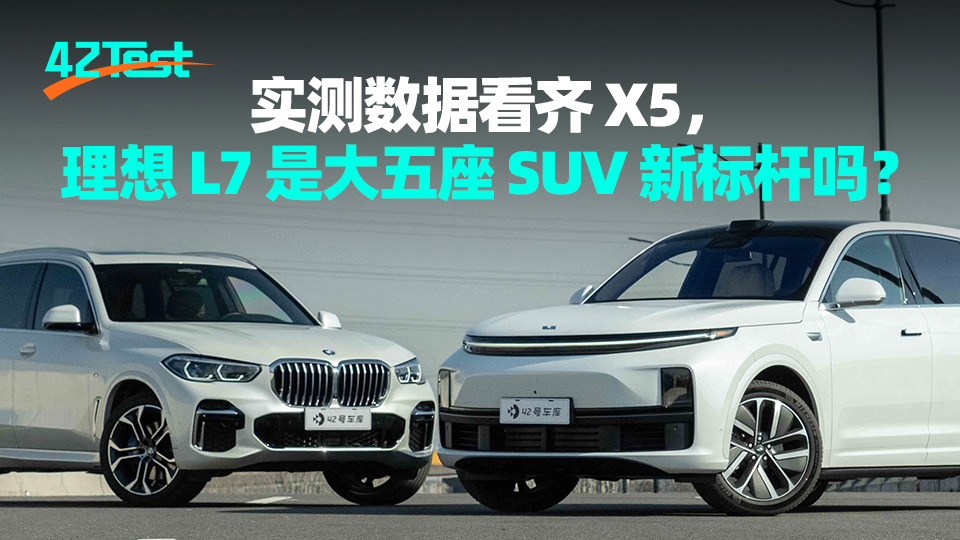On the last day of September last year, IDEAL officially released the brand’s third vehicle and the second vehicle in the L series, which is also the successor to the IDEAL ONE – IDEAL L8. At the end of this press conference, IDEAL planted an Easter egg and directly released the five-seat product of the L8 wheelbase – IDEAL L7.
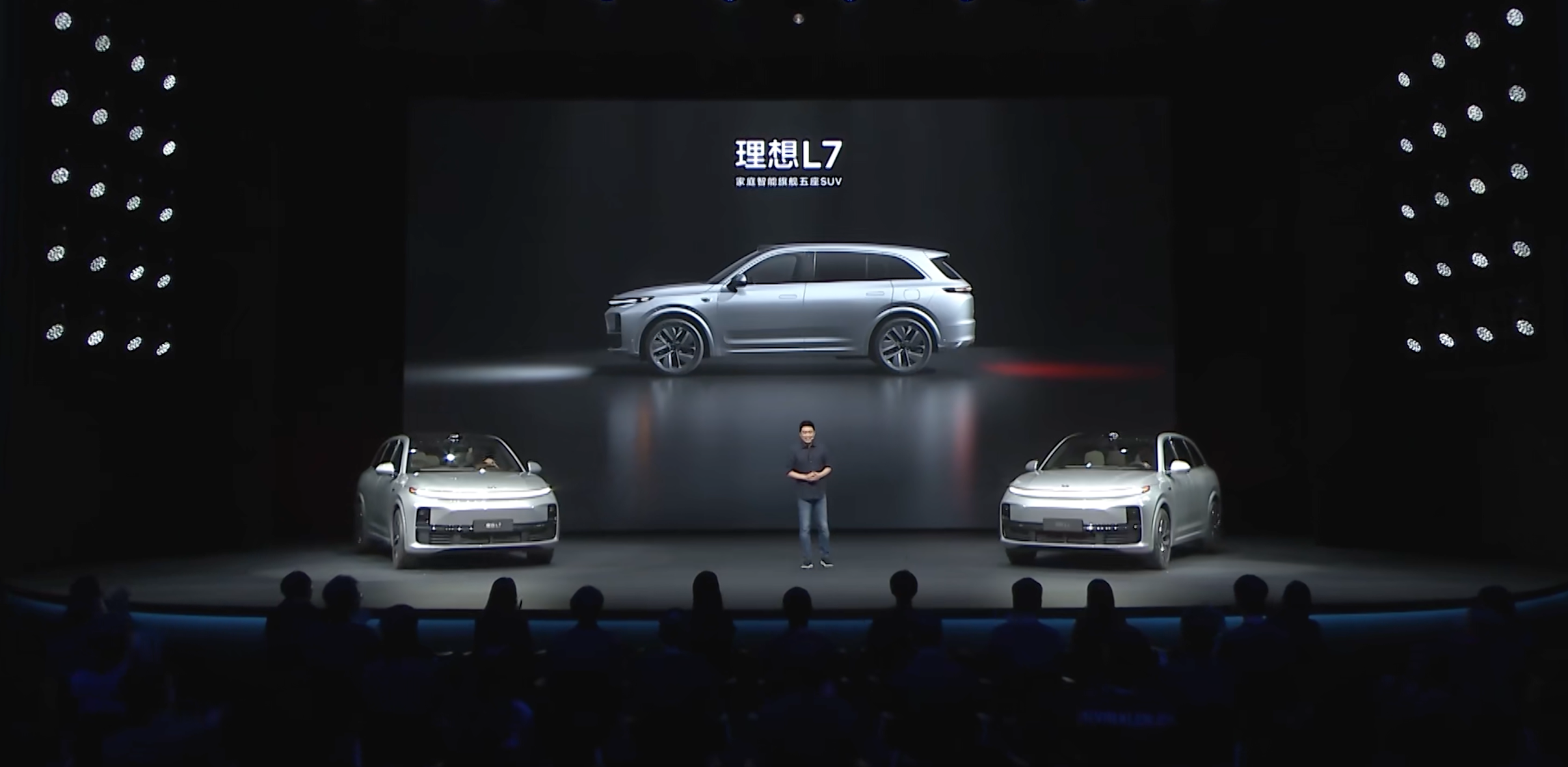
IDEAL L7 is positioned as a large family five-seat SUV, with three configurations of Air, Pro, and Max, priced at 319,800 yuan, 339,800 yuan, and 379,800 yuan respectively. All three configurations are 20,000 yuan cheaper than IDEAL L8, and the newly added Air version only lacks air suspension.
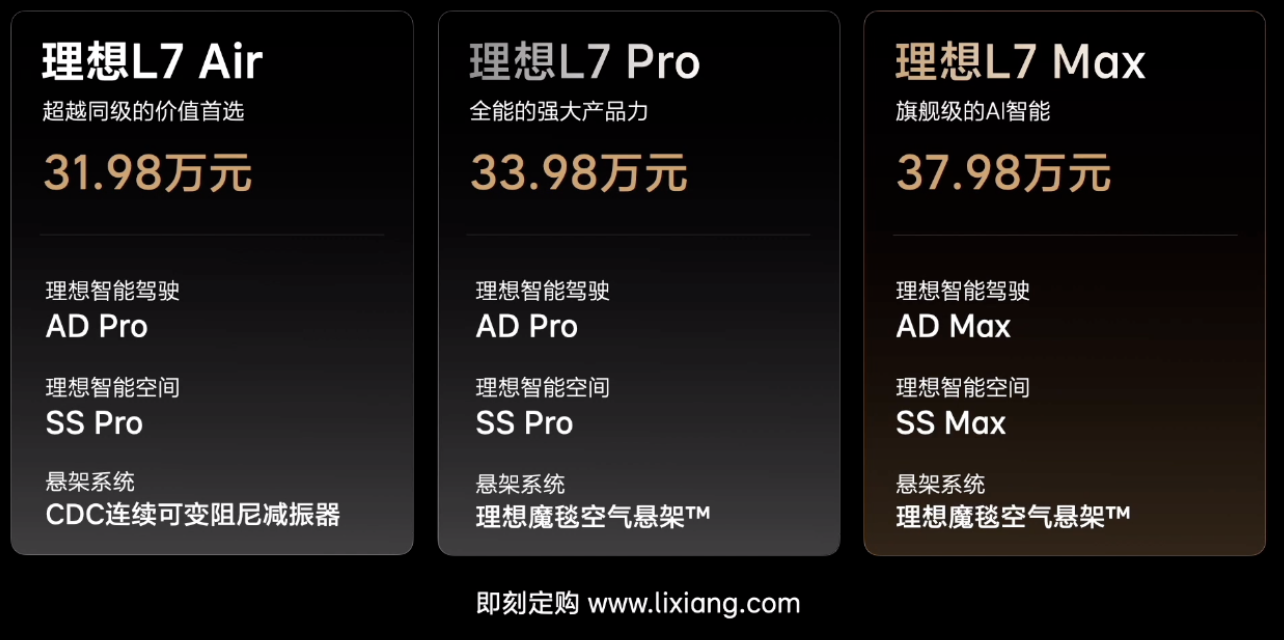
Four months later, we finally got a top-spec IDEAL L7 Max version and put it into the 42Test system for testing.
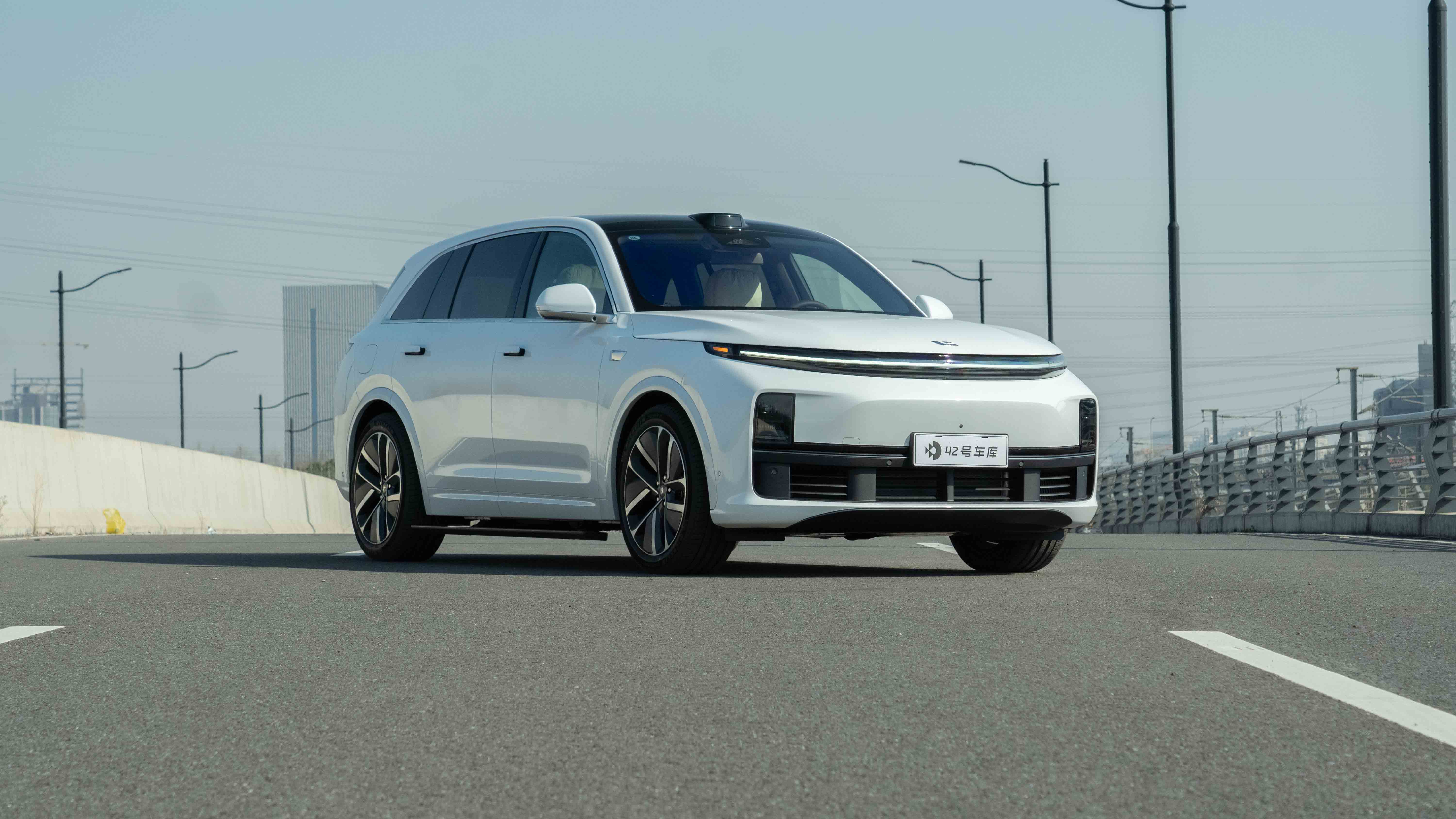
As a five-seat product with the same wheelbase as the IDEAL L8, what are the differences between IDEAL L7 and L8? Will it be more sporty and more suitable for whom? In order to let everyone understand the specific performance of IDEAL L7 more intuitively, we have directly borrowed the benchmark of medium and large SUV, a twice more expensive BMW X5 xDrive40Li exclusive M sports package (guide price 789,000 yuan). In this article, we will also compete with the BMW X5 in appearance, space, fuel consumption, driving, performance and other aspects, to see what the product strength of IDEAL L7 is like.
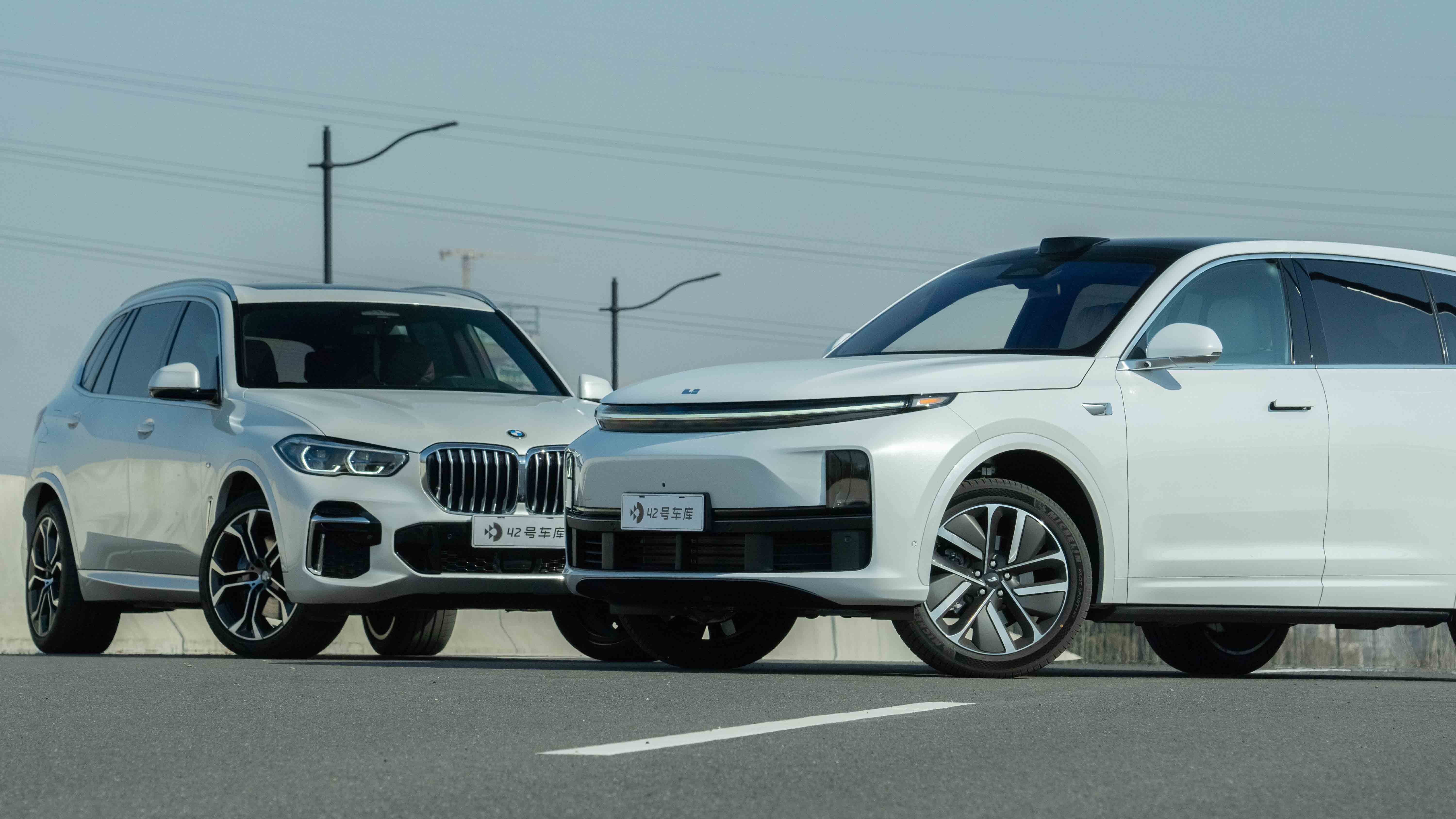
Appearance: More sleek and elegant
IDEAL L7 has a length, width and height of 5,050 × 1,995 × 1,750 mm, which are the dimensions of a standard medium and large SUV and the same level as NIO ES7 and XPeng G9. Compared with the benchmark of medium and large SUV, the BMW X5 with a long wheelbase has a size of 5,060 × 2,004 × 1,779 mm, which can be said to be almost the same. They both rely on their huge size to create a very atmospheric visual effect in appearance.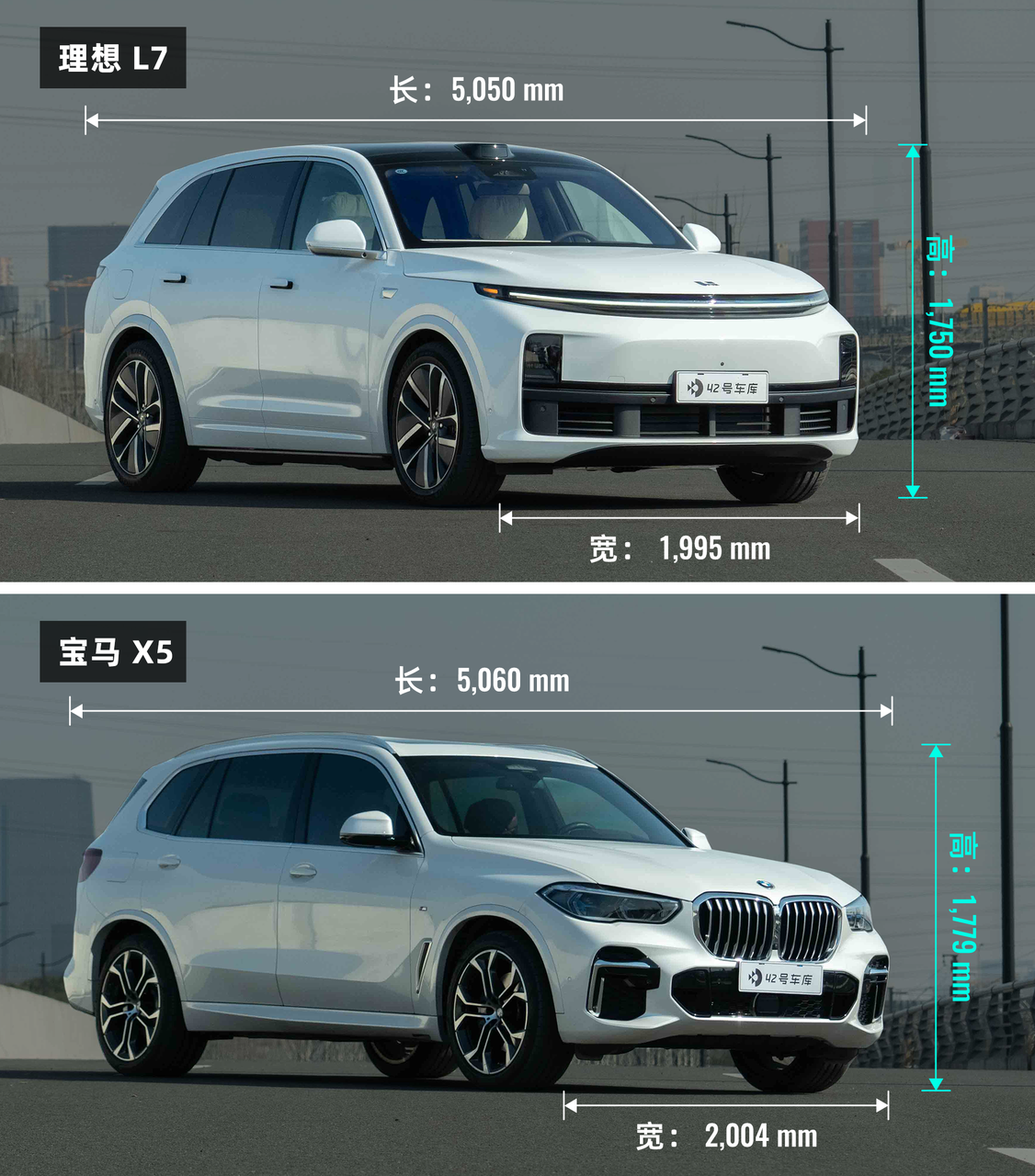
When the Ideal L7 was first unveiled last year, I couldn’t see the difference between it and the L8. However, after seeing the actual car, the overall exterior design of the L7 is almost identical to that of the L8 and even the L9, except that the L7 comes with an exclusive white metallic paint, making it almost impossible to tell from the L8 or L9 at first glance.
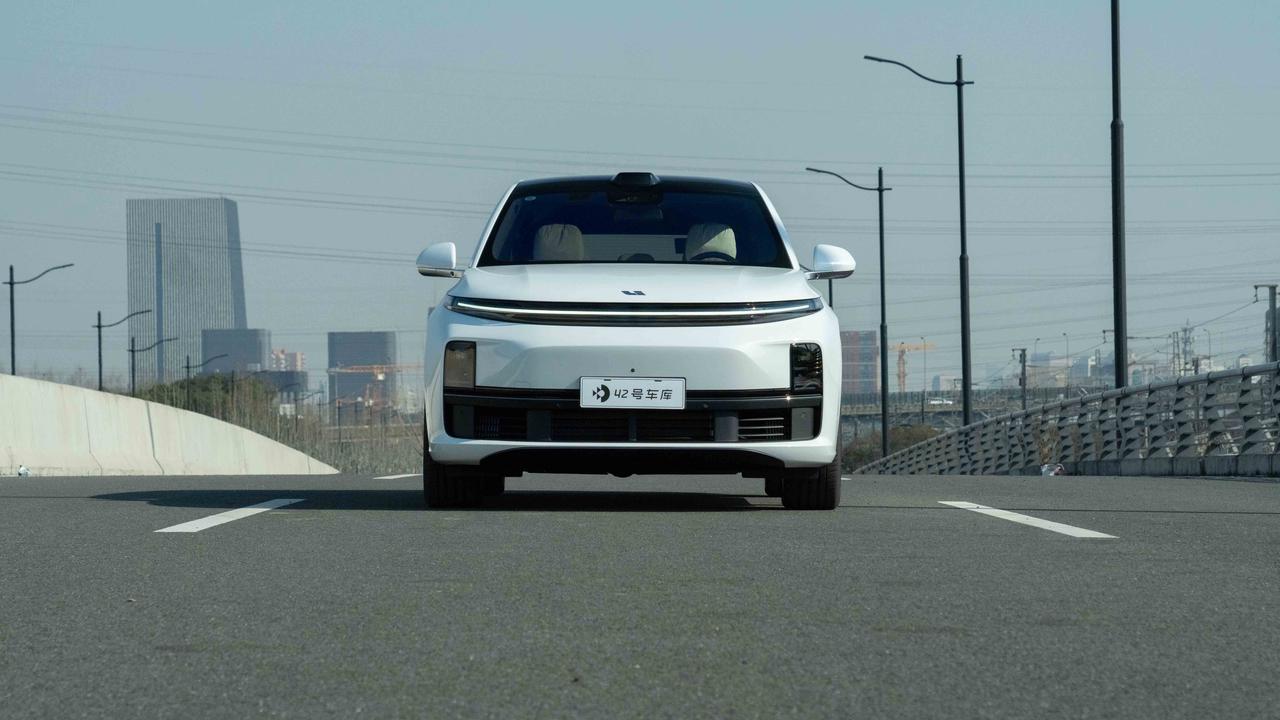
Therefore, in terms of frontal design, the L7 features a closed front face design that is familiar to everyone, an extra-long daytime running light belt, and a divided headlight design. If you look closely, the star-shaped headlight covers of the L7 are more gentle than those of the L8 on the side, and the blank area below the light belt is larger.
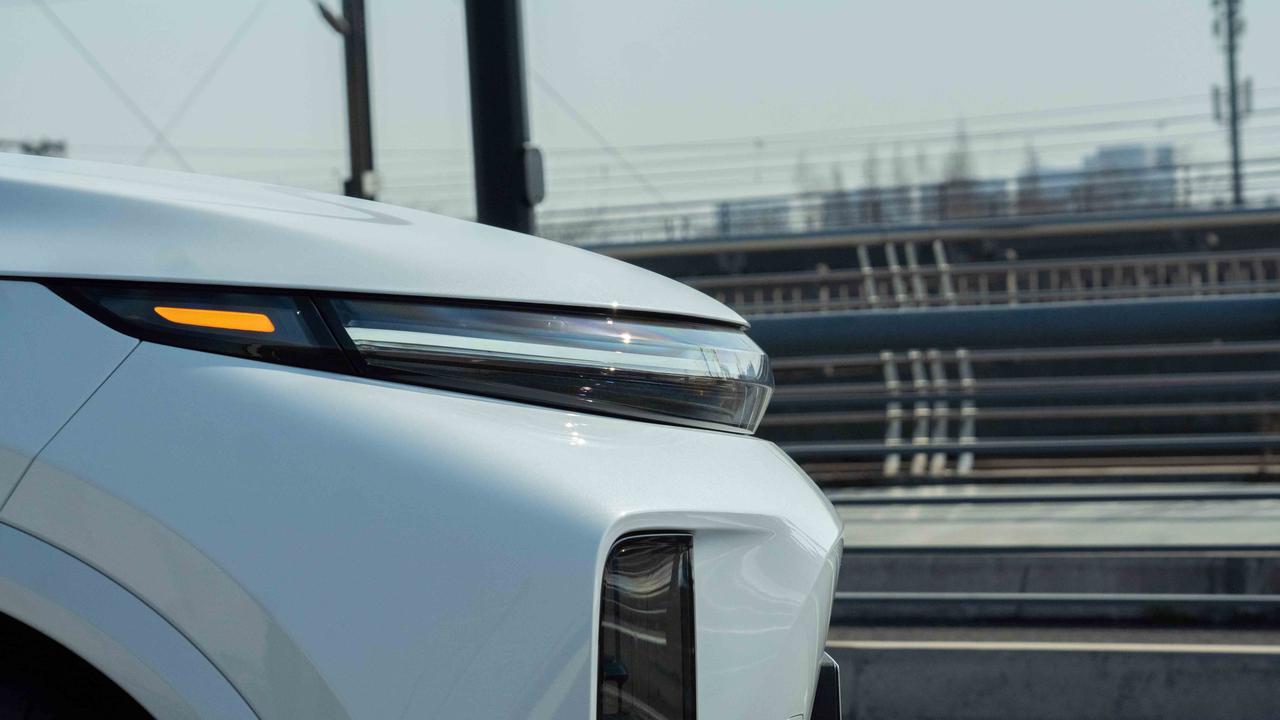
Ideal L7
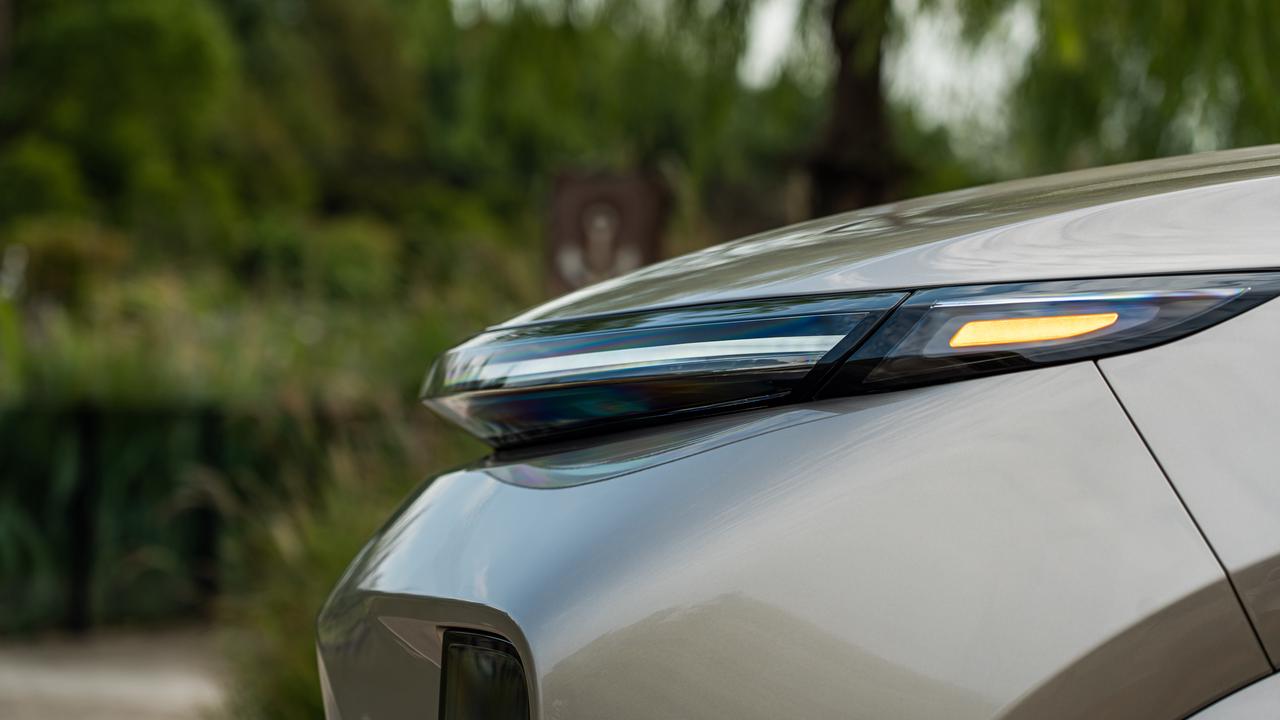
Ideal L8
The recognition of the L7 on the side of the body has improved significantly. First of all, the line below the door panel has been changed from the protruding design on the L8 and L9 to a concave style. Secondly, since there is no need to accommodate a third-row passenger, the small window area behind the C-pillar is smaller in size and closer to the shape of a triangle. Similarly, the angle of the rear window glass is inclined more, creating a sleeker posture. The Ideal L7 appears more elegant and powerful compared to the L8.
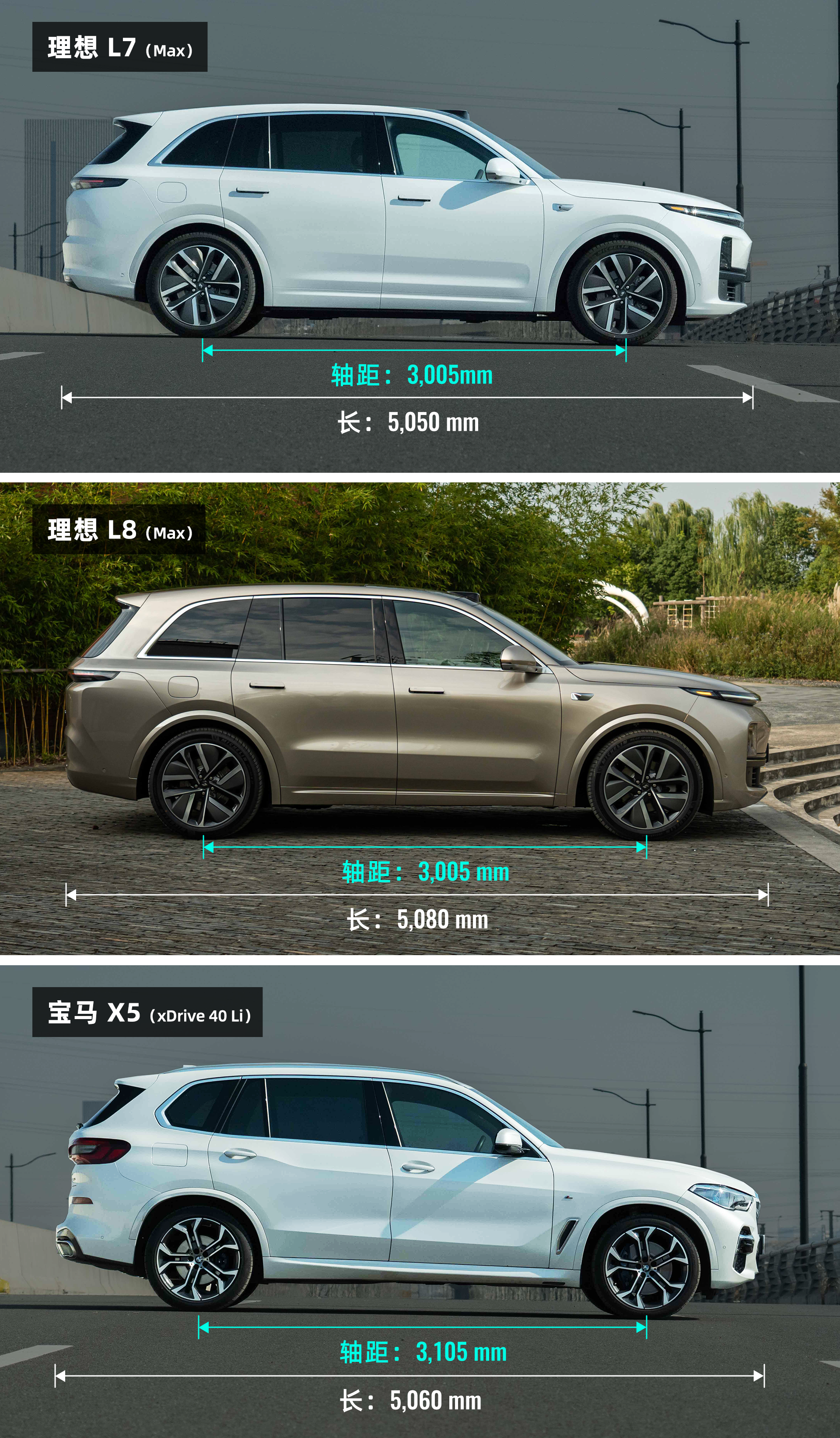
The length of the Ideal L7 is 5,050 mm, which is slightly shorter than the L8 by 30 mm, and the wheelbase is exactly the same as the L8. Compared to the extended wheelbase of the Brilliance BMW X5, the difference in length of the L7 is only 10 mm, while the difference in wheelbase is more significant, reaching 100 mm compared to the X5, mainly because the long-wheelbase X5 uses the same platform as the X7, and the wheelbase between the two is also identical. It’s worth noting that the advantages of vehicle length and wheelbase do not necessarily mean that the interior space will be larger. We will compare the space in detail later.Here is the English Markdown text with HTML tags preserved:
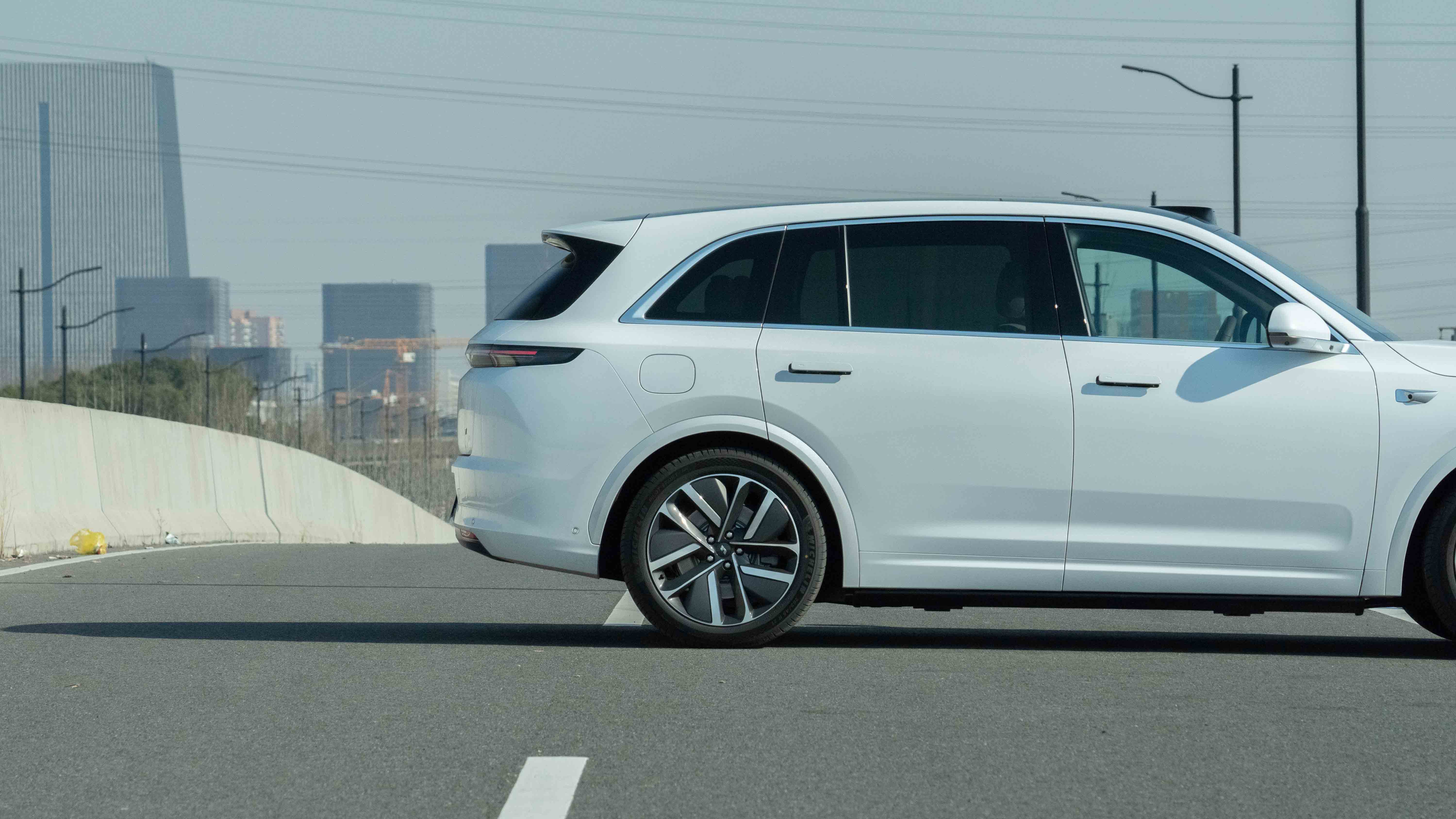
For wheel configuration, this L7 model has an optional silver-gray dual-color wheel hub worth RMB 10,000 and is equipped with Michelin PS4 quiet tires with a size of 265/45 R21 in the front and rear. This tire set has excellent grip on both dry and wet roads, and has a sporty feel, which will be of great help in subsequent acceleration and deceleration tests. The wheel selection for the L7 is identical to that of the L8.
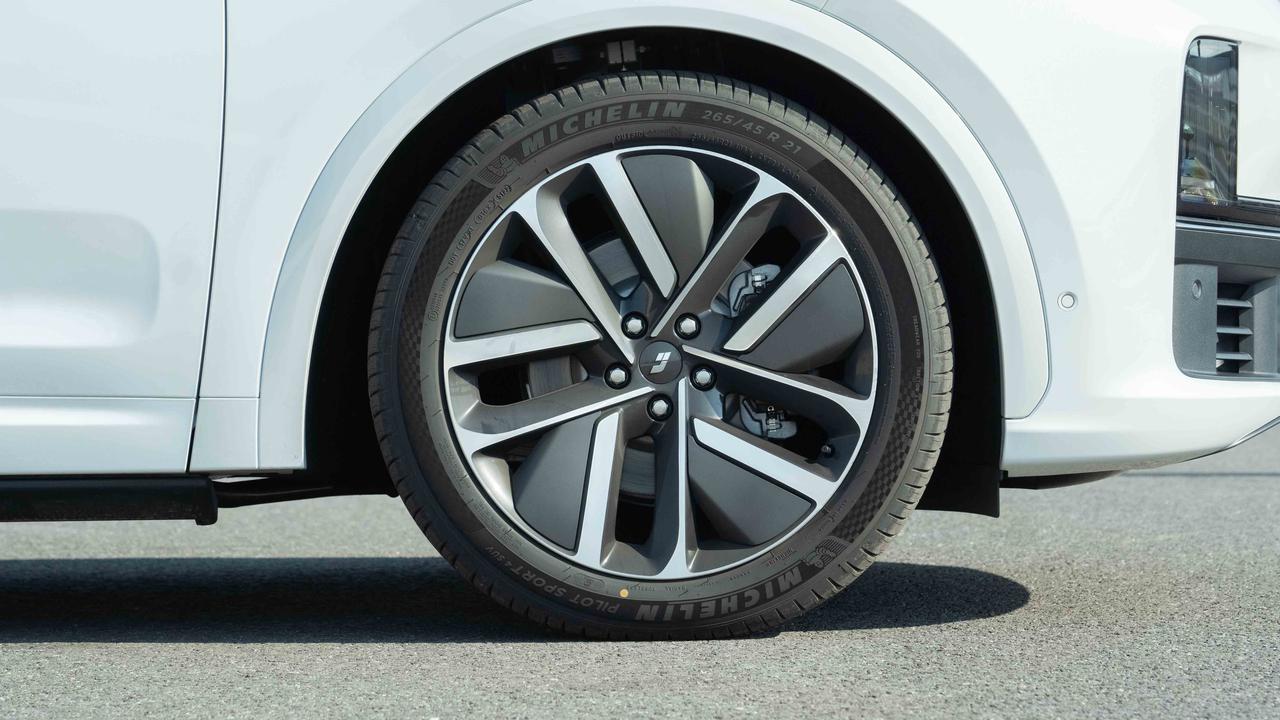
In terms of rear-end design, the Ideal L7 model still follows the overall style of the L8. The through-the-arc taillights and license plate frame placed on the bumper also make it easy to confuse the difference between the L7 and L8. If you look closely at the details, the L7 and L8 have switched the top and bottom of their tail lines. The straight line under the L8 taillights is moved to the rear bumper of the L7. Similarly, the broken line on the L8 rear bumper appears under the L7 taillights.
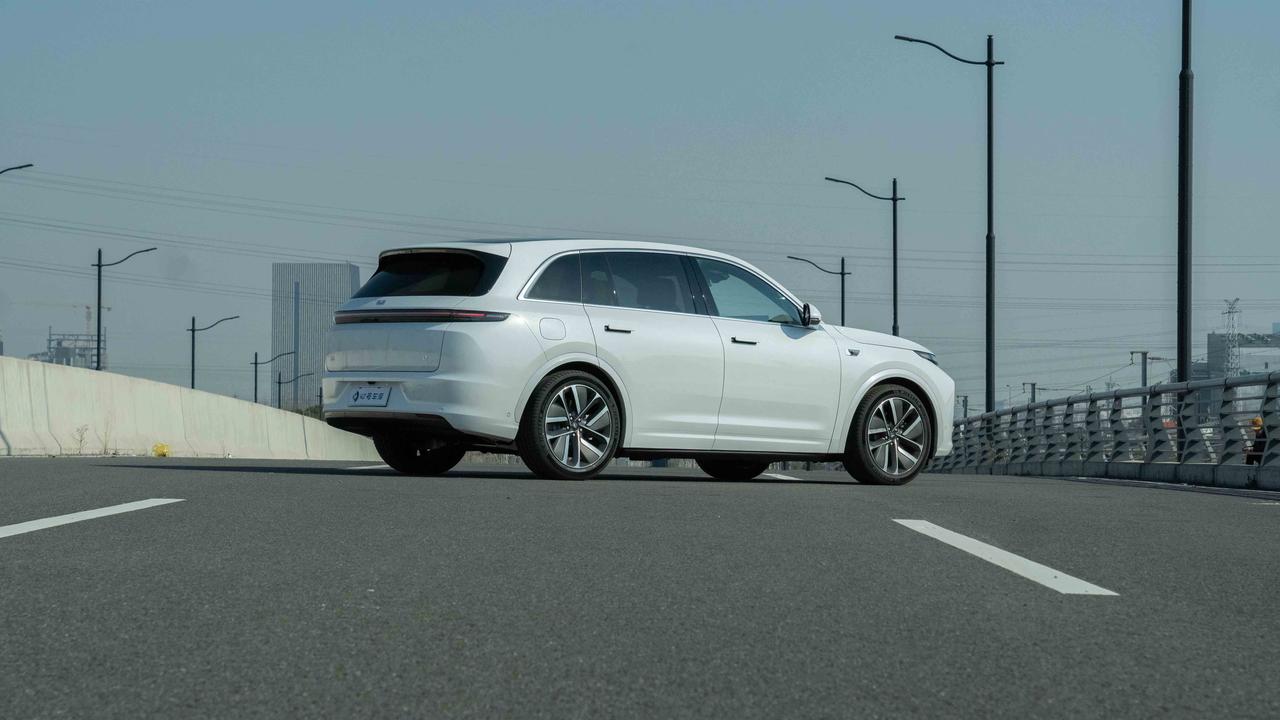

When L8 was first released last year, my colleagues and I had some disputes about placing the number plate frame on the rear bumper. This practice is relatively rare on mid-to-large-sized SUVs. Generally, placing the number plate frame on the tailgate of the trunk can balance the visual center of gravity of the tail and make the rear of the car look fuller and more layered. This is how NIO ES7, Xpeng G9 and BMW X5 do it.
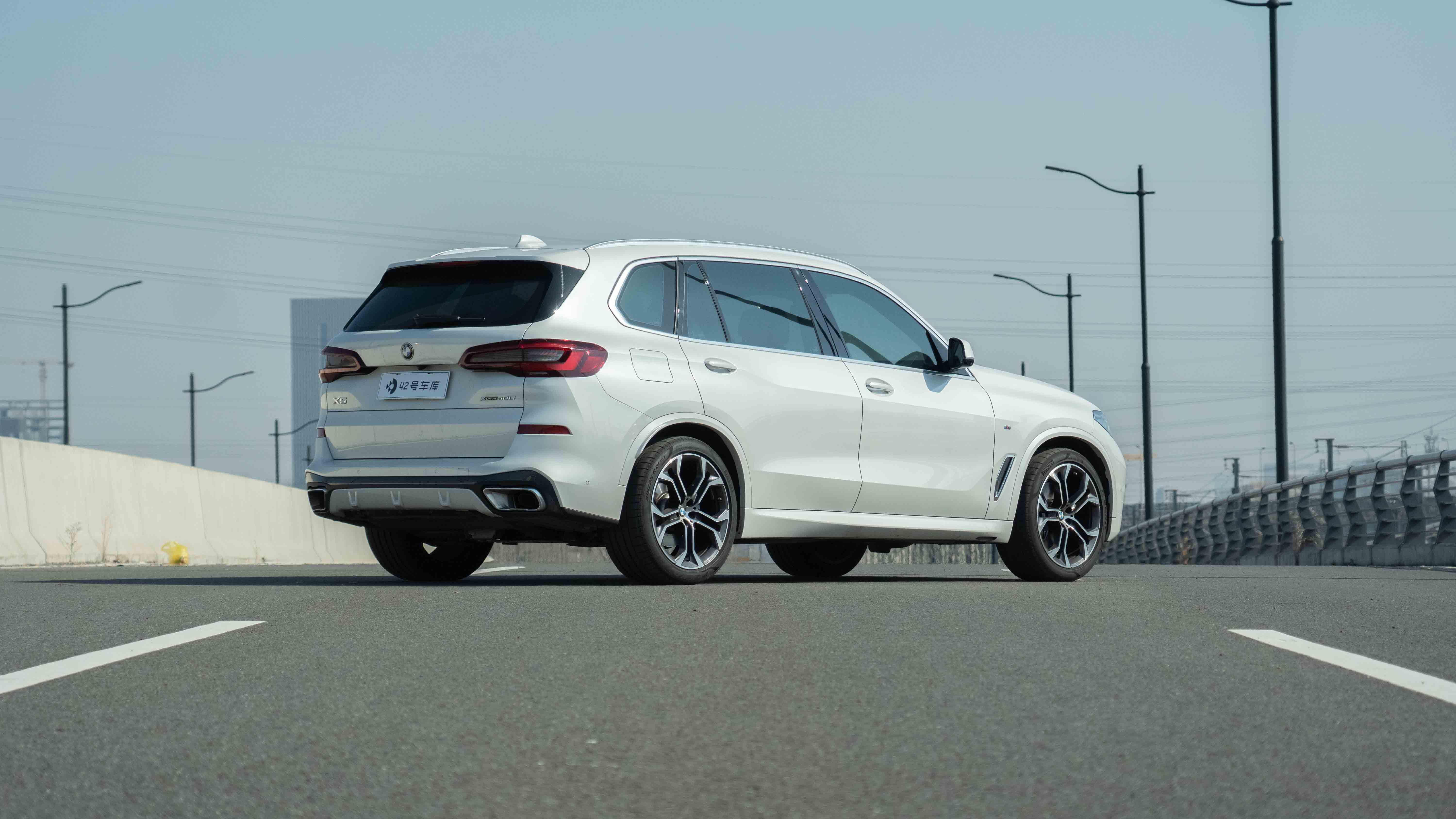
Small two-door cars like the Golf and rear-wheel drive BMW 1 Series generally put the license plates on the bumper because their body was originally low and narrow. If they put the license plate on the tailgate, it would be particularly crowded.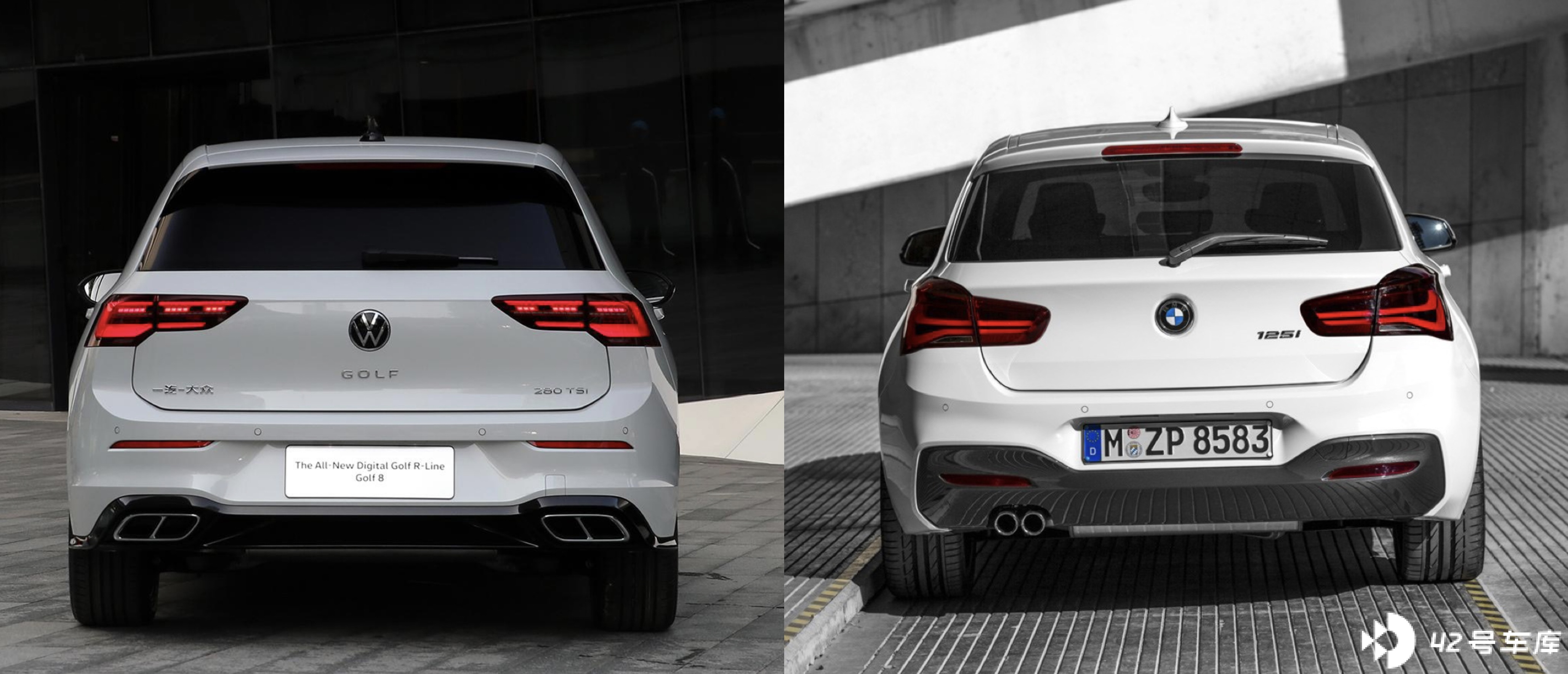
After four months, I have gradually adapted to the rear-end design of the L8, and the Bentley Bentayga mid-term facelift has moved the license plate frame to the rear bumper. I can appreciate the beauty of the design of the L7 and L8. The slim-shaped through-style taillights and the blank space outlined by the lines make the original large tailgate area of the L7 and L8 look solid and elegant at the same time.
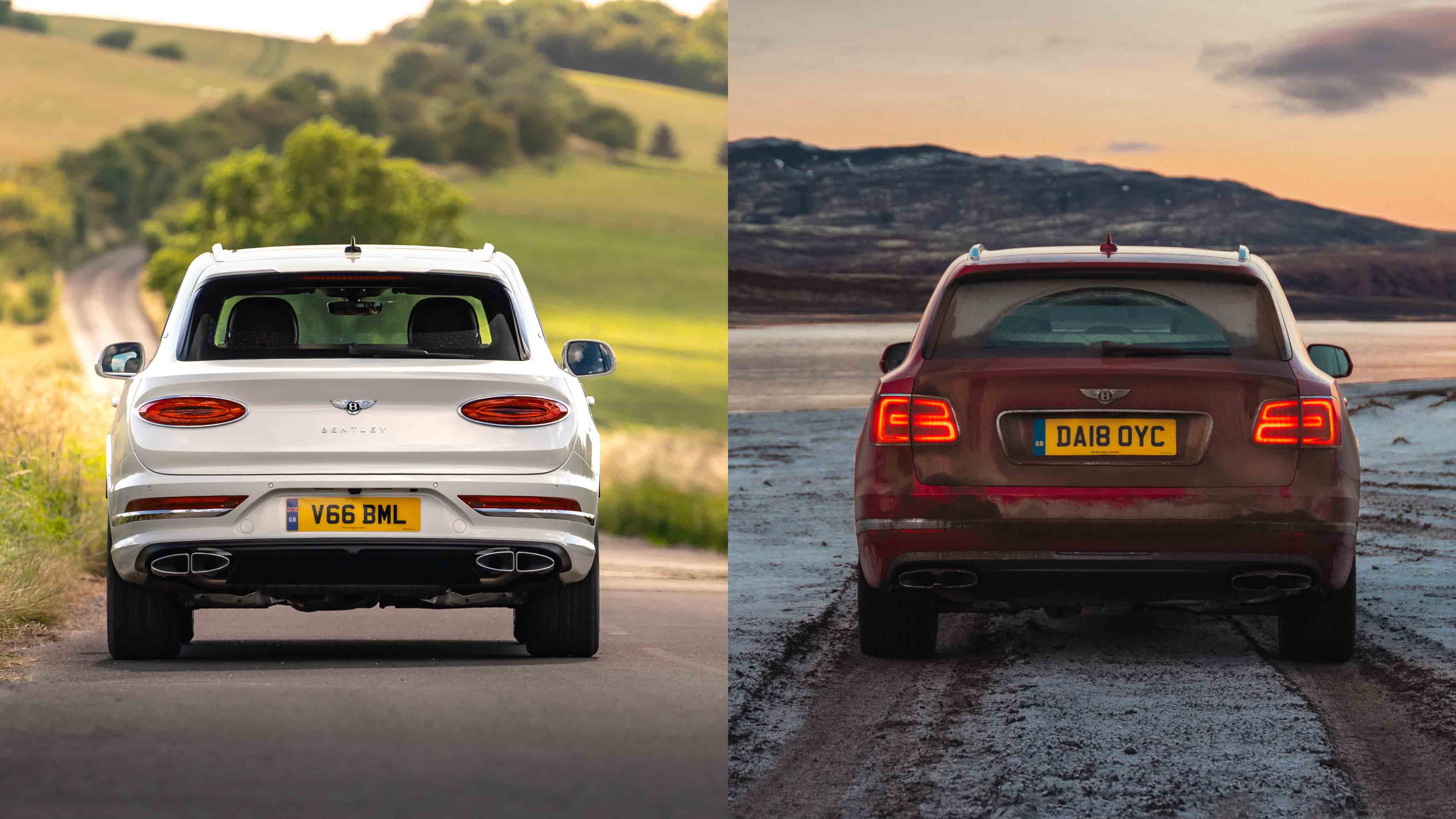
This time, the Ideal L7 has also undergone a new change in the taillights. The rear-facing ADAS camera is placed in the middle of the high-mounted brake light, splitting the brake light into two parts. Therefore, at night, the Ideal L7 can be recognized by seeing the two-part brake light, which has a very high recognition rate.
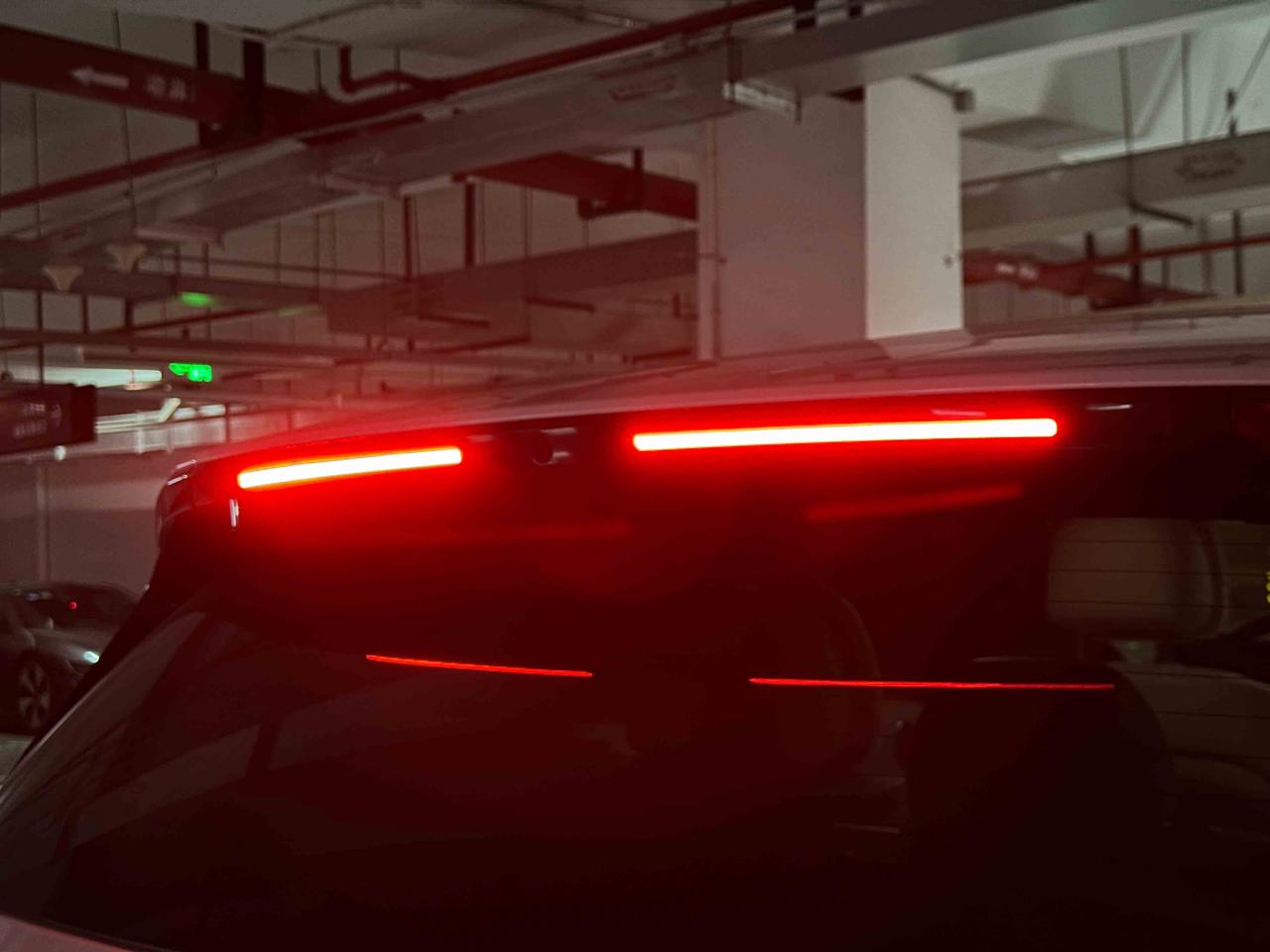
The opening of the trunk of the Ideal L7 is almost the same as that of the L8. Compared with the representative sky and earth tailgate of the BMW X5, they both have their own advantages and disadvantages. The opening method of the Ideal L7 is more traditional, and the threshold is flush with the trunk floor, which is very convenient for taking and putting large items.
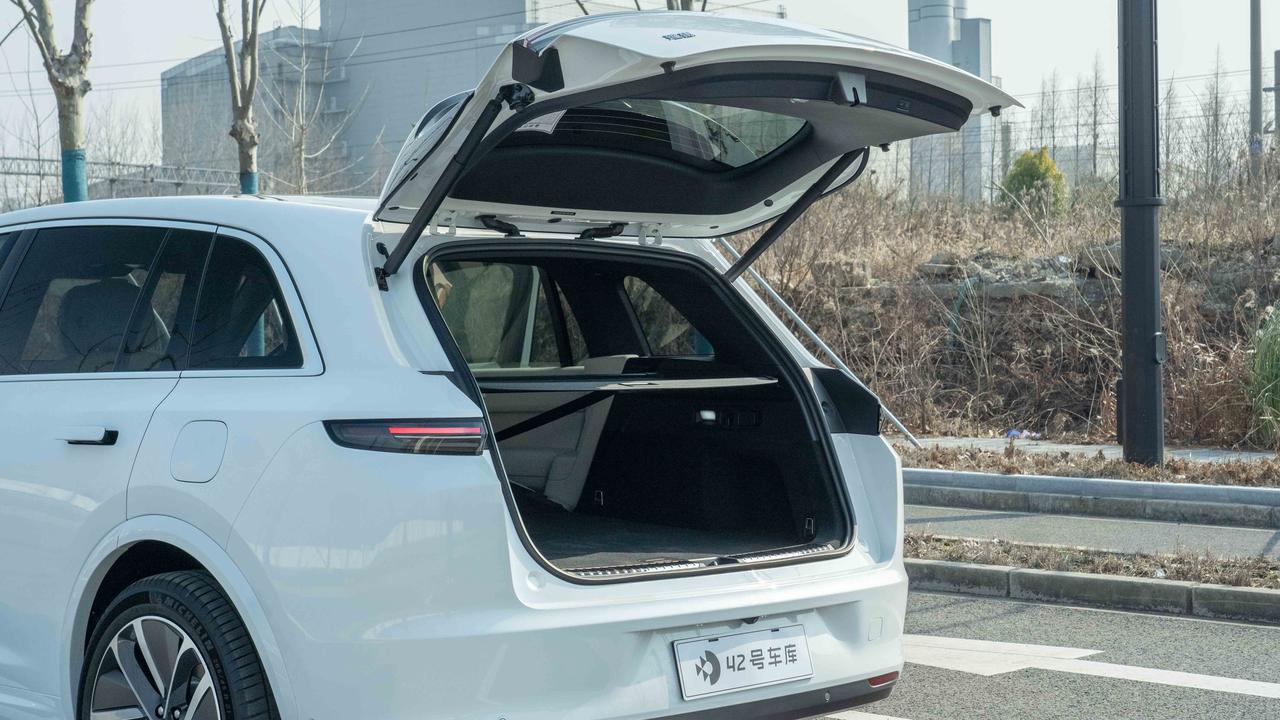
The disadvantage of BMW X5’s sky and earth gate is that when you only open the upper half of the door, the lower half of the tailgate is closed with an added step in the vertical direction, and the open state will have an extra segment in the horizontal direction. For someone with small hands like me, it is undoubtedly more difficult to take objects from the deep space of the trunk.
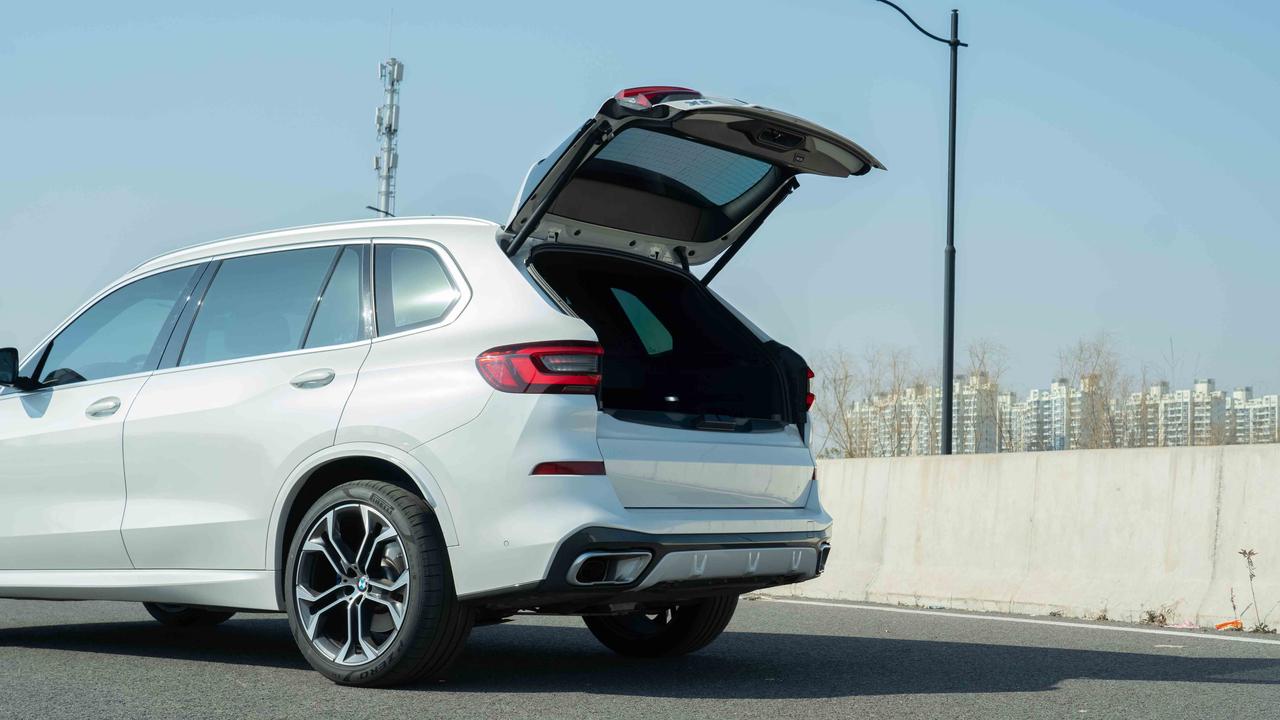
The advantage is that for this type of medium-to-large-sized SUV, the tailgate area is very large, and in most parking lots, if the parking position is close to the wall, it is easy to scratch the wall when opening the tailgate. If you don’t want to move the vehicle, the BMW X5’s sky and earth gate is more advantageous in terms of opening conditions.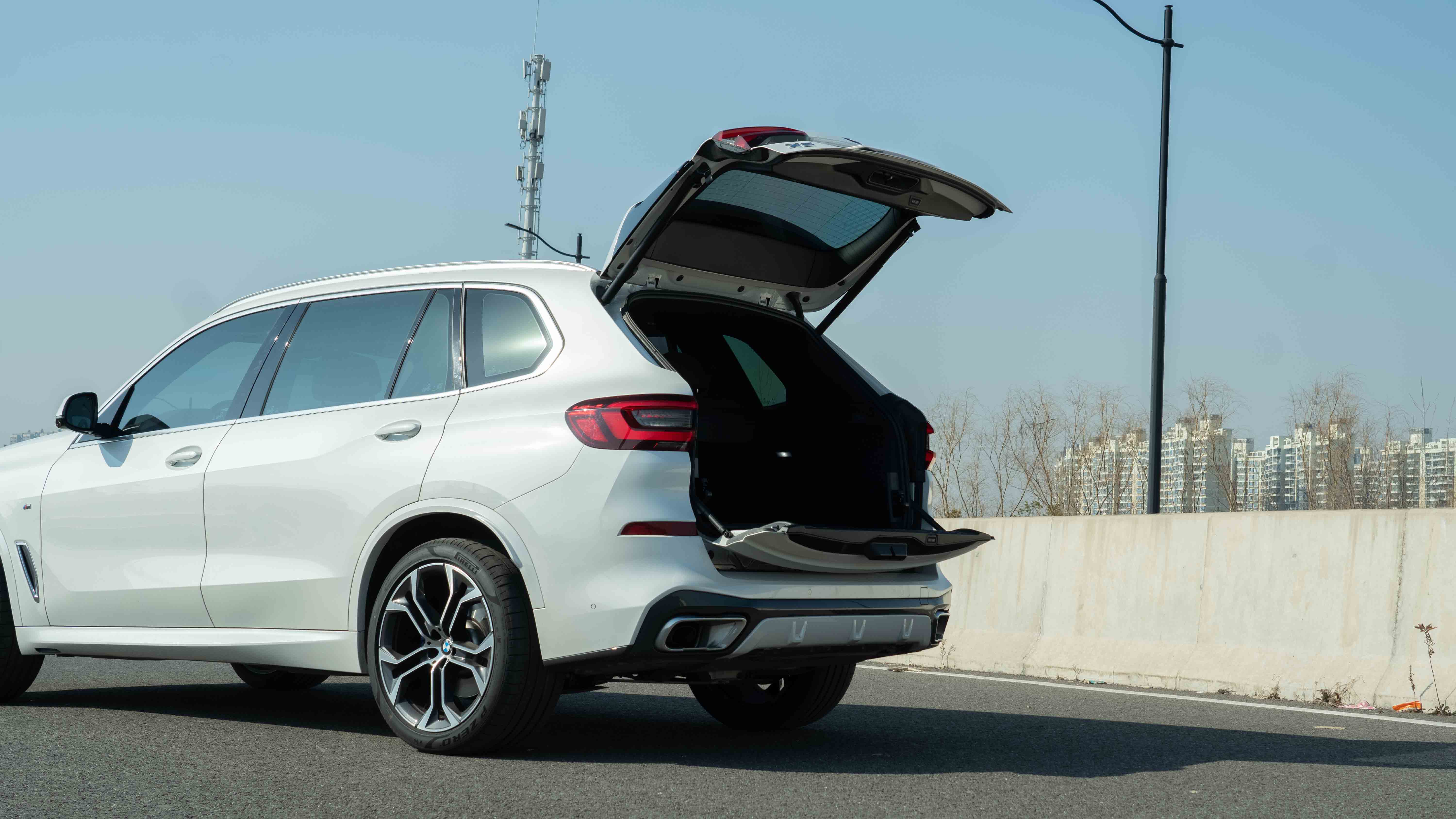
In terms of actual space in the trunk, there is not much difference between the ideal L7 and the BMW X5, making them both spacious enough for transporting large items or luggage for five people.
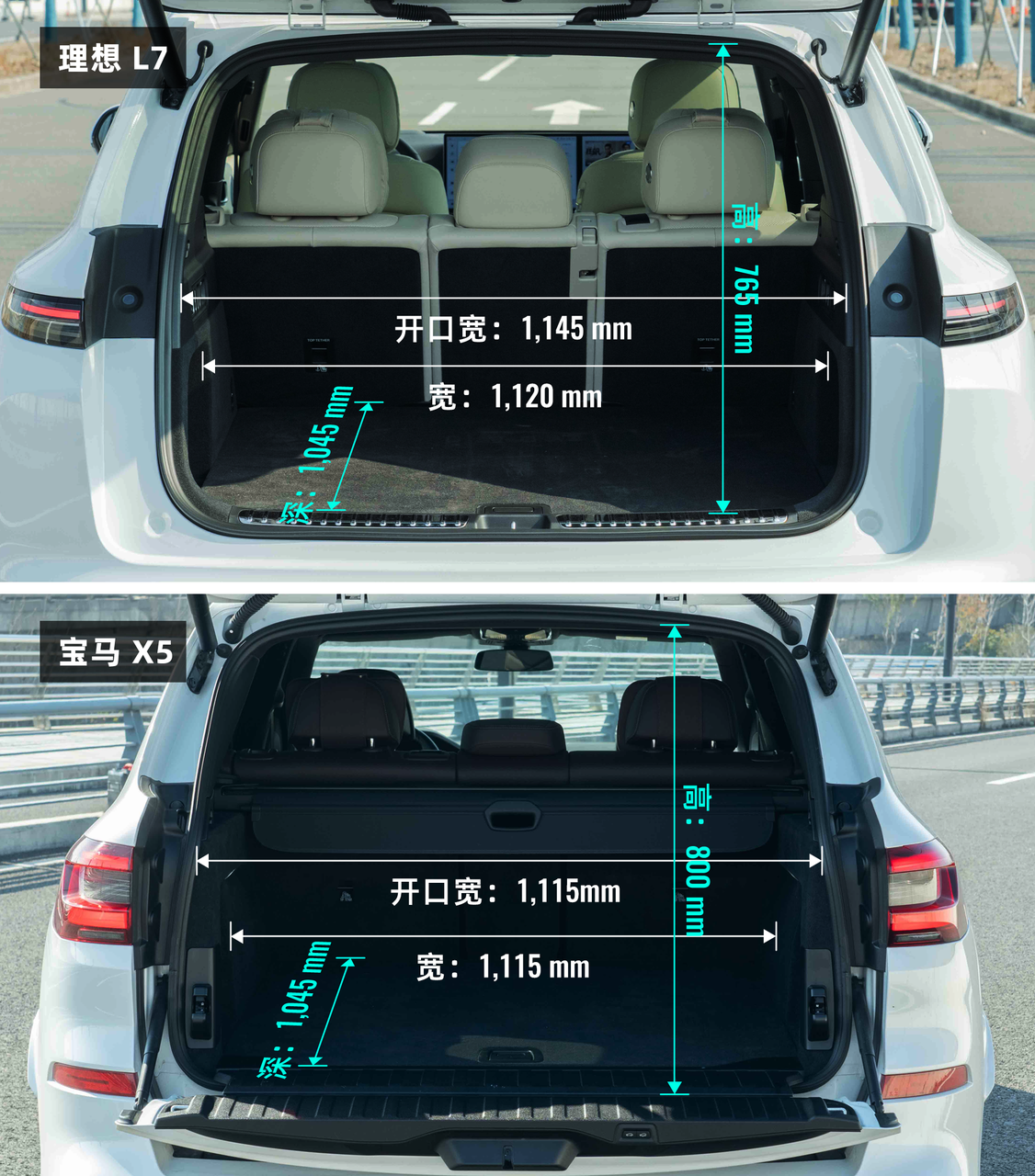
Furthermore, the second-row seats of both cars support a 4/2/4 folding ratio, which can form a flat space with the trunk when folded down, making it easy to transform into a double bed.
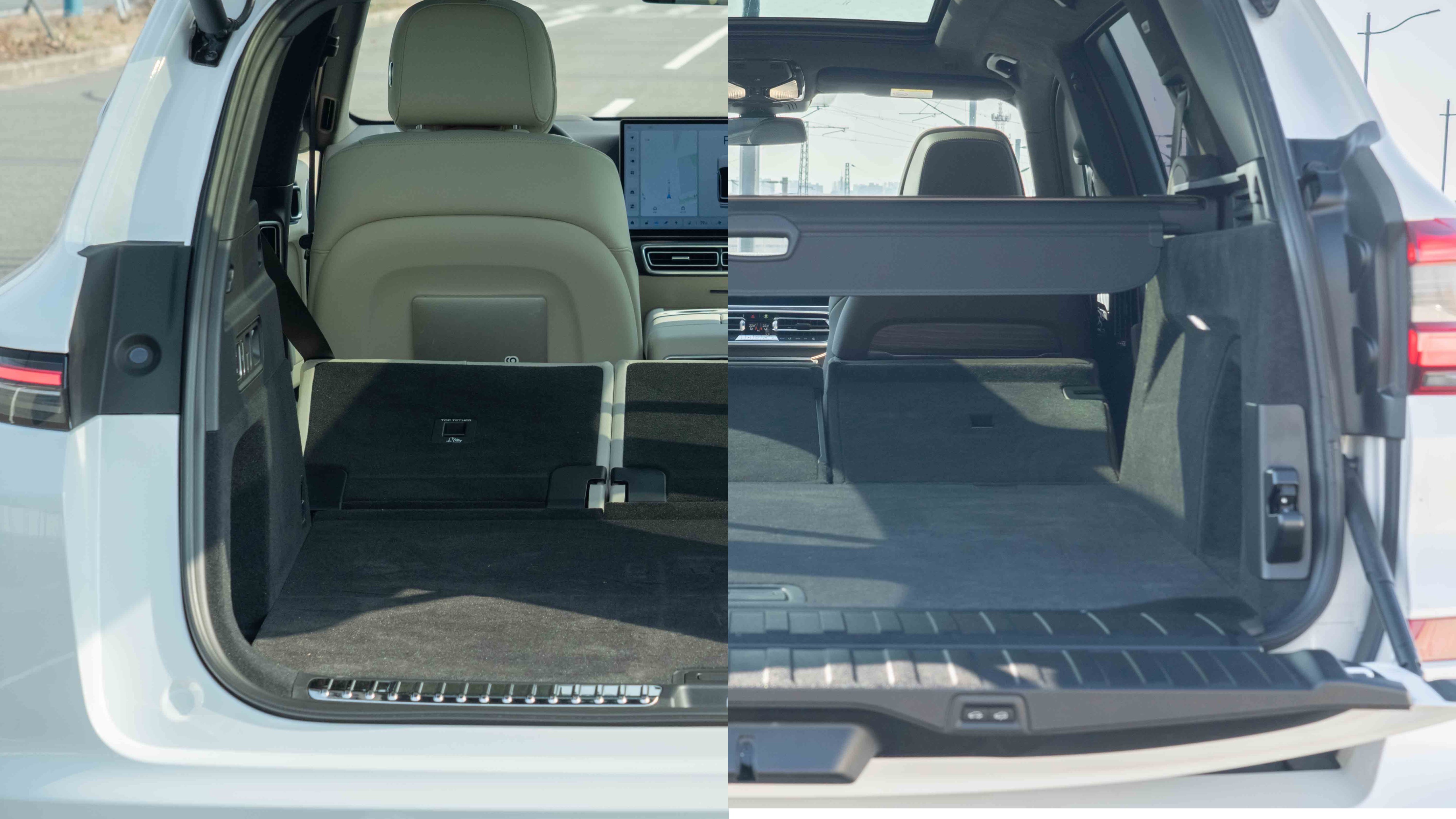
Compared to the BMW X5, which has a high price of up to 789,000 yuan, the standard second-row electric folding seat of the ideal L7 is very considerate, and there is also a 12V power supply interface on the right side, which are both absent in the X5.
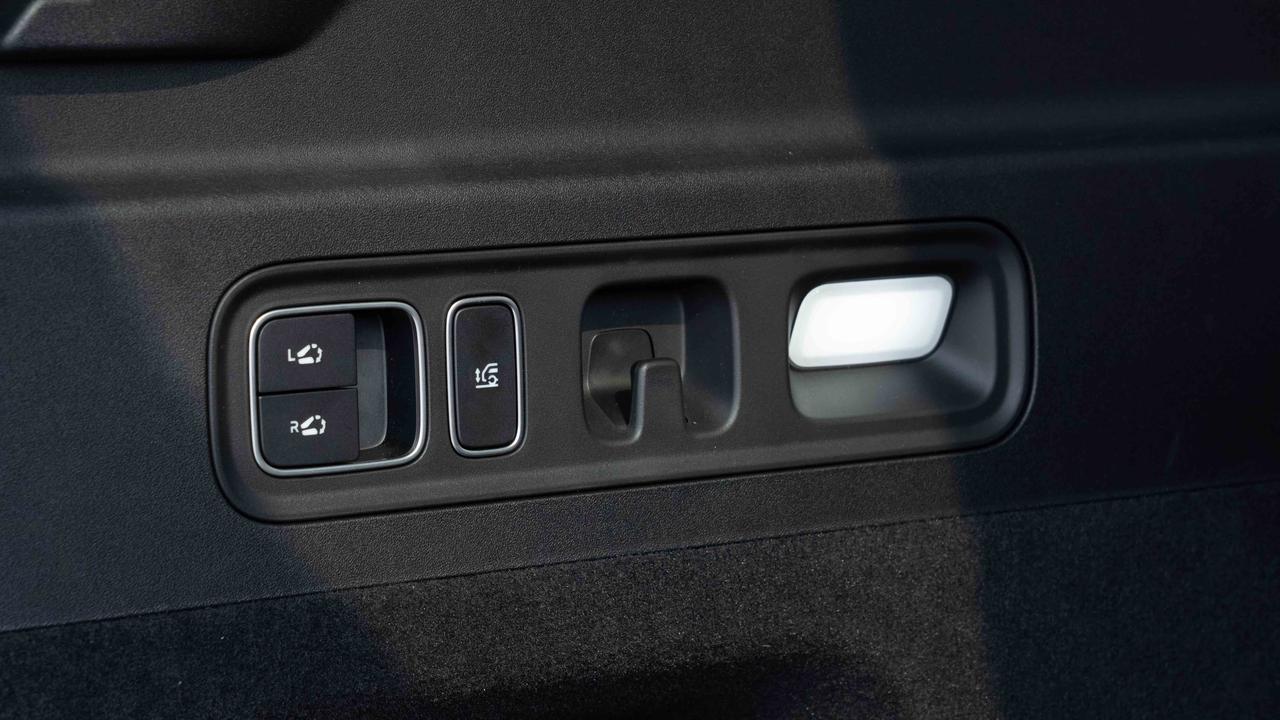
Both the ideal L7 and the BMW X5 have a sunken space under the trunk floor. The ideal L7 has fixed on-board tools, while the X5’s sunken space has a larger available space and corresponding sound insulation material. It is worth mentioning that both cars have storage space for the storage of sunshade curtains in the sunken space, which is commendable.
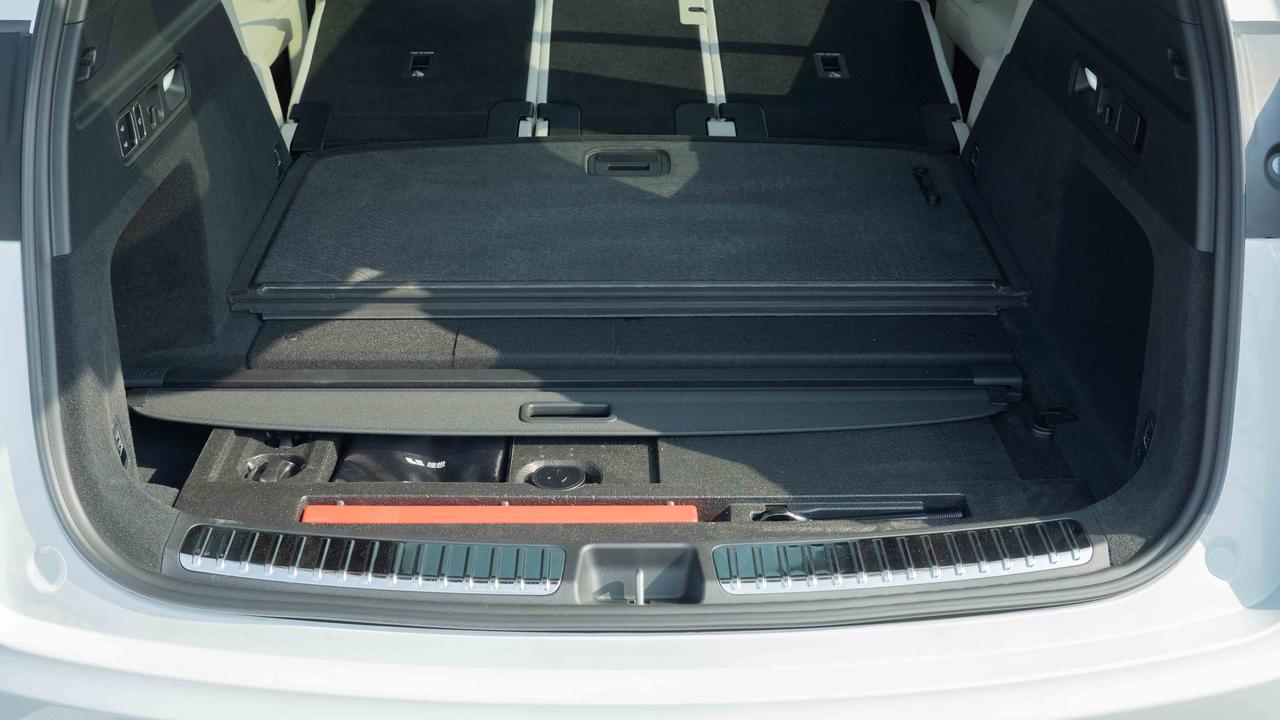
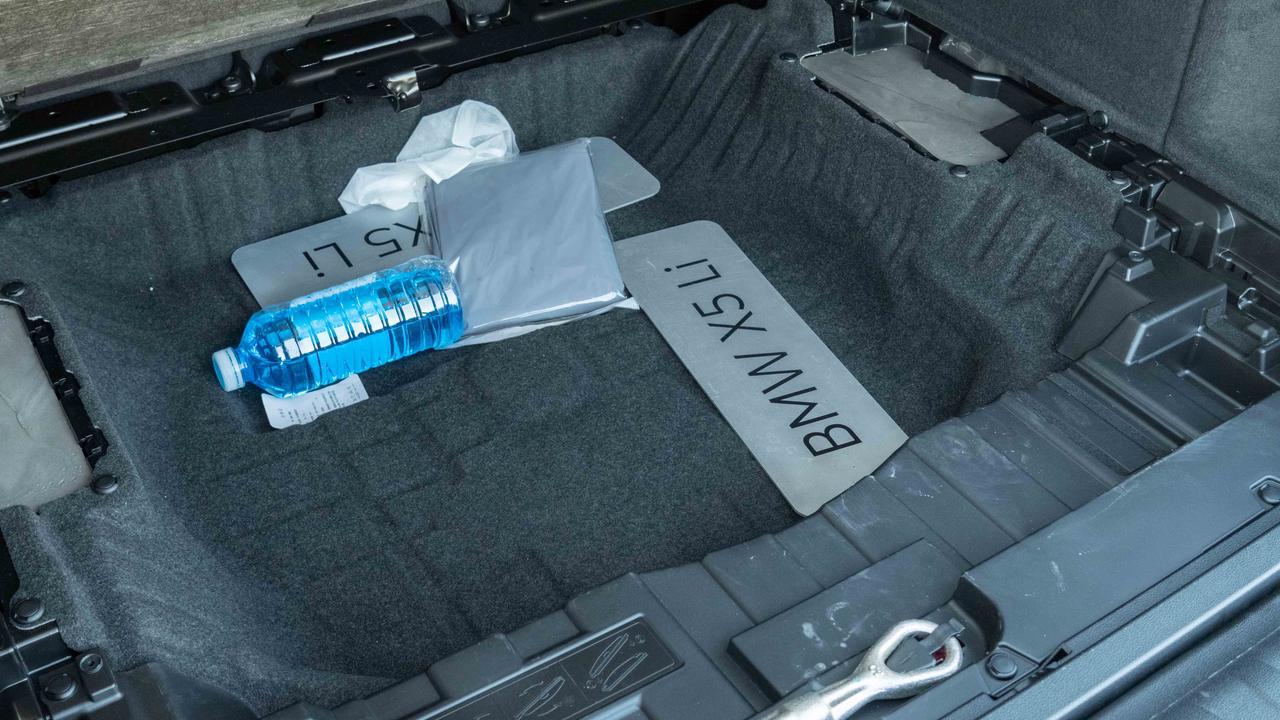
Overall, in terms of appearance, both the ideal L7 and the BMW X5 embody their own style under the premise of inheriting their respective family designs. The design of the BMW X5 has been used since 2019 and has also launched an overseas mid-term facelift version today, which is in line with the design style of its big brother, the X7. However, this design, when facing many new energy products today, may look less future-oriented. The ideal L7, on the other hand, continues the successful design of the L9 and makes its appearance more suitable for the five-seat layout, becoming the most elegant ideal product.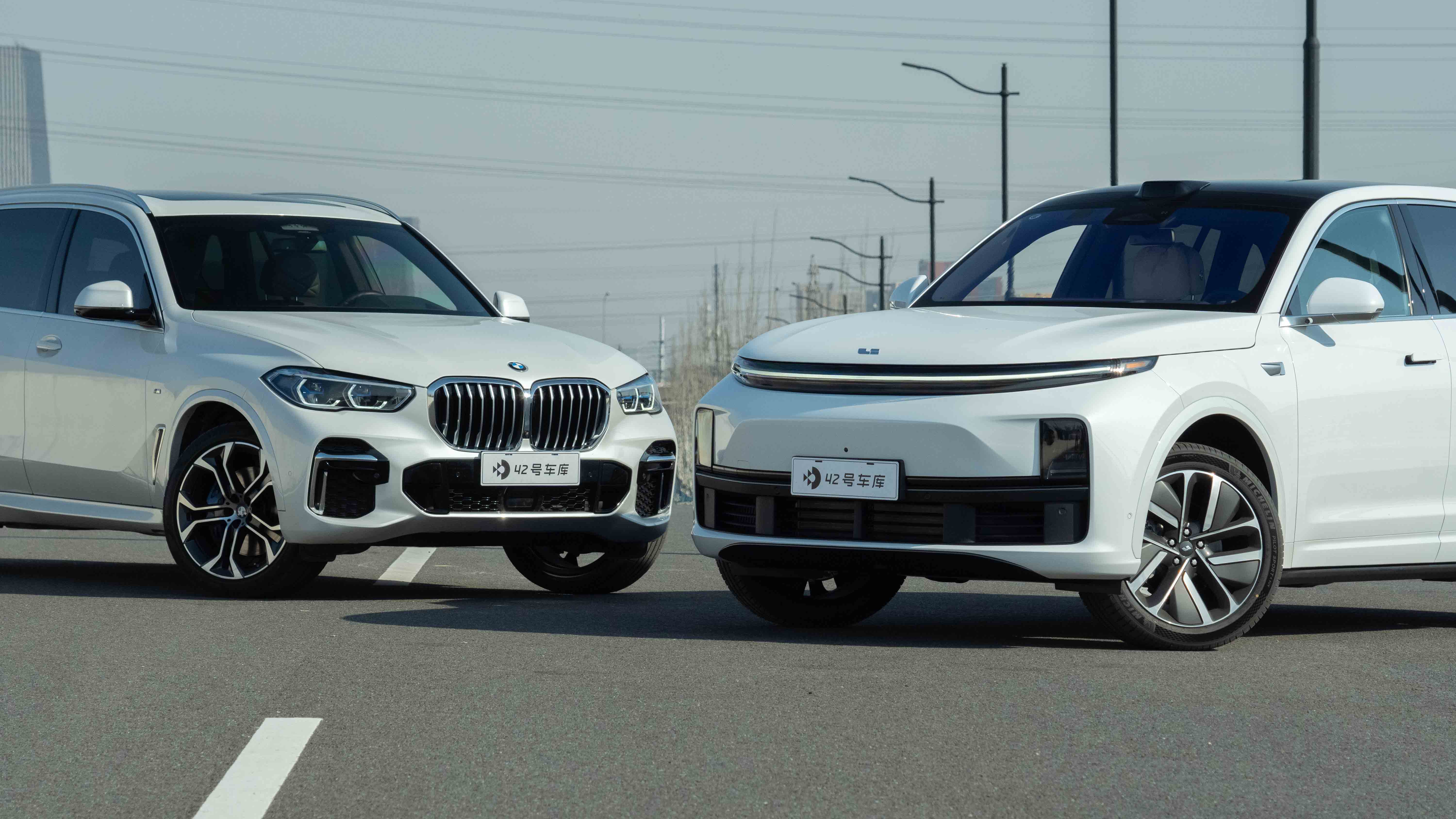
Space: L7’s Semi-Reclining Rear Seats are the Highlight
Cabin Comparison
As expected, the interior of the Ideal L7 is highly consistent with the L8, with the exception of the 3D car modeling on the central control screen indicating that it is an L7. There are no other differences from the L8. The middle still has two 15.7-inch LCD screens, with a resolution of 2,880 x 1,620, a 16:9 aspect ratio, and a refresh rate of 60 Hz. The model we experienced this time was the Ideal L7 Max version, the top-of-the-line version, so the cabin configuration also reached the SS Max level.
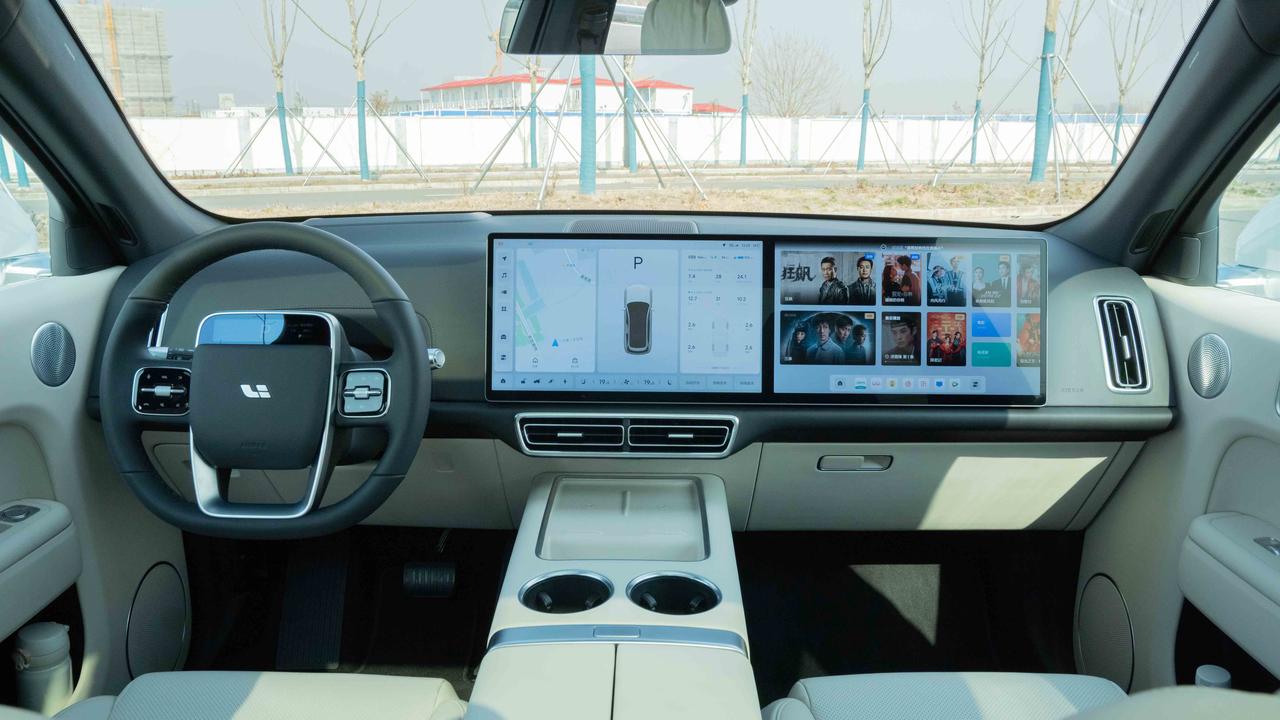
The five-screen 3D space of the vehicle (interactive screen + HUD + central control, co-pilot screen + rear entertainment screen) is driven by two Qualcomm Snapdragon 8155 chips (RAM 24G + storage 256G). In actual sliding and clicking actions, the Ideal L7 can give very fast and responsive feedback.
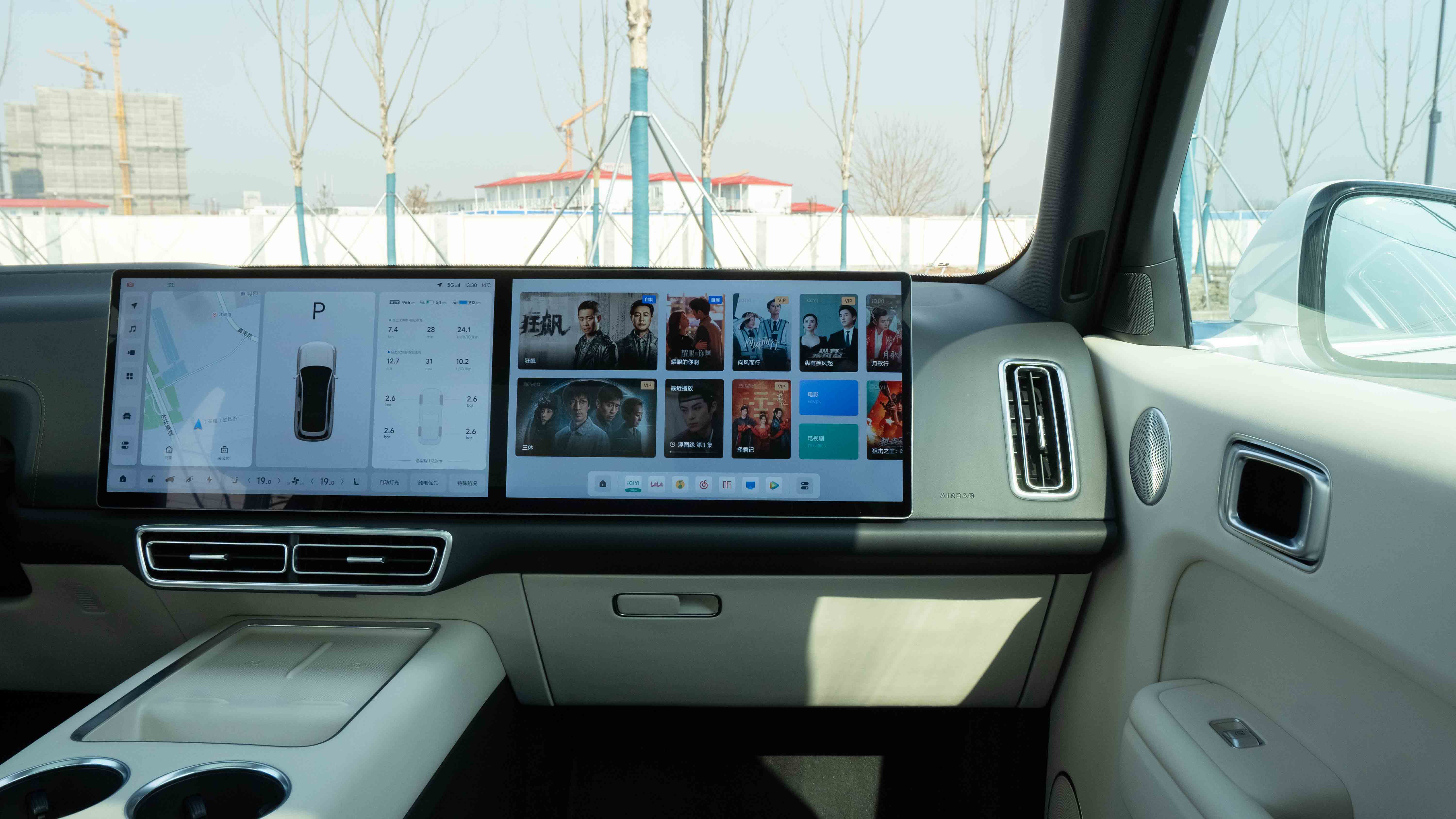
The interior has black and white, black coffee, and black and orange dual-color interiors to choose from. We chose the black-and-white interior for this car, with the main interior colors being white, presenting a very simple and warm texture, but it requires more effort to maintain it in the later period. If you want to be more eye-catching, you can choose the black and orange dual-color interior, which is quite energetic and high-end (pictured is the L8 Max).
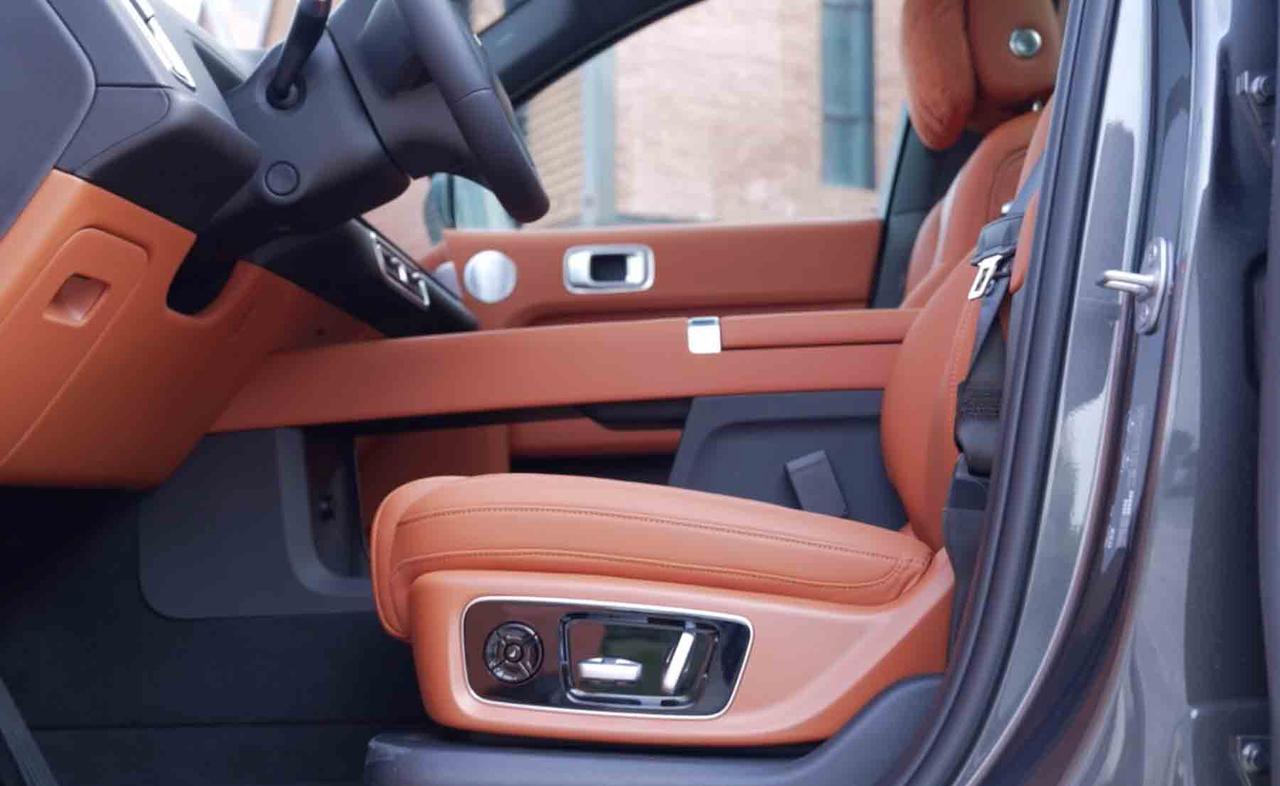
Unfortunately, due to the air conditioning vent being placed in the rear of the central armrest box, the hollowed-out armrest of the L8 and L9 was directly cancelled on the Ideal L7 In its place is the air conditioning pipeline.
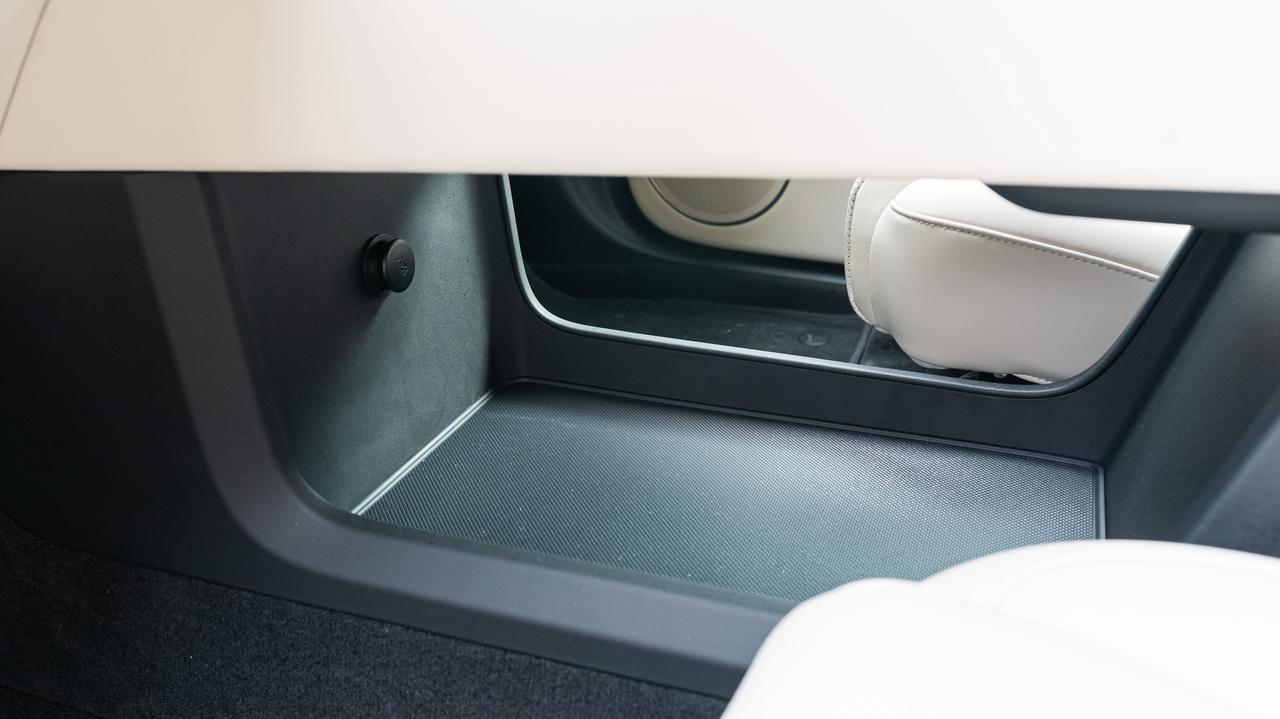 ## Ideal L8 Armrest Hollow
## Ideal L8 Armrest Hollow

The BMW X5 we experienced came with Sensafin synthetic leather as standard, and the interior color scheme was mocha with wooden trim. It doesn’t look like a product aimed at a younger market overall, especially when the wooden decorations are put on the car. The luxurious atmosphere is present but it’s not really related to sports too much. As a product that has been on the market since 2019, the current generation of BMW X5 retains a lot of physical buttons on the center console. If you are an old BMW owner who is familiar with the layout of this set of buttons, controlling them while driving is not difficult and the accuracy will be better than touch and voice control. However, the simplicity of the center console is slightly lacking.

In terms of practicality, the HuaChen BMW X5’s center console only has one cup holder, which makes it inconvenient for the driver and passenger to grab the cup when necessary. The Ideal L7 provides one cup holder and one wireless charging board for each person so that everyone can have their own. During my driving experience of the X5, I found a very annoying problem. The crystal gear lever and crystal knob in the BMW X5 are very high-end, but the crystal knob reflects strong light when exposed to specific angles of sunlight, which can greatly interfere with the driver’s vision during the driving process, and this is a bit of style over substance.
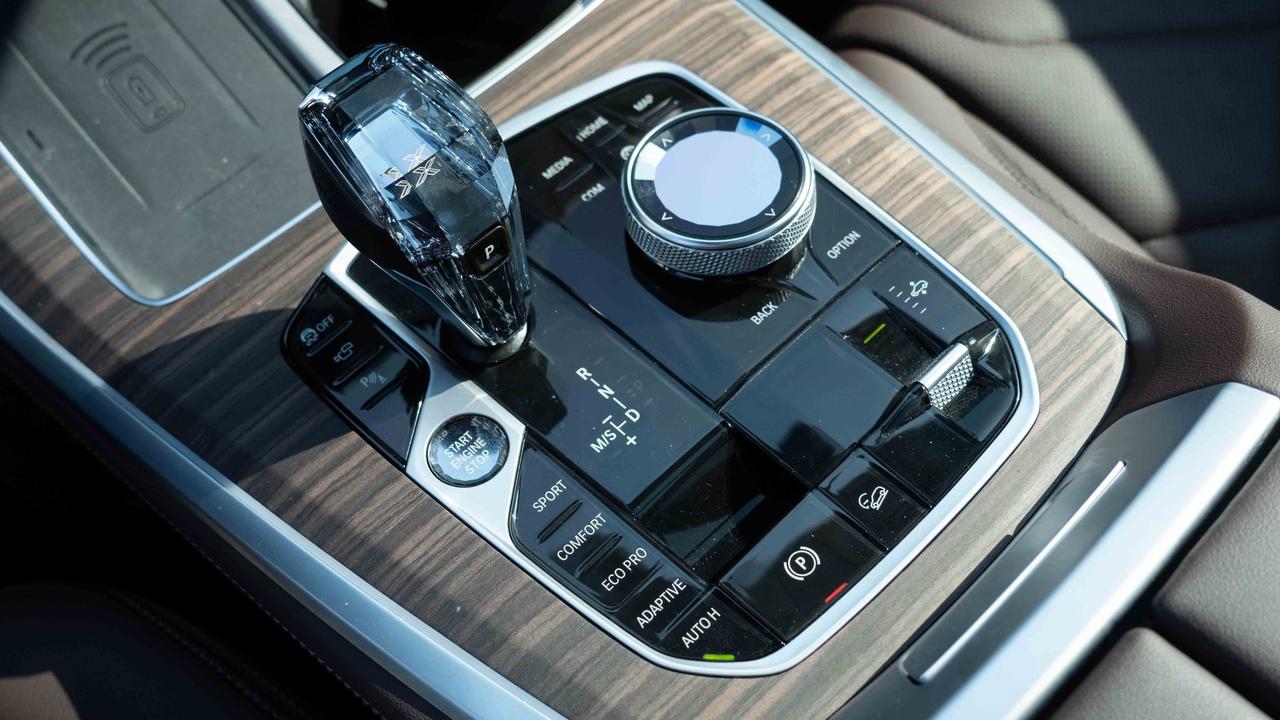
The Ideal L7 uses Nappa leather seats throughout the car, which have very delicate and smooth tactile feedback. Overall, the front seats of the Ideal L7 have a moderate softness and hardness, and there is a slight sinking feeling when you sit down, but after completely sitting down, it can provide support. The lower sponge can provide a certain degree of support. I am 175 cm tall and weigh 68 kg. The Ideal L7’s seats can completely fit my body shape. The front seats of the Ideal L7 support four practical functions: ventilation, heating, massage, and memory. The length of the seat cushion is fixed at 525 mm, which provides good support for the thighs during long drives.# Sensafin Synthetic Leather Used in BMW Models
Sensafin synthetic leather is commonly used in BMW models, featuring a relatively rough surface compared to the ideal Nappa leather, but boasts good wear resistance. For the domestic X5, BMW provides diamond-patterned seat cushions to enhance the luxury feel. The actual experience of sitting in the X5 is also soft and comparable to the ideal L7, making it more comfortable than previous BMW models.
On the seat functions, the BMW X5 has many adjustments available, in addition to the conventional cushion and backrest adjustments, it can also adjust the angle of the wing guard and the shoulder angle of the seat. Moreover, the adjustment range of the seat height is more extensive than L7, allowing drivers of different body types to find a very suitable sitting posture. It is a pity that the X5 does not have seat massage and the footrest, which is retractable like the X7. This configuration also makes the leg support less comfortable than the L7.
In terms of materials inside the car, the ideal L7 uses leather fabrics everywhere, regardless of whether or not you can touch them, and is very luxurious. Moreover, in places where your hands may touch, they are filled with a layer of sponge material, making them very soft and high-end. In terms of fabrics, I mentioned in the L8 that the current L series from ideal comes with a woven roof panel, creating a certain psychological gap when compared to the XPeng G9, NIO ES7, and BMW X5.
Second Row Seating in the L7 is like a Sofa at Home
As the first SUV flagship that ideal claimed to be a family five-seater, the rear seat experience has become one of the biggest highlights of the entire L7. Firstly, let’s talk about the most direct experience of sitting in the rear seat.In the official introduction of the Ideal L7, the maximum angle of the second-row backrest can reach 40 degrees. The first time I sat in the L7’s back seat, I was shocked by the extremely lying posture, which was also my first experience of the second-row seat with such a large backrest angle. My actual sitting posture is almost half lying on this soft cushion.
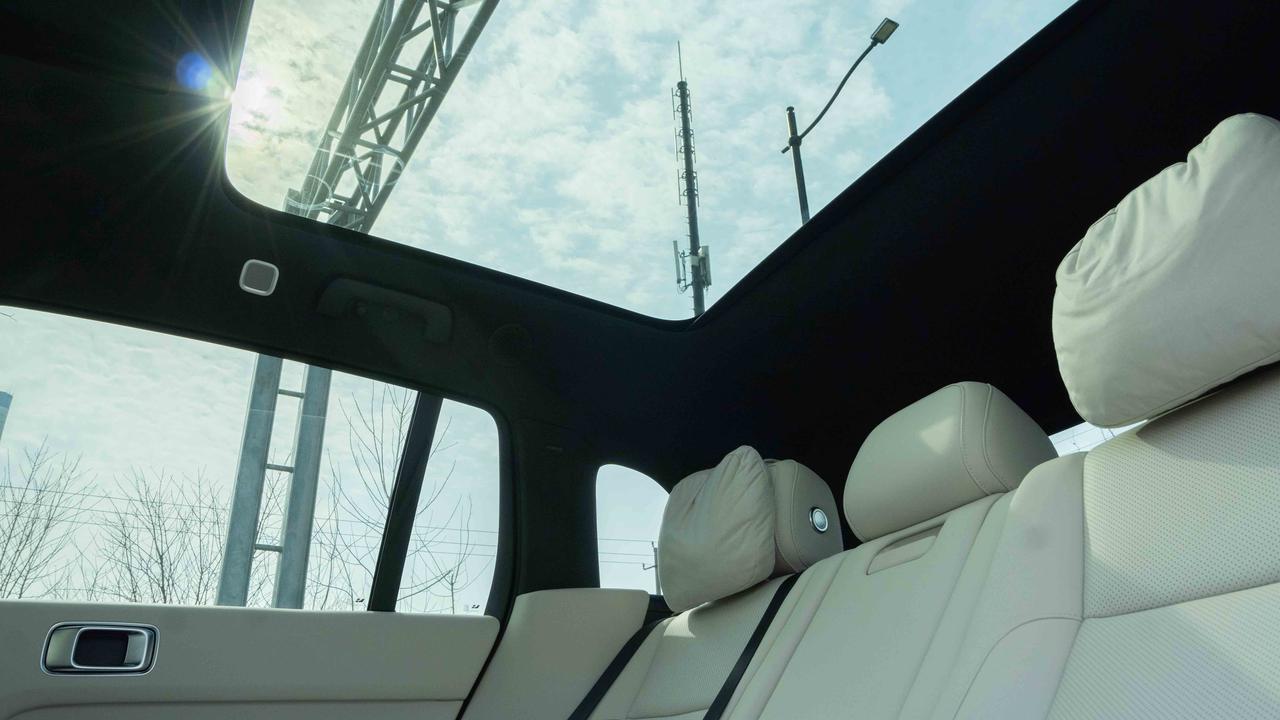
In addition, the Ideal L7’s panoramic sunroof extends directly above the heads of second-row passengers. In sunny weather, it feels like sitting in a sunroom at home. Our L7 is the Max version with a 15.7-inch entertainment screen, and a 1,920 W 21 speaker audio system, which is very comfortable to half lie down.
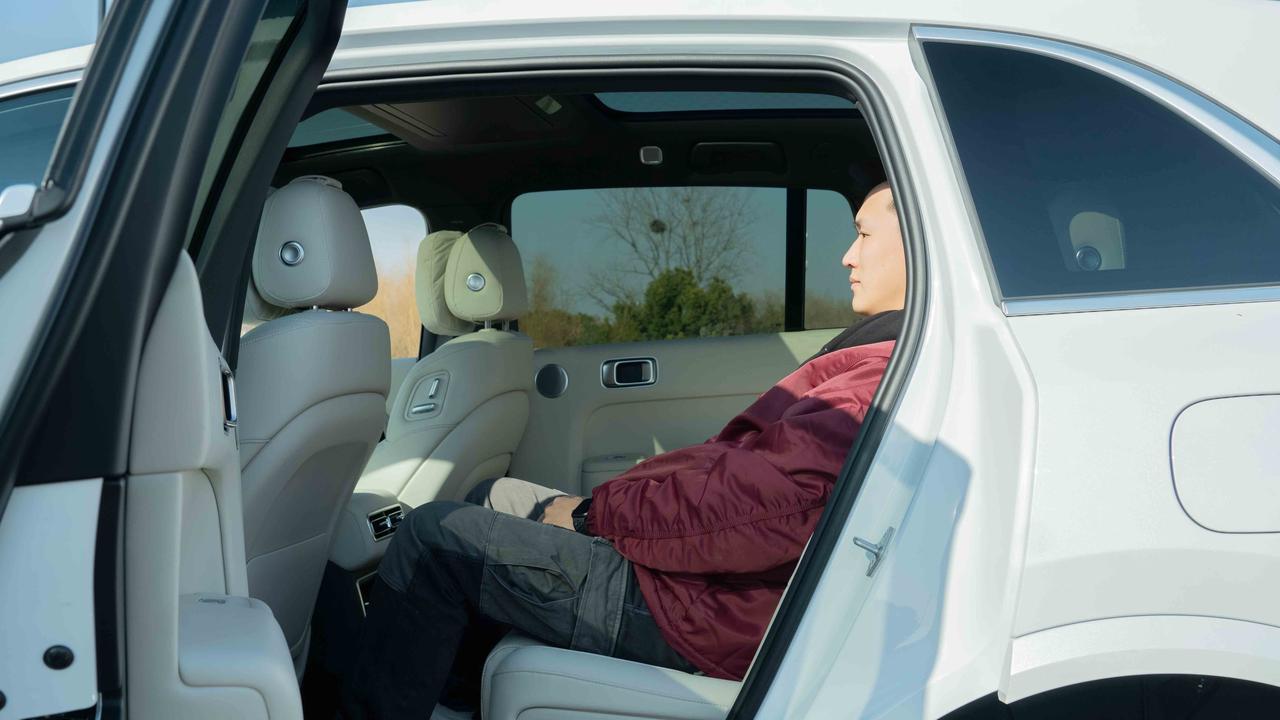
However, for me personally, the above conclusion is only limited to when the vehicle is stationary. If the vehicle is in motion, I will feel that the 40-degree backrest angle is a bit too lying. For someone like me who habitually keeps their eyes on the road even when sitting in the back seat, an angle of 35 degrees may be more appropriate, which is a compromise between habit and comfort. Overall, the adjustable angle of the Ideal L7’s rear seats is very wide, and you can always find a suitable riding position.
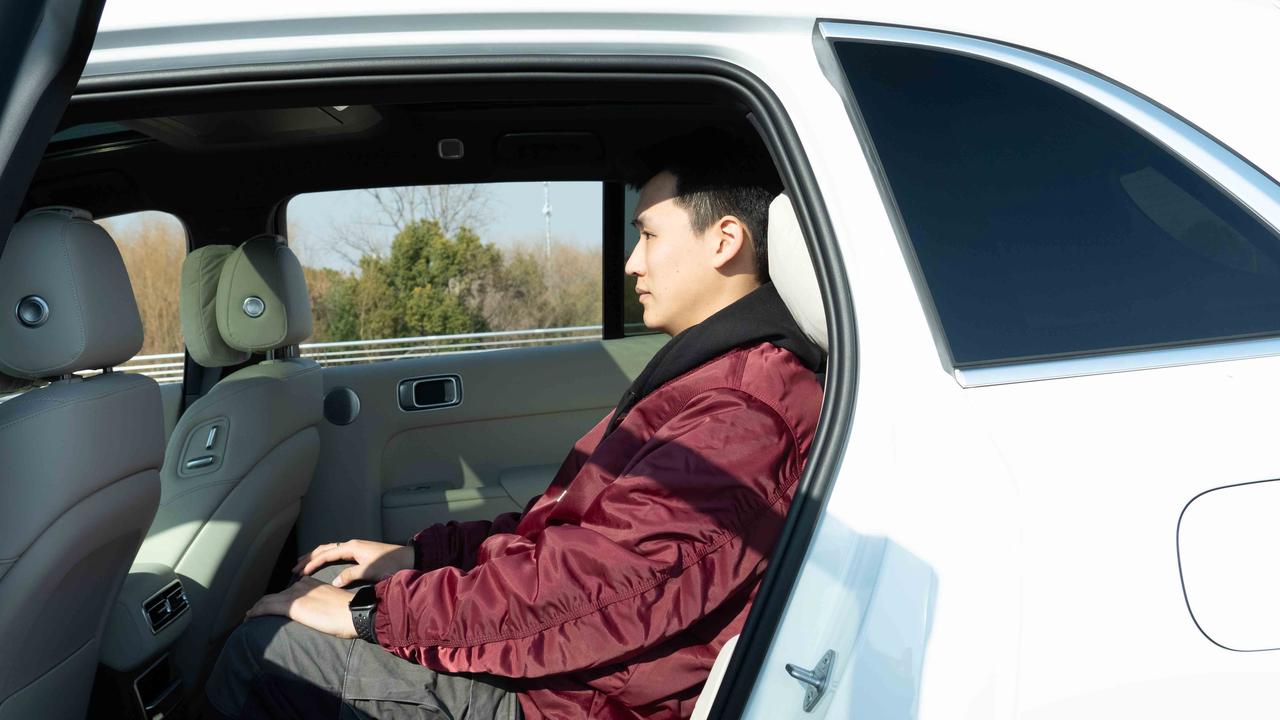
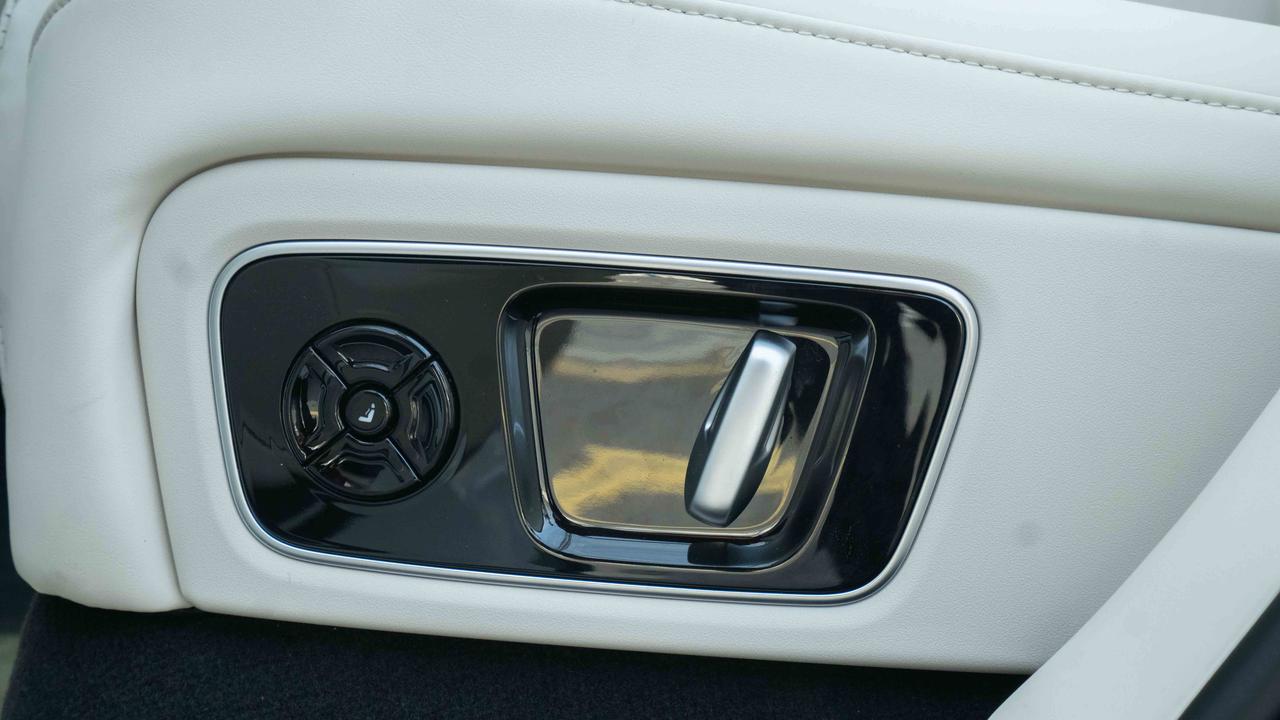
It is worth mentioning that if you happen to be sitting in the right rear boss seat, in addition to being able to control the front passenger seat as usual, there is also an exclusive queen seat behind the front passenger seat. There is also an electric pedal behind the front passenger seat, which is also wrapped in leather. Compared with the exclusive front passenger seats created by NIO and NIO, the Ideal L7 really treats your other half as a boss or leader.
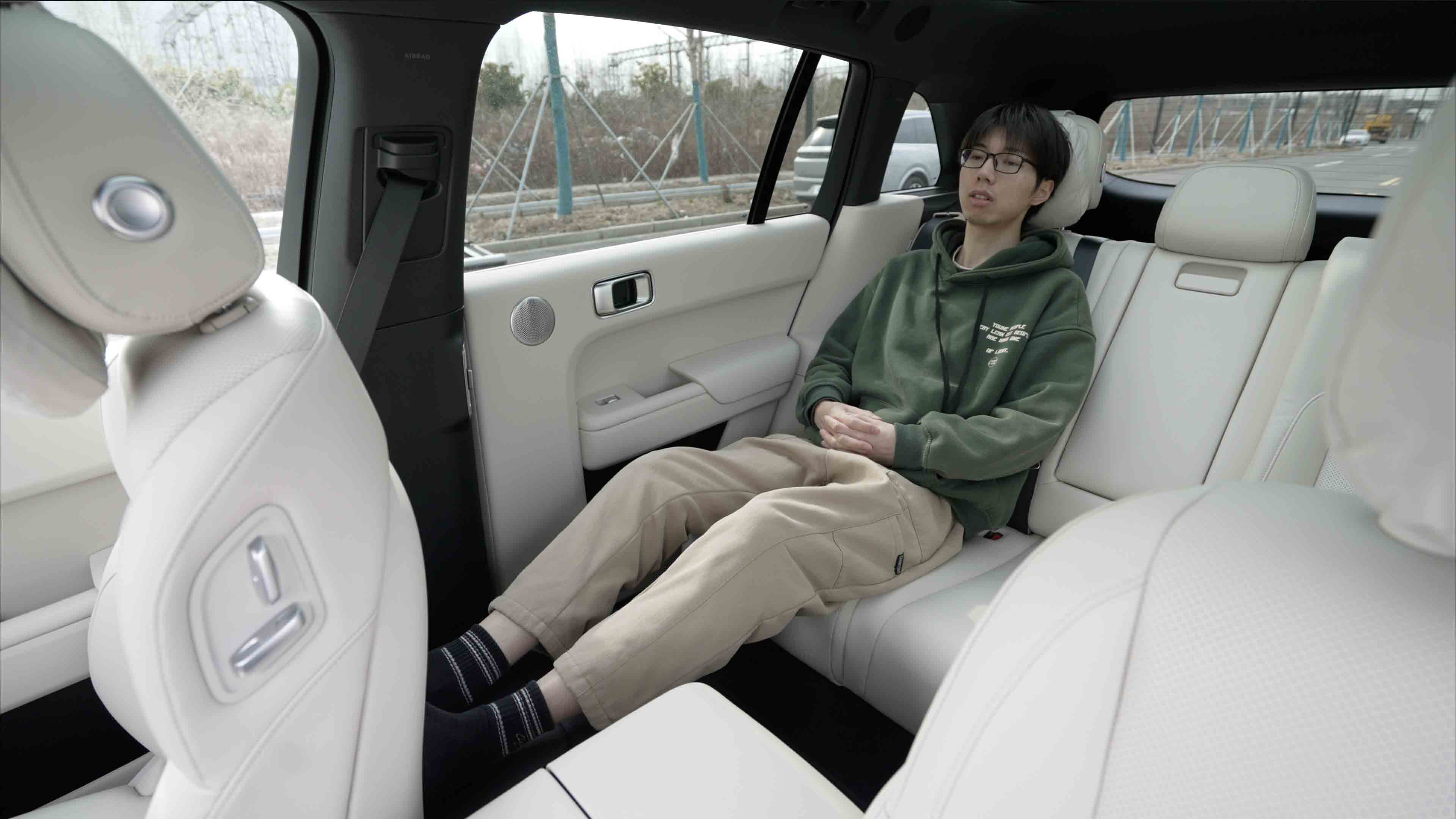
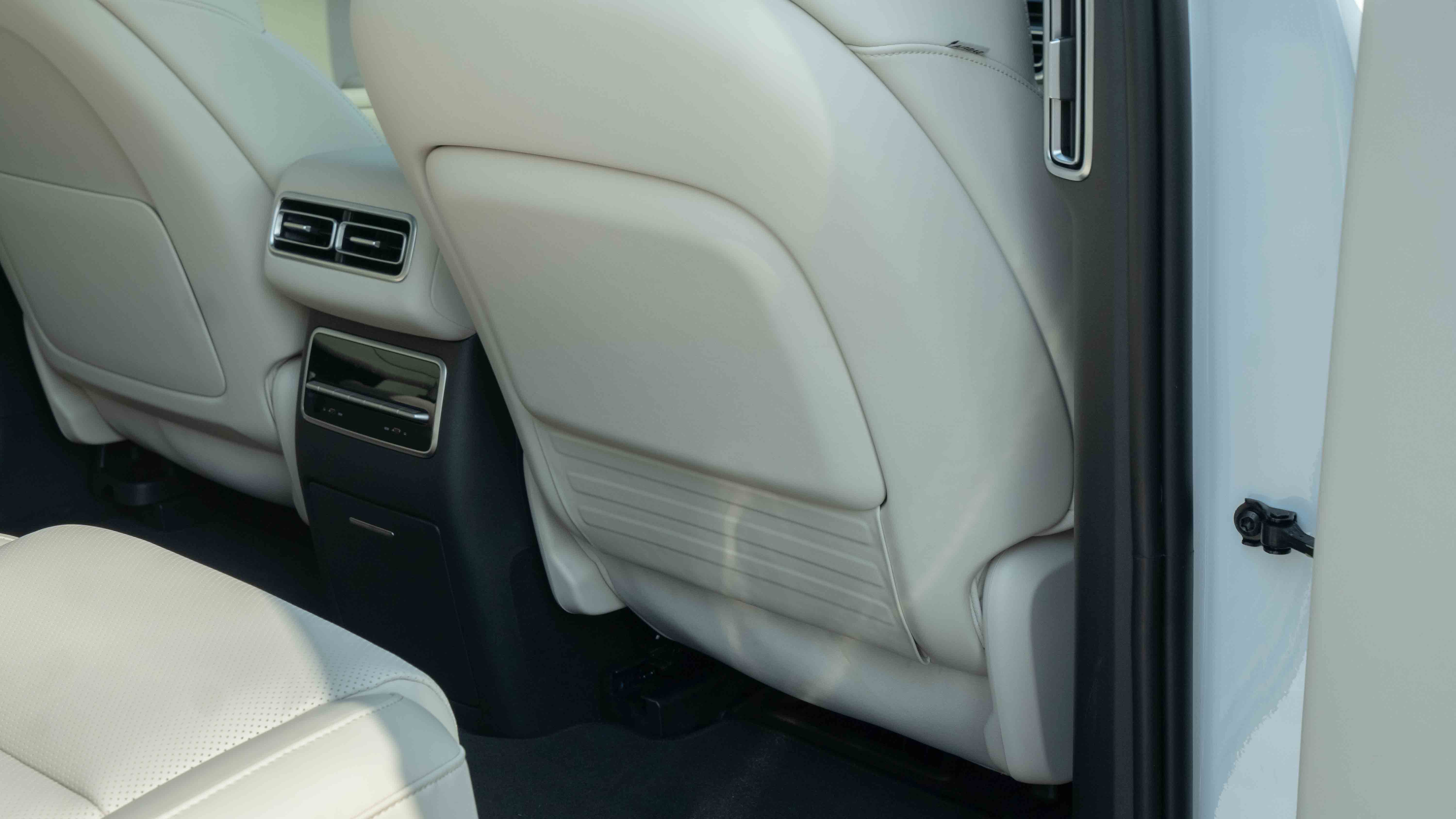
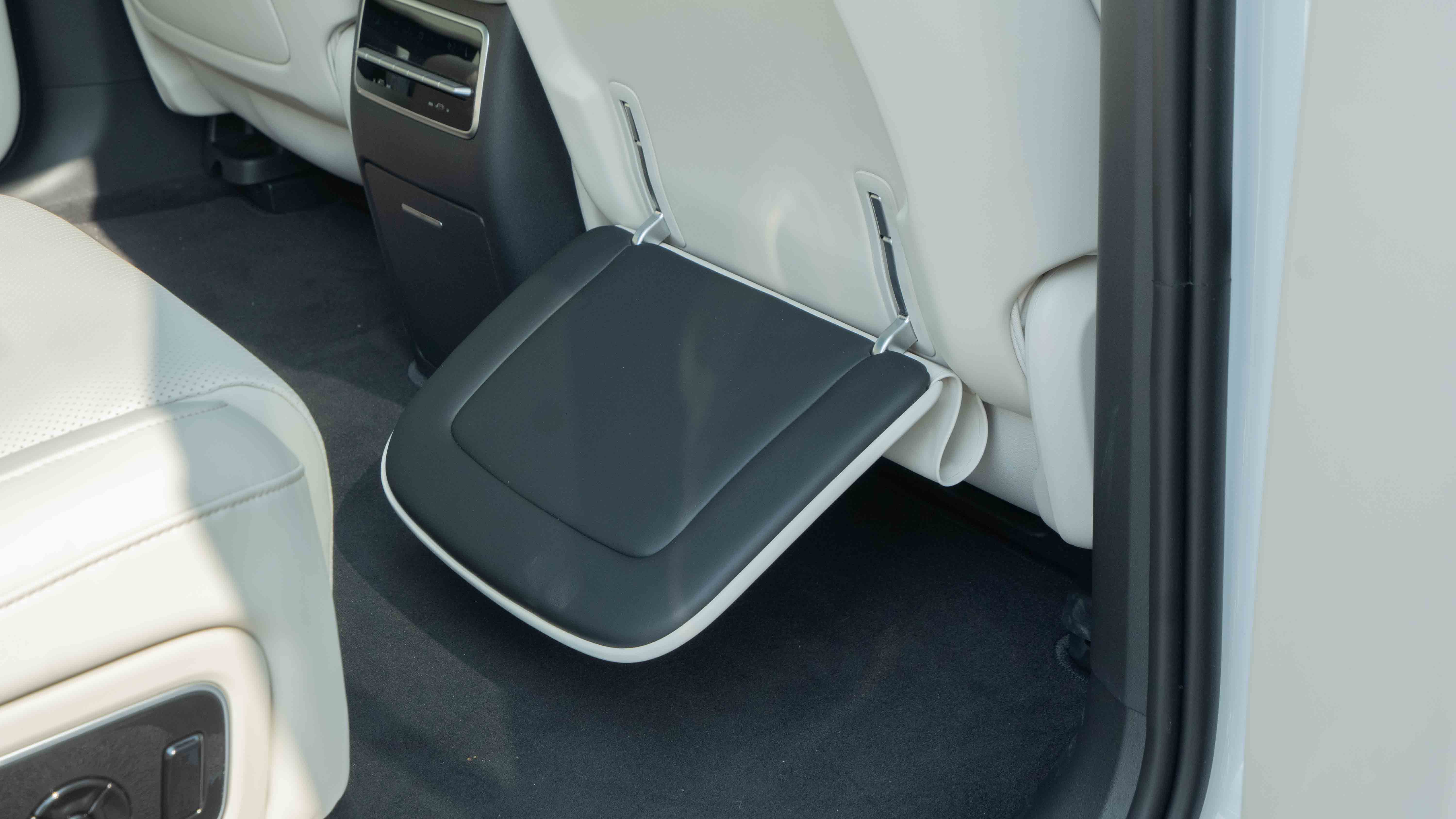
The rear armrest of the Ideal L7 is very spacious with soft foam padding, and the elbow naturally rests comfortably on it. The front has two cup holders that make it easy to reach for water. The only issue is that there is no storage space or area for placing a phone, which may cause slight inconvenience during extended use.
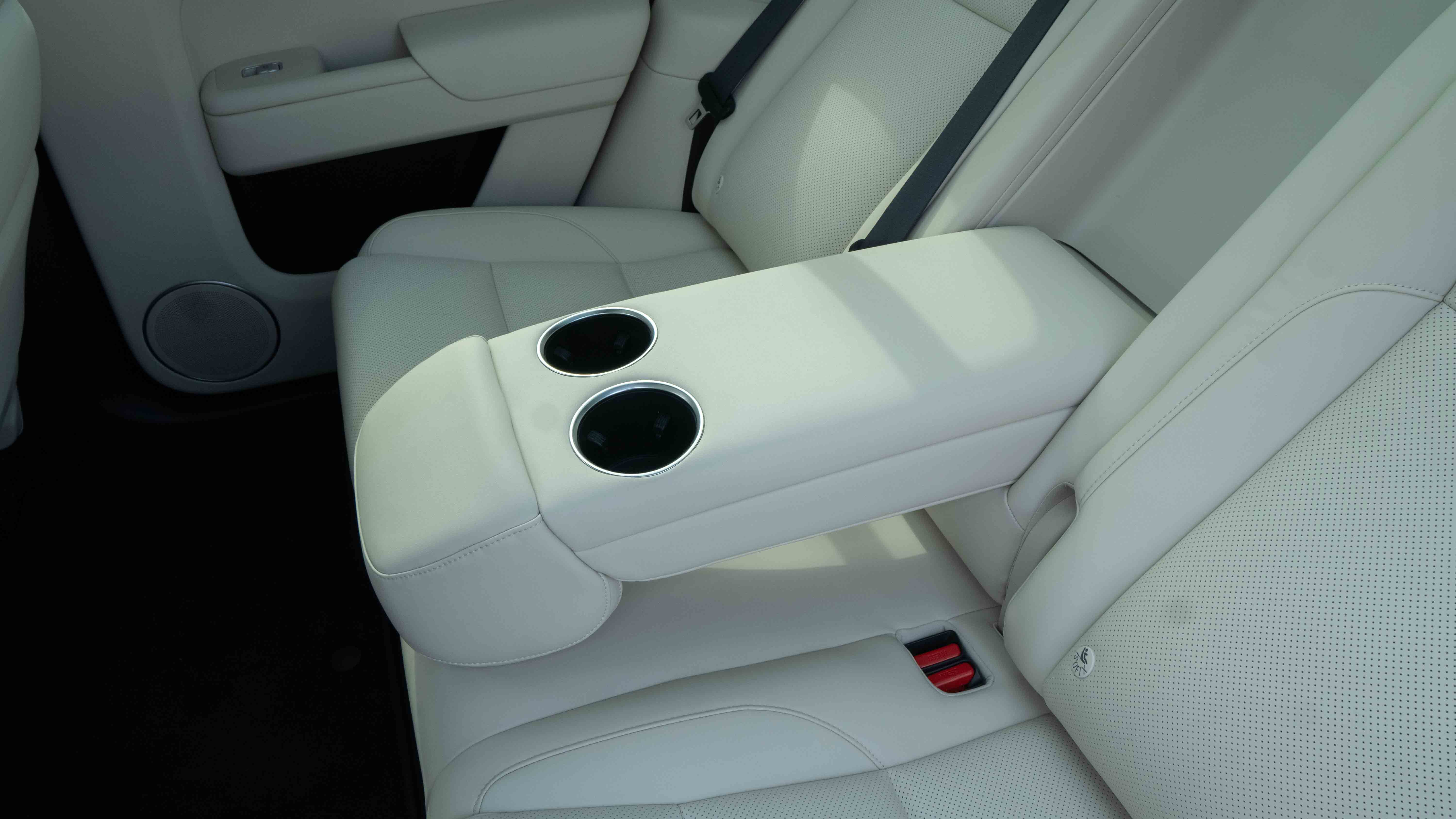
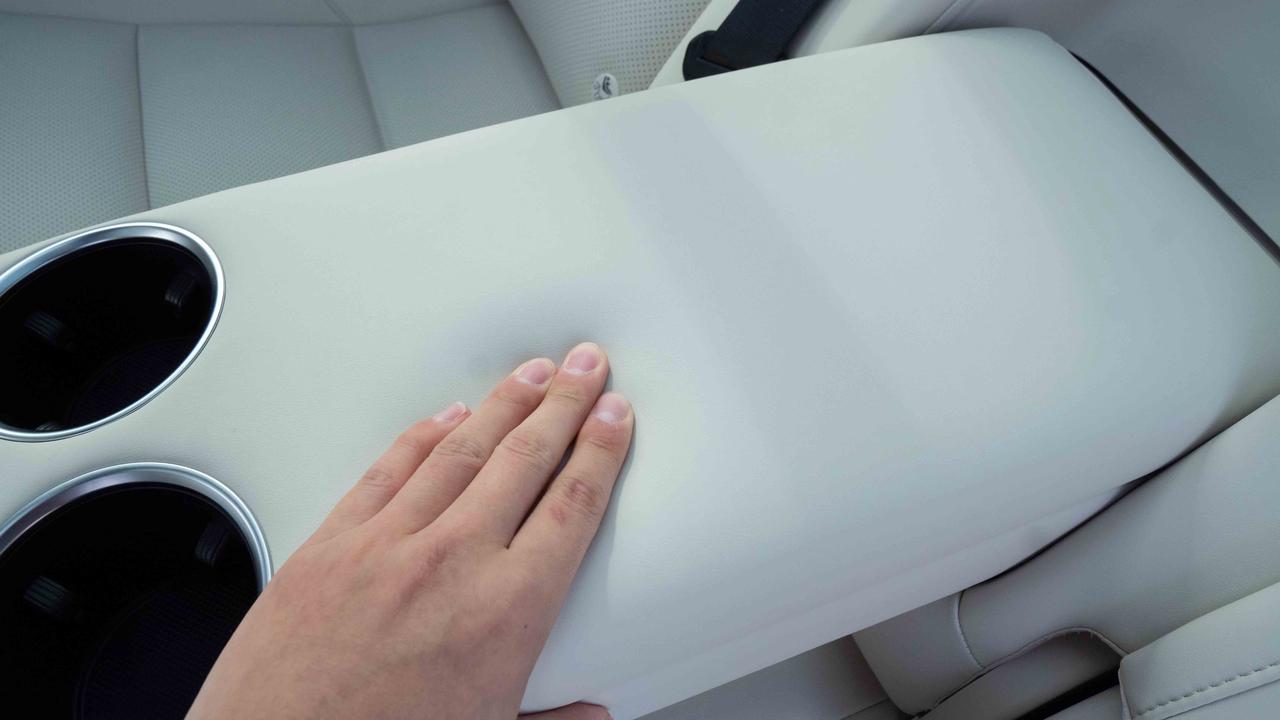
There is a difference in the layout of the air conditioning vents between the five-seater Ideal L7 and the six-seater L8. After removing the head air vents on the L8, the air conditioning vents on the Ideal L7 return to the traditional layout, placed at the back of the central armrest and on the left and right B-pillars, with the air conditioning control panel moved downwards.
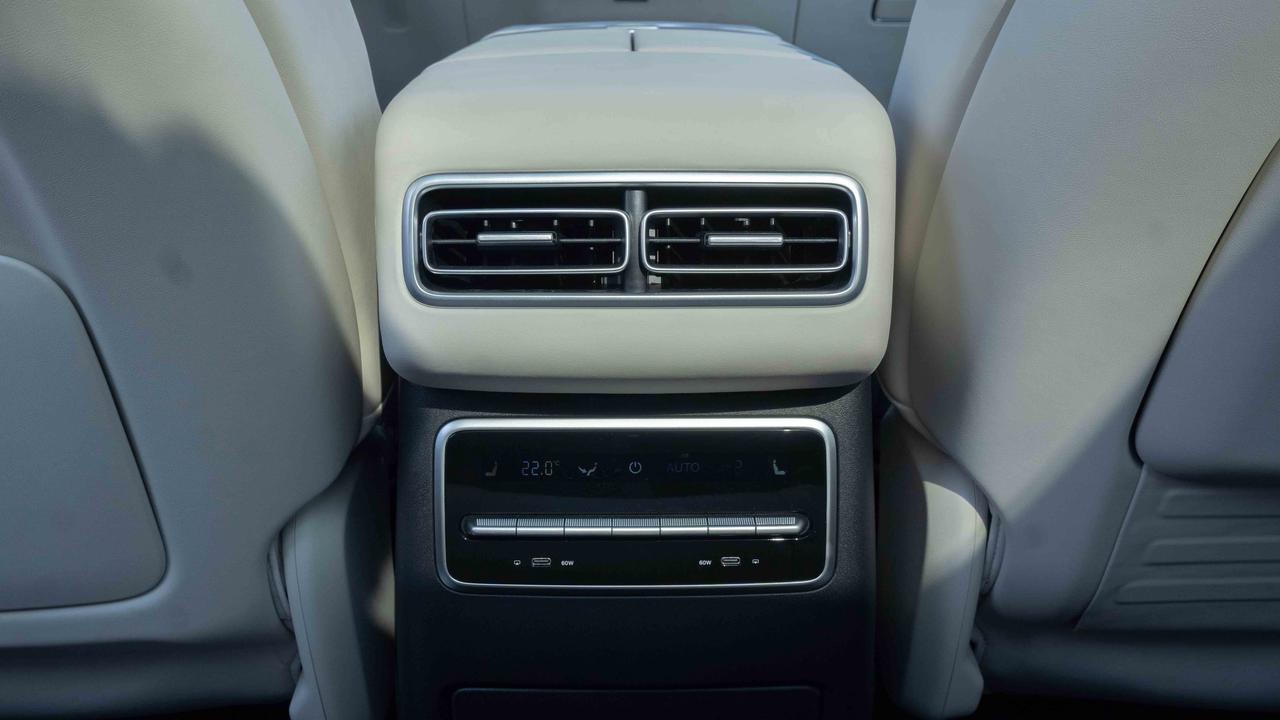
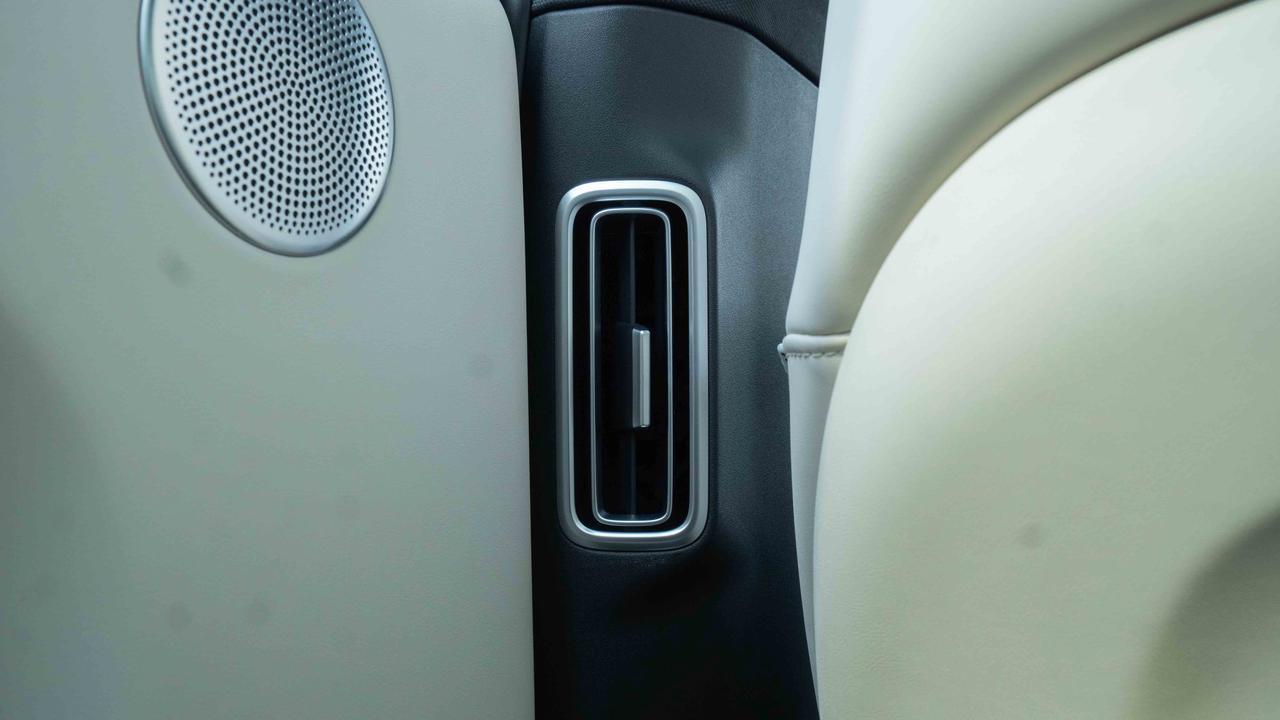
The panel still retains two USB-C 60W charging ports, one of which supports screen projection. The 1,100W three-phase charging port originally present on the L8 and L9 has also been retained, installed at the bottom of the second-row seat. This allows for convenient outdoor camping use of the L7 with the addition of an extension cord and barbecue grill.
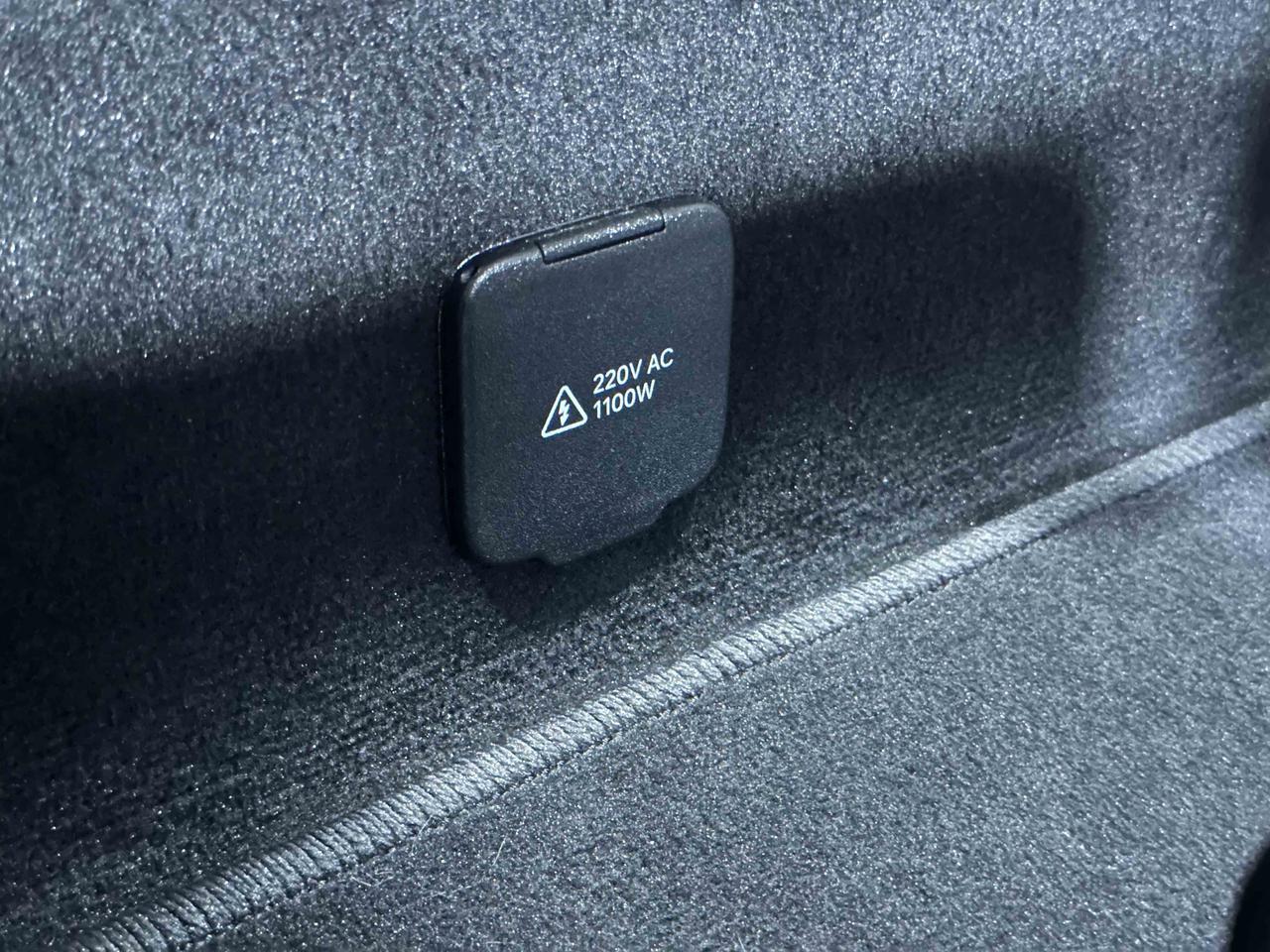
There is no need to worry about the seating space in the Ideal L7. I am 175cm tall and weigh 68kg. In the appropriate driving position, the legroom in the rear seat is about one and a half palms, while the headroom is just one palm. Therefore, even big and tall men can sit comfortably in the Ideal L7.Compared to the BMW X5 with a long wheelbase, in a situation where the front row is suitable for my seating posture, the legroom is about a palm’s length shorter than the L7, but for me, it does not make much of a difference in terms of practical experience, as both the L7 and X5 have very ample legroom. As for the headroom, the ideal L7 has a glass panoramic roof, so the headroom can also reach about a palm’s length without a feeling of oppression, while also widening the space. The X5, on the other hand, only has about a fist’s worth of headroom due to the overhead blind mechanism for the sunroof. Users who are over 1.8 meters tall may have the possibility of hitting their head while sitting upright.
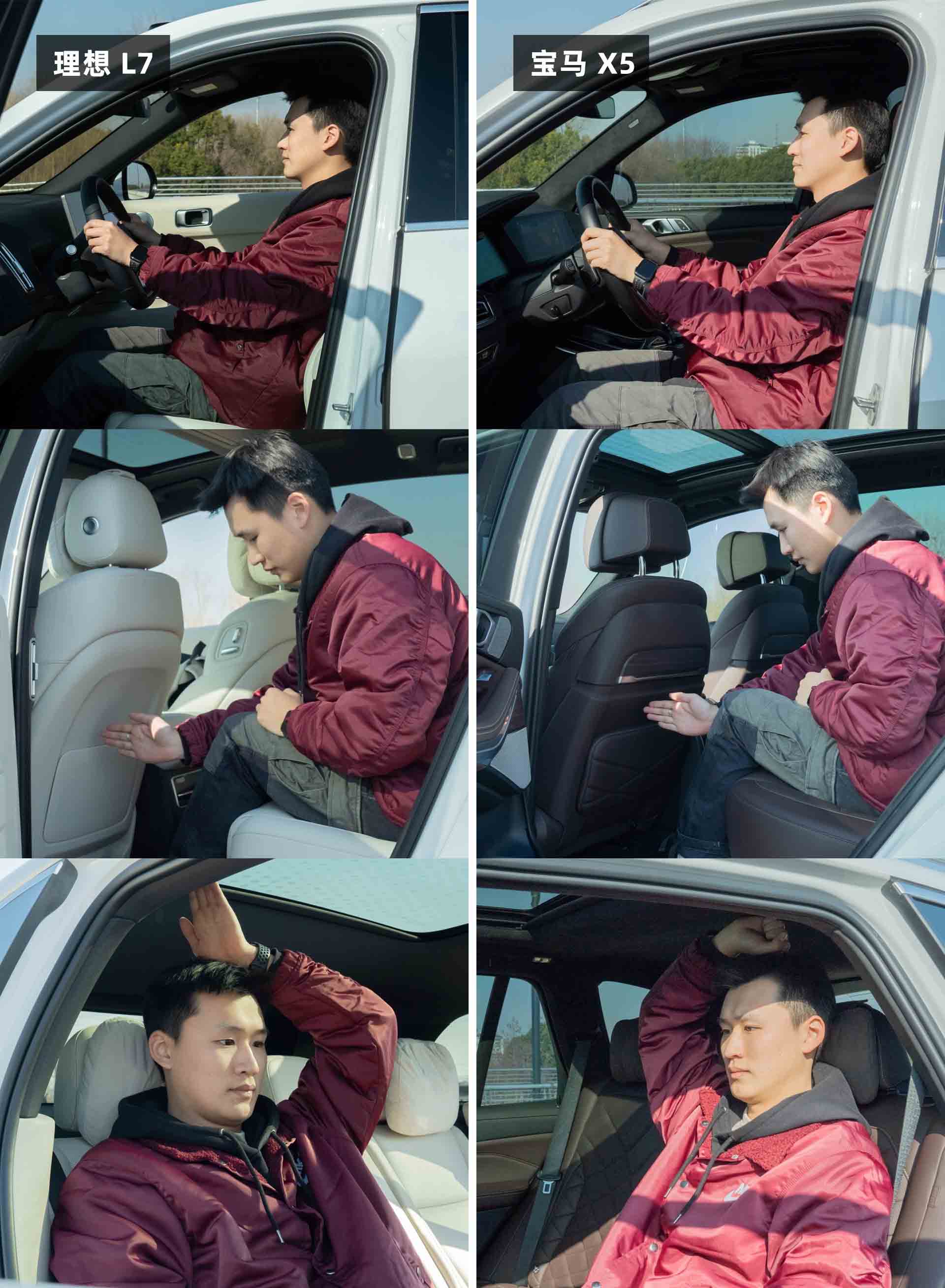
Coming from the L7, sitting immediately in the back seat of the X5 gives a greater sense of drop in the backrest angle. The X5’s backrest angle of 31 degrees is obviously not as relaxing as the L7’s 40-degree angle. As for last year, the X5’s backrest angle of 31 degrees was already very comfortable, even the XPeng G9 uses 31 degrees as a benchmark. However, in comparison to 40 degrees now, there will inevitably be a sense of difference. Interested friends can also go and experience the back seat of the ideal L7.
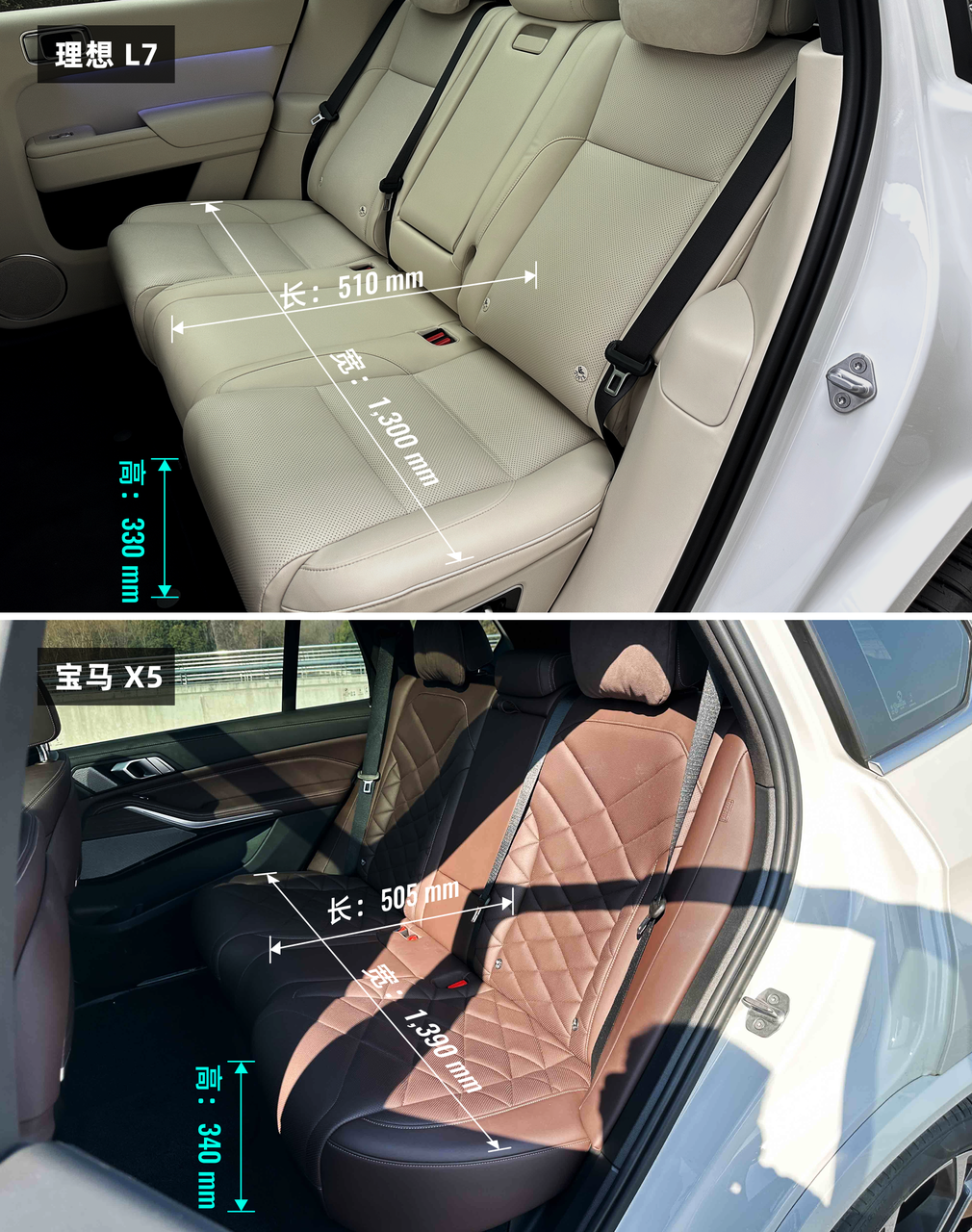
However, the X5 surprised me by having a softer and more comfortable seat cushion filling than I had imagined. In the 5 Series, X7, and other German cars I have experienced, the seat cushions are generally harder in texture. The upper layer filling of the X5 has a certain softness, which is not found in previous models of the BMW brand. The seat cushion in the X5’s back seat is wider and slightly more spacious when three passengers sit together compared to the L7. The diamond-shaped texture also increases the grip of the seat to a certain extent. Although the Nappa leather of the ideal L7 is delicate, the body is prone to sliding, and the tactile sensation is slightly inferior.
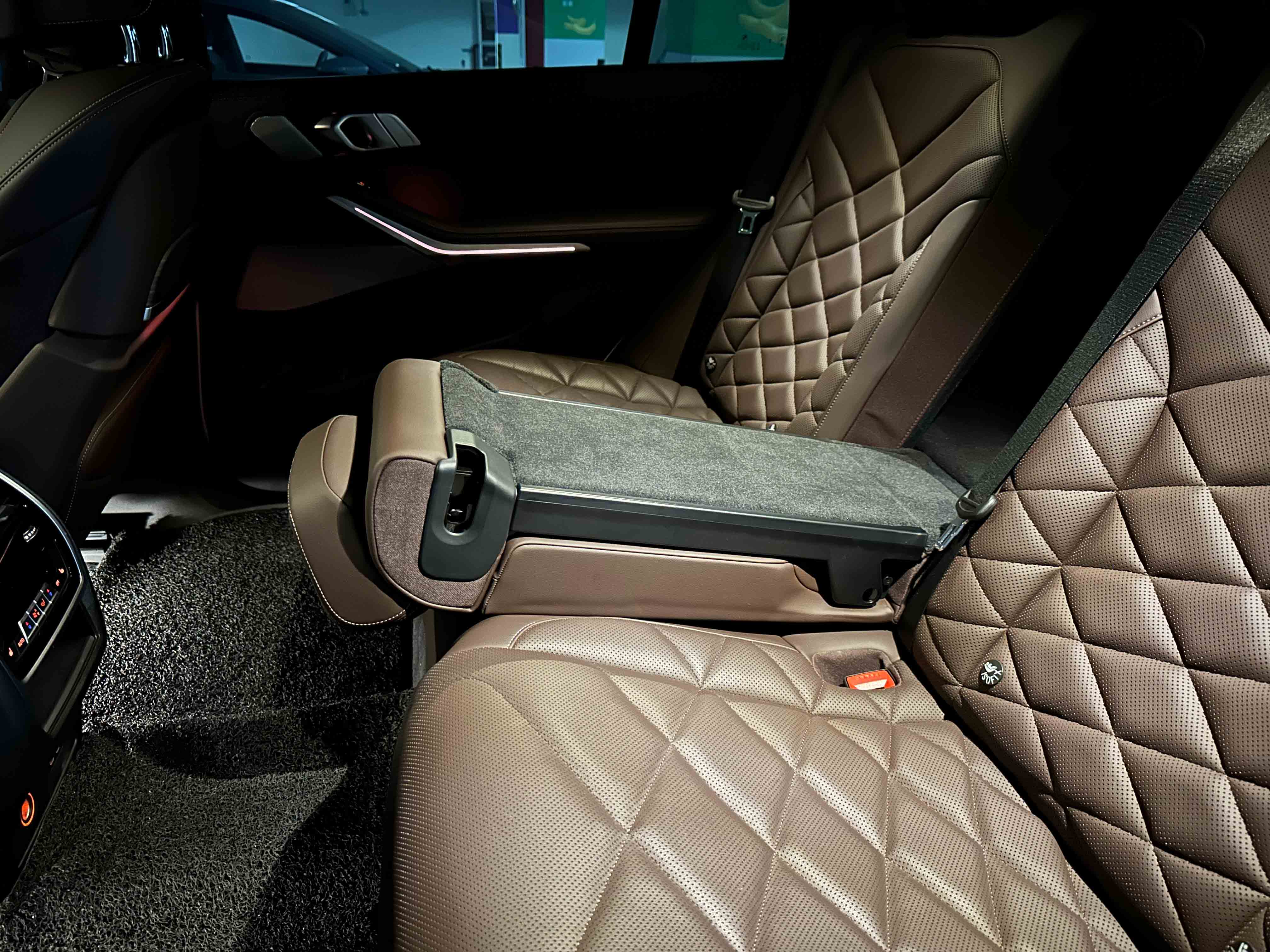 # BMW X5 and LI L7 SUV Comparison
# BMW X5 and LI L7 SUV Comparison
The BMW X5 has had the 4/2/4 ratio folding capability for its second-row seats since the third generation, meeting the travel needs of European markets where 4 people need to carry long items such as surfboards or skis. The domestically produced BMW X5 has also continued this feature, making it easy for second-row passengers to access the items in the trunk. Surprisingly, the LI L7 also has this function, which has received high praise.
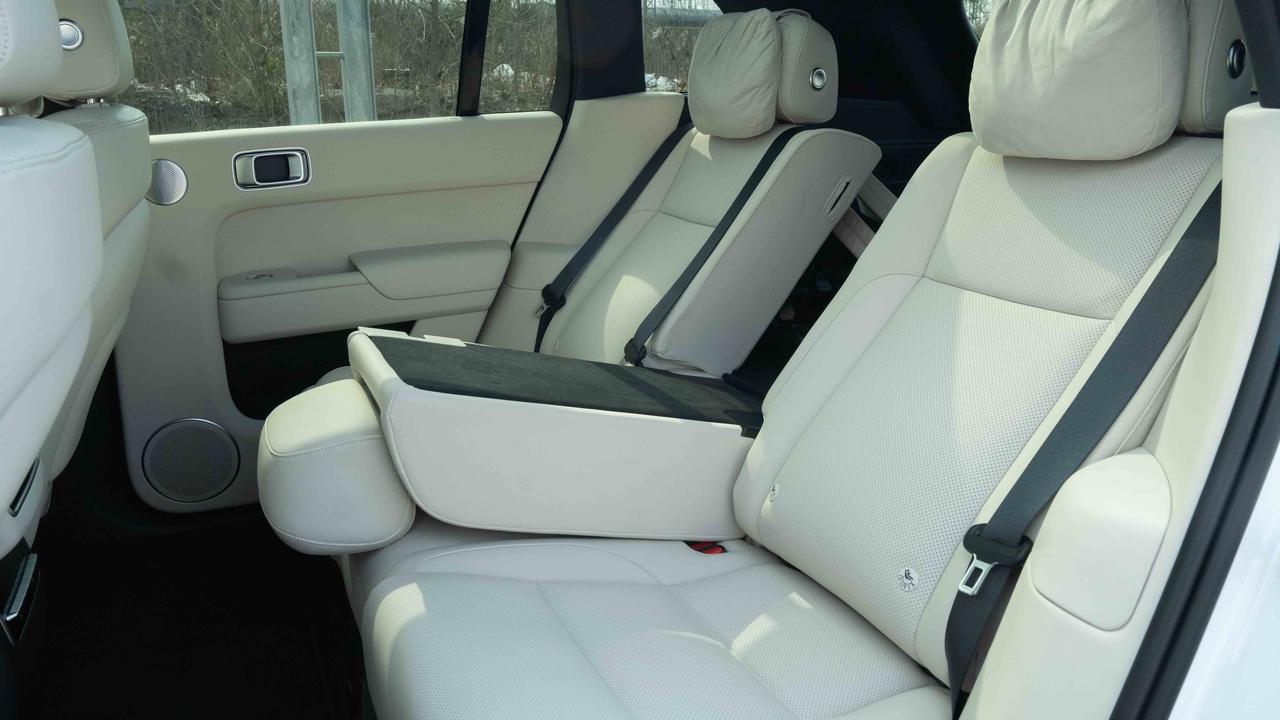
Overall, the LI L7 has more advanced and concise cabin technology, practicality, and materials similar to the high-end luxury SUV benchmark BMW X5. Three 15.7-inch screens and white, coffee, and orange interior colors cater more to young consumer demographics. Compared to the BMW X5, the L7 creates a more steady feeling on the basis of luxury, and can also cover a broader age range of users.
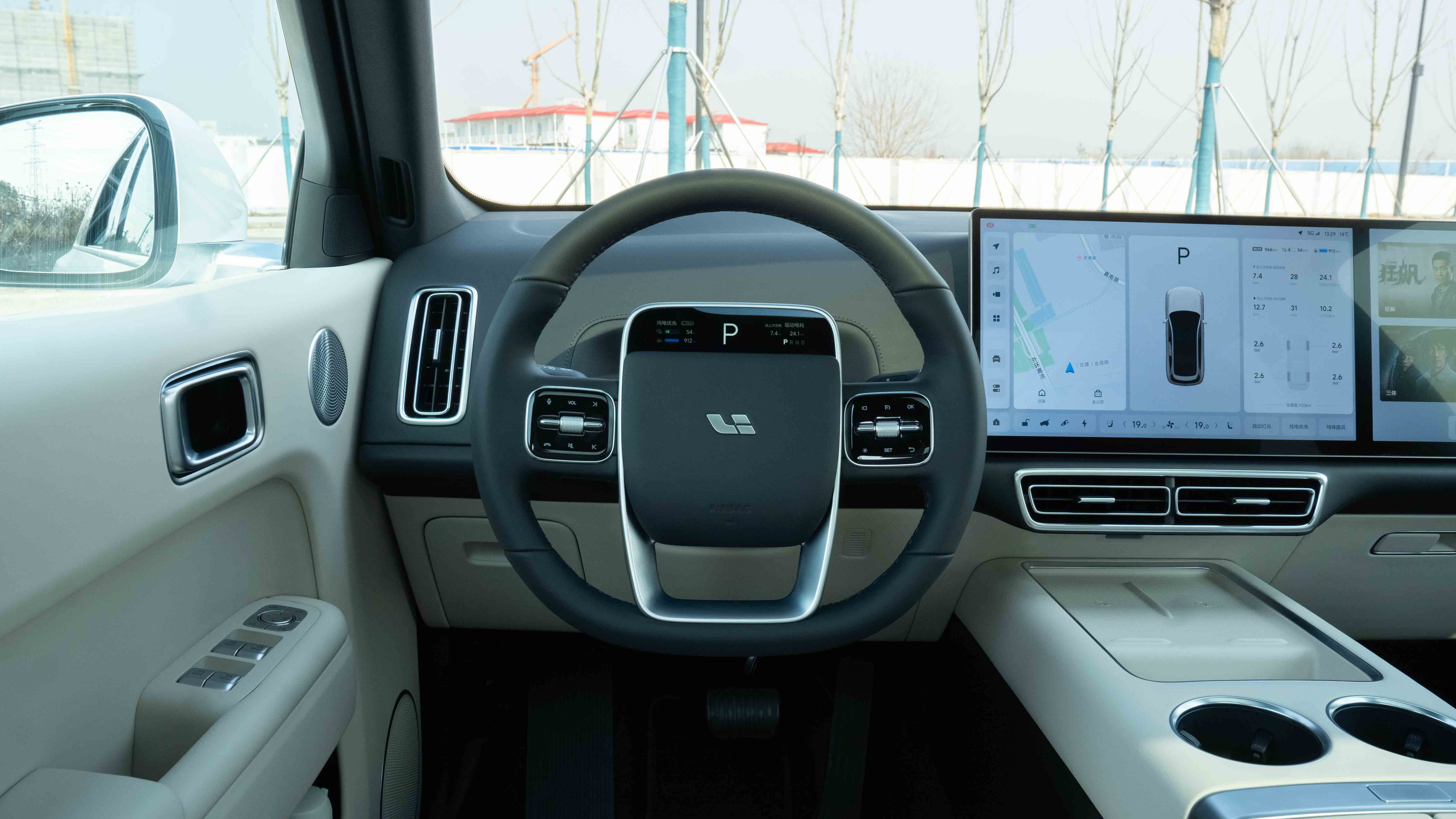
In terms of rear-seat space and comfort, the LI L7 also has an advantage. The L7 has a larger space, can adjust the backrest angle 25-40 degrees, has charging ports, a queen seat, and more entertainment options for rear-seat passengers. Although the BMW X5 has a more comfortable seat, other features of this mid-to-large size SUV in this price range are not as advantageous. LI positioned the L7 as a five-seat flagship family SUV, and the product itself indeed achieves the effect that the brand claims.
Fuel Economy Testing: How Did the LI L7 Compare to the BMW X5?
The advantage of PHEV vehicles is that they are similar to pure electric vehicles in terms of driving experience, with fast and smooth responsiveness, and relatively fuel-efficient in the city but slightly less so on the highway. Last October, we tested the city and highway fuel consumption of Ideal ONE, Ideal L8, and L9 at 29-34°C temperatures. Our conclusion was that the fuel consumption in the city was 2-3 L/100 km lower than on the highway.
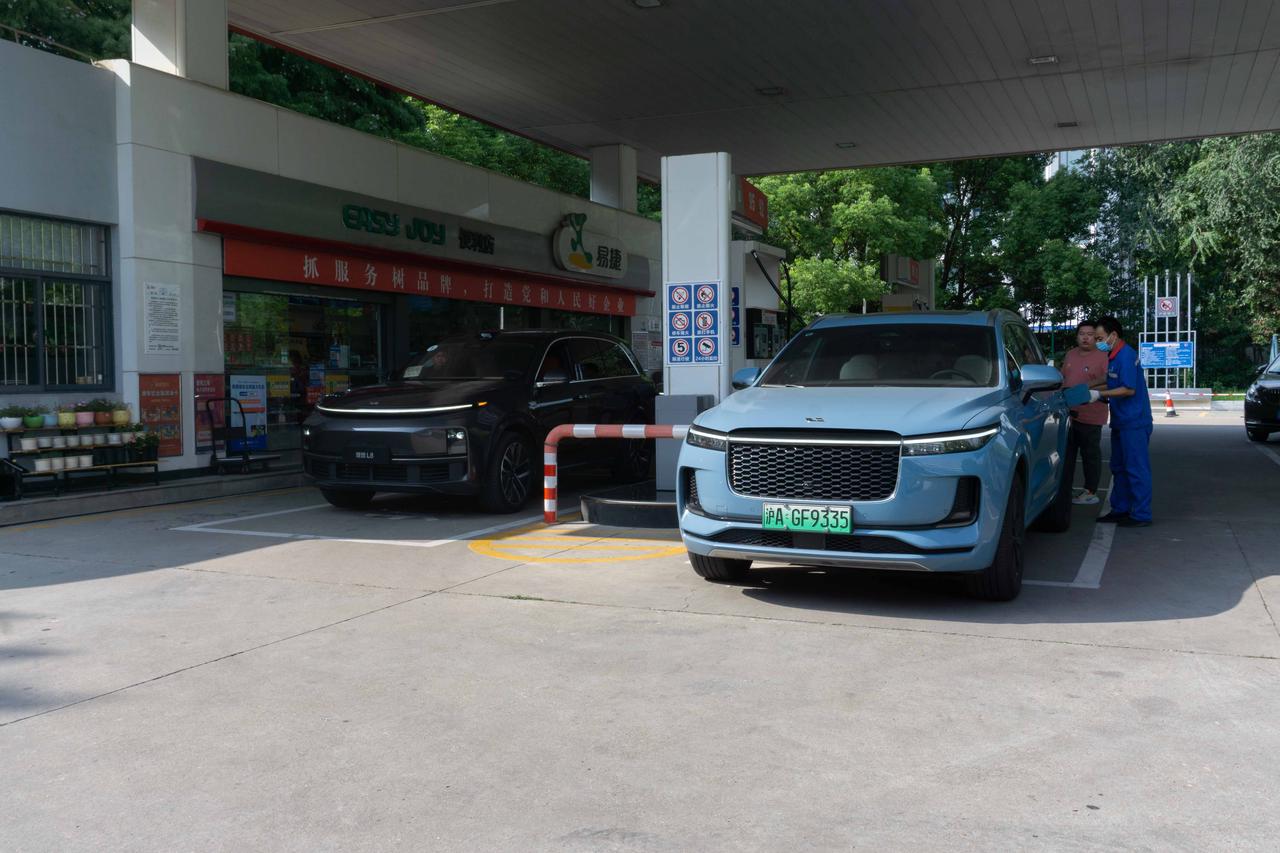 Here, we directly compare the BMW X5 with the 3.0 T B58B30C engine and 48V mild hybrid system to examine how fuel efficiency differs between the two vehicles, given similar acceleration performance.
Here, we directly compare the BMW X5 with the 3.0 T B58B30C engine and 48V mild hybrid system to examine how fuel efficiency differs between the two vehicles, given similar acceleration performance.
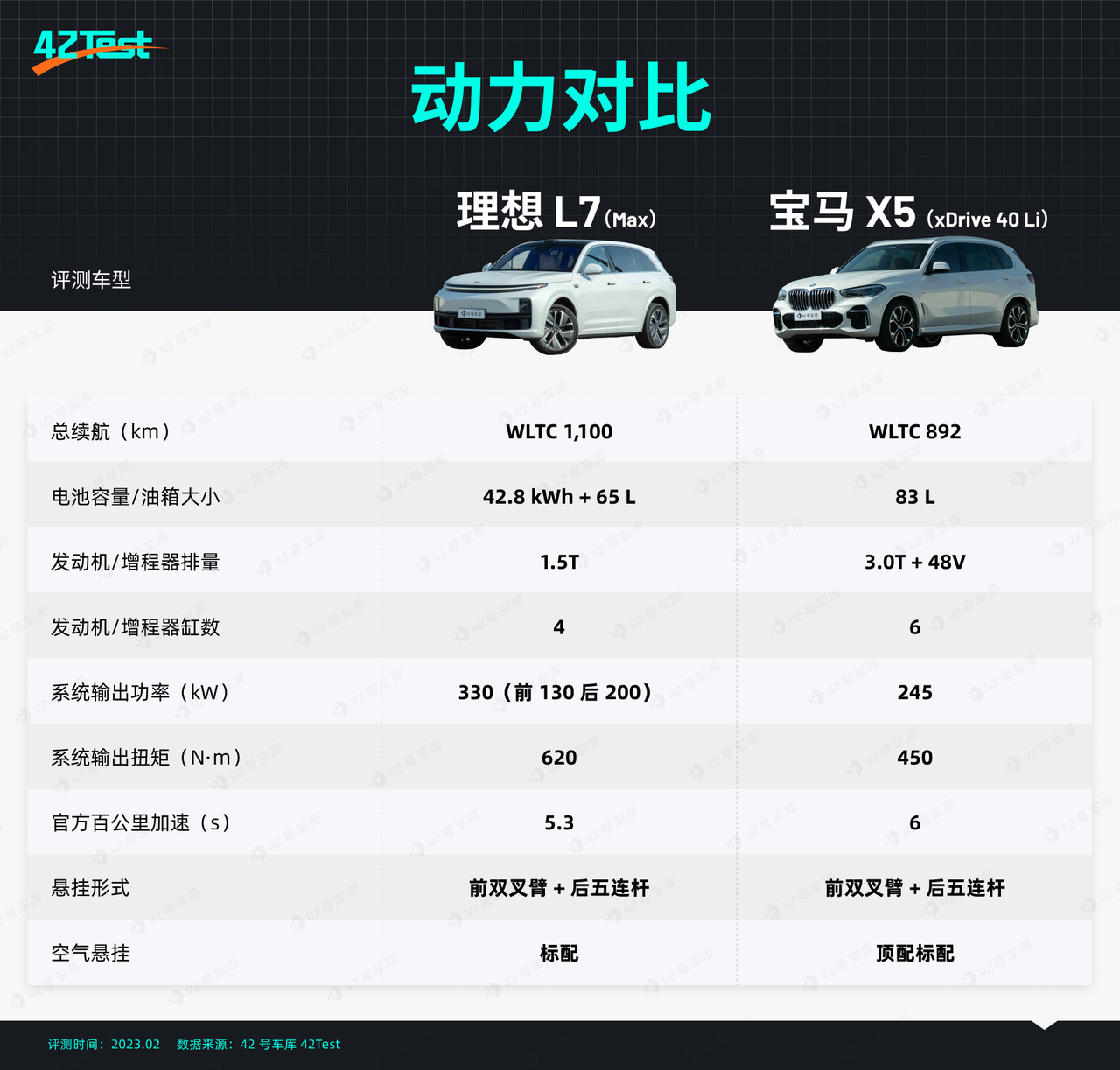
City driving fuel consumption: Li Xiang L7 prevails
Testing was conducted on the ninth day of the Lunar New Year, during the evening rush hour when traffic is usually heavy in the city. Of the 50km of urban terrain covered, numerous congested sections with stop and go traffic were encountered, although traffic flowed relatively unimpeded on the 100km highway stretch, providing a representative comparison of the two cars’ ranges.
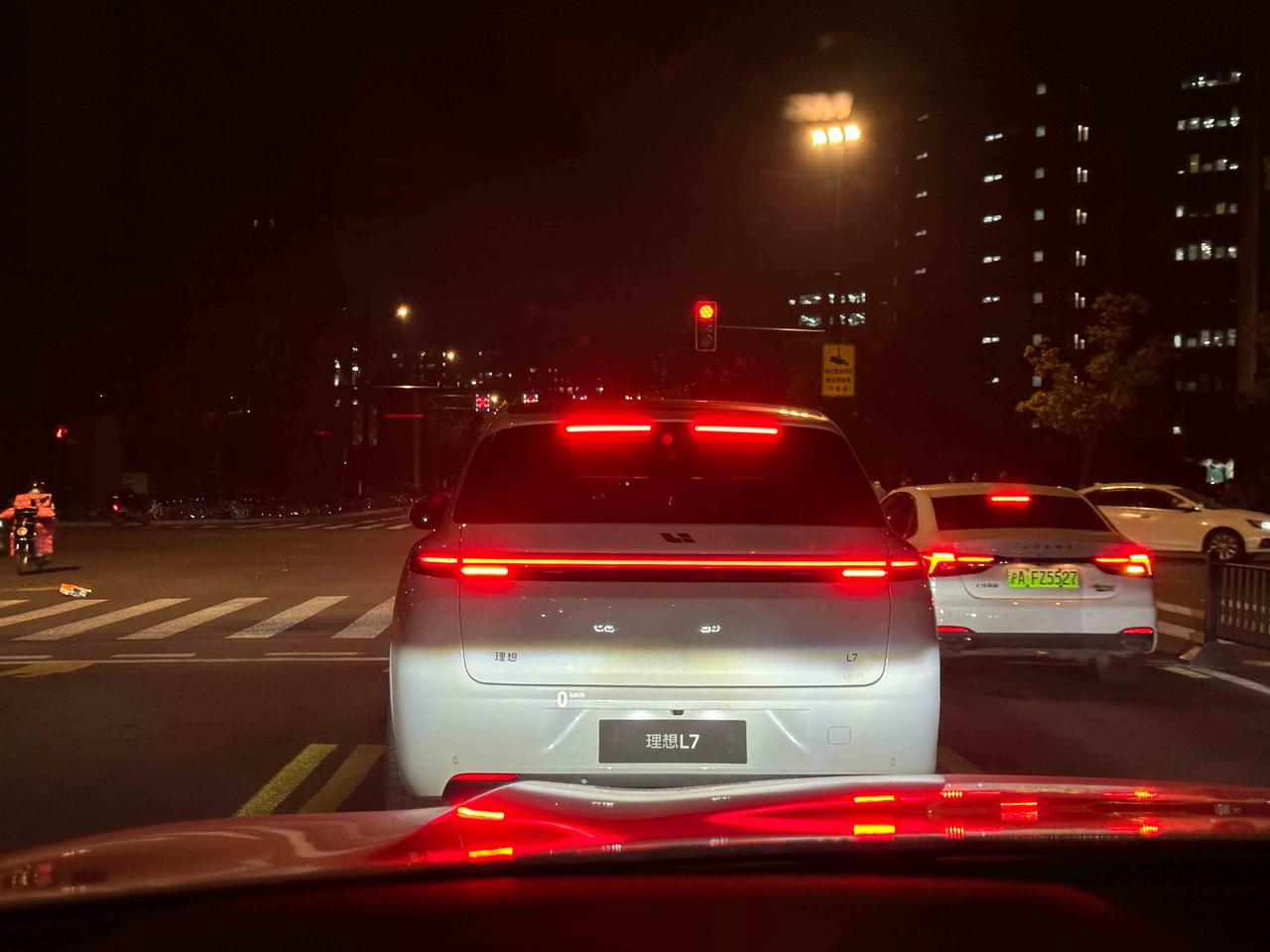
On January 30, the temperature fluctuated between 7-12°C, with both cars’ air conditioning systems set to dual-zone at 22°C. Li Xiang L7 drove in standard mode, utilizing a hybrid oil-electricity driving system, with a remaining pure-electric range of 31km from the extended range system. The BMW X5 was driven in comfort mode with the transmission set to Drive (D). Both cars were fully fueled at the same petrol station before starting the test and returned to refuel after 150km of testing. Fuel consumption figures were calculated based on refueling volume and mileage. To reduce testing error, the driver and lead car were switched midway through the test.
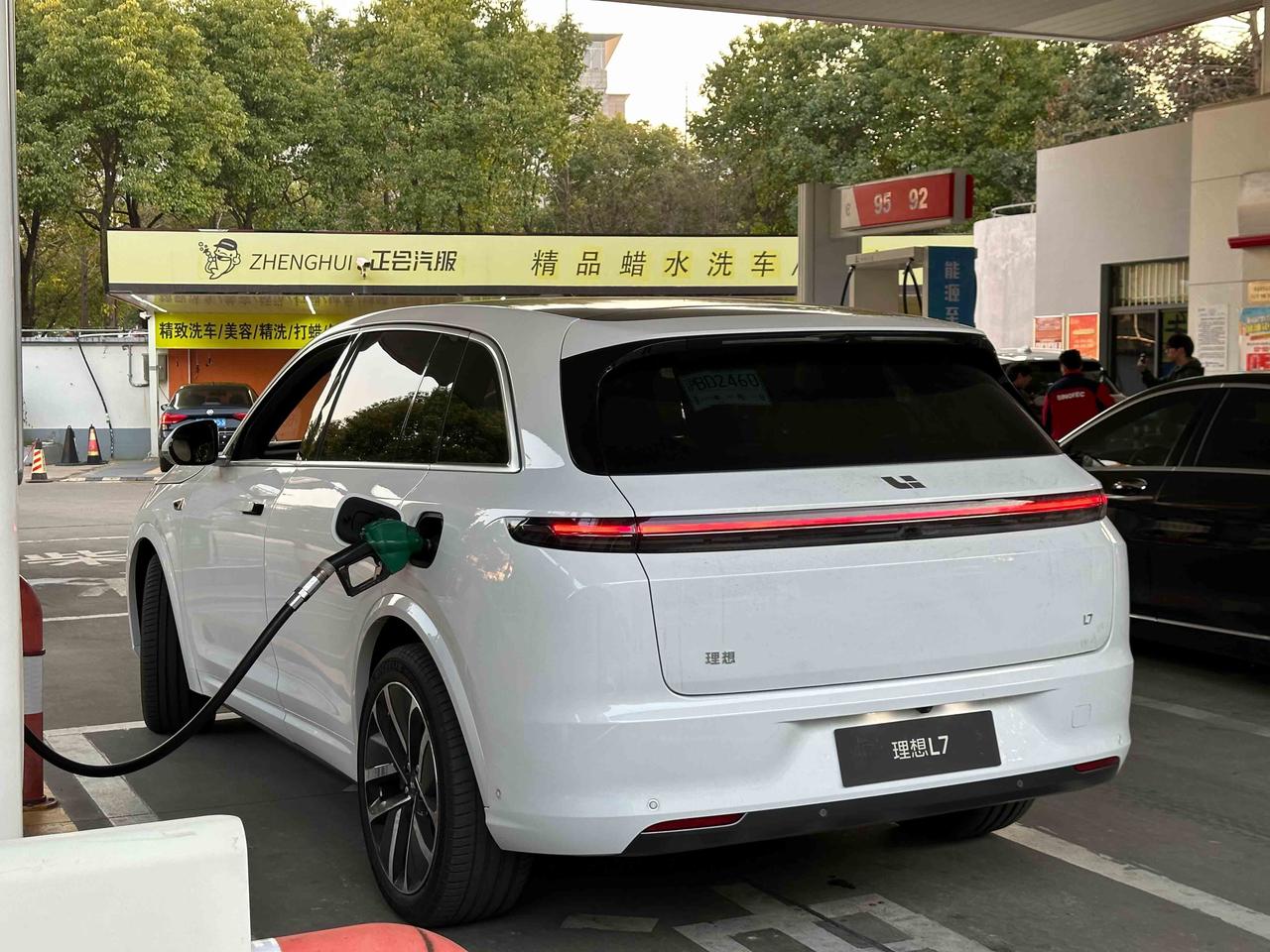
Prior to departure, the Li Xiang L7 had a range of 925km (petrol) +31km (pure electric) under the WLTC standard, for a total range of 956 km. After running 150km for 256 minutes, the remaining range was 783 km, and the displayed fuel range decreased by 181 km, with a comprehensive fuel consumption decrease of 173 km. The actual/displayed range ratio was 1:1.15, identical to that of last year’s Li Xiang L9.
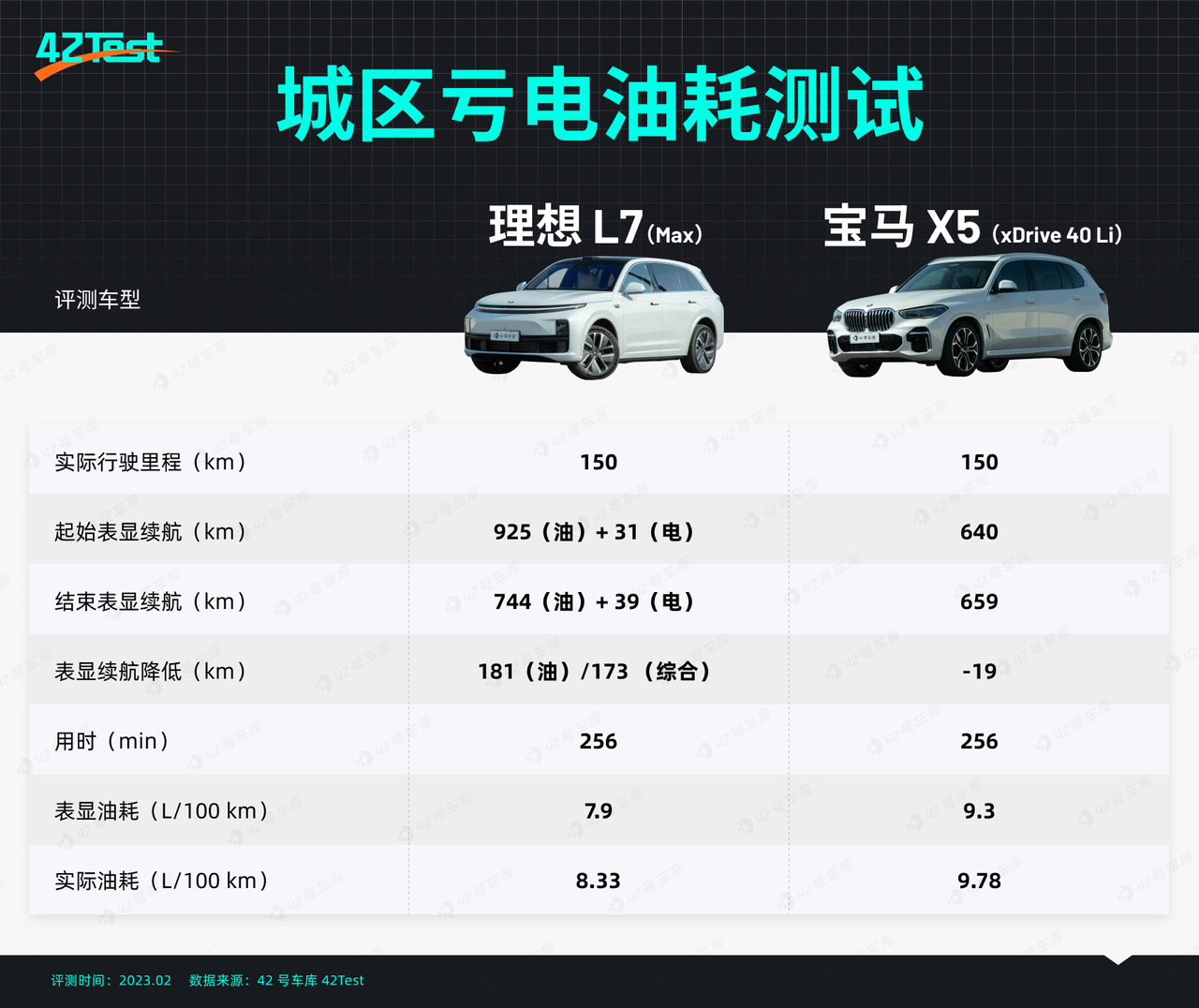 After a 150km test in the city, the ideal L7’s fuel injection amount was 12.49L and the actual fuel consumption was calculated to be 8.33L/100km, with a difference of 0.43L/100km compared to the displayed fuel consumption.
After a 150km test in the city, the ideal L7’s fuel injection amount was 12.49L and the actual fuel consumption was calculated to be 8.33L/100km, with a difference of 0.43L/100km compared to the displayed fuel consumption.
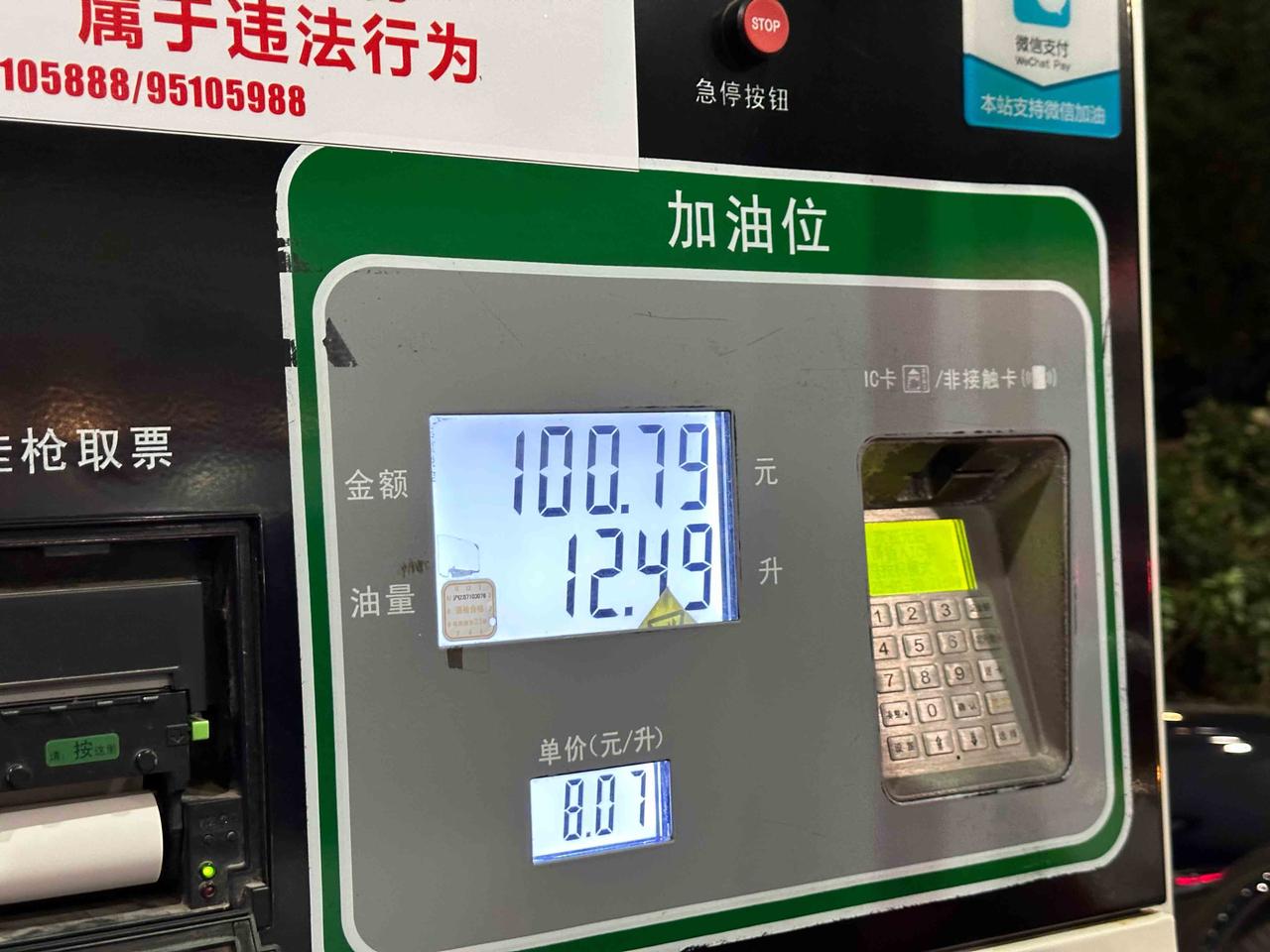
For the BMW X5 40 Li, the situation is a bit more exaggerated, due to the dynamically adjusted displayed range, which resulted in more remaining range at the end than at the beginning. However, when we look at it in sections, the estimated range of the BMW is still reasonable: on the congested road in the first 50km, the displayed range of the X5 dropped from 640km to 566km. On the smoother outer ring in the next 100km, the displayed fuel consumption dropped from 12.1 to 9.3 per 100 km, and the noted displayed range also increased from 566km to 659km at one point. The final fuel consumption tested was 9.78L per 100km, which is also 0.48L/100km different from the displayed range.

Ultimately, the city-based electricity-deficient fuel consumption of the Ideal L7 was 8.33L/100km, and BMW X5 40 Li was 9.78L/100km. At a price of 8.07 yuan/L for the 95-octane gasoline on that day, the Ideal L7’s cost per kilometer in the city was 0.67 yuan, while the BMW X5 was 0.8 yuan. When compared, the Ideal L7 still has advantages.
High-speed electricity-deficient fuel consumption: BMW X5 surprisingly wins
The high-speed test still uses fuel consumption to calculate, because the post-holiday highway conditions are relatively smooth, so we drove at almost 120 km/h for the entire journey, with an average speed of 106.4 km/h during the test. After a 334km test, the displayed fuel consumption of the BMW X5 40 Li was surprisingly locked at 8.0L/100km. At the cruising speed of 120km/h, the BMW B58B30C matches ZF 8AT, with a speed of only around 1,800 rpm/min, adding the help of the 48V mild hybrid system, the X5 can slide with minimal acceleration, and charging the battery slightly when braking, resulting in a fuel consumption of 8L per 100 km not being surprising.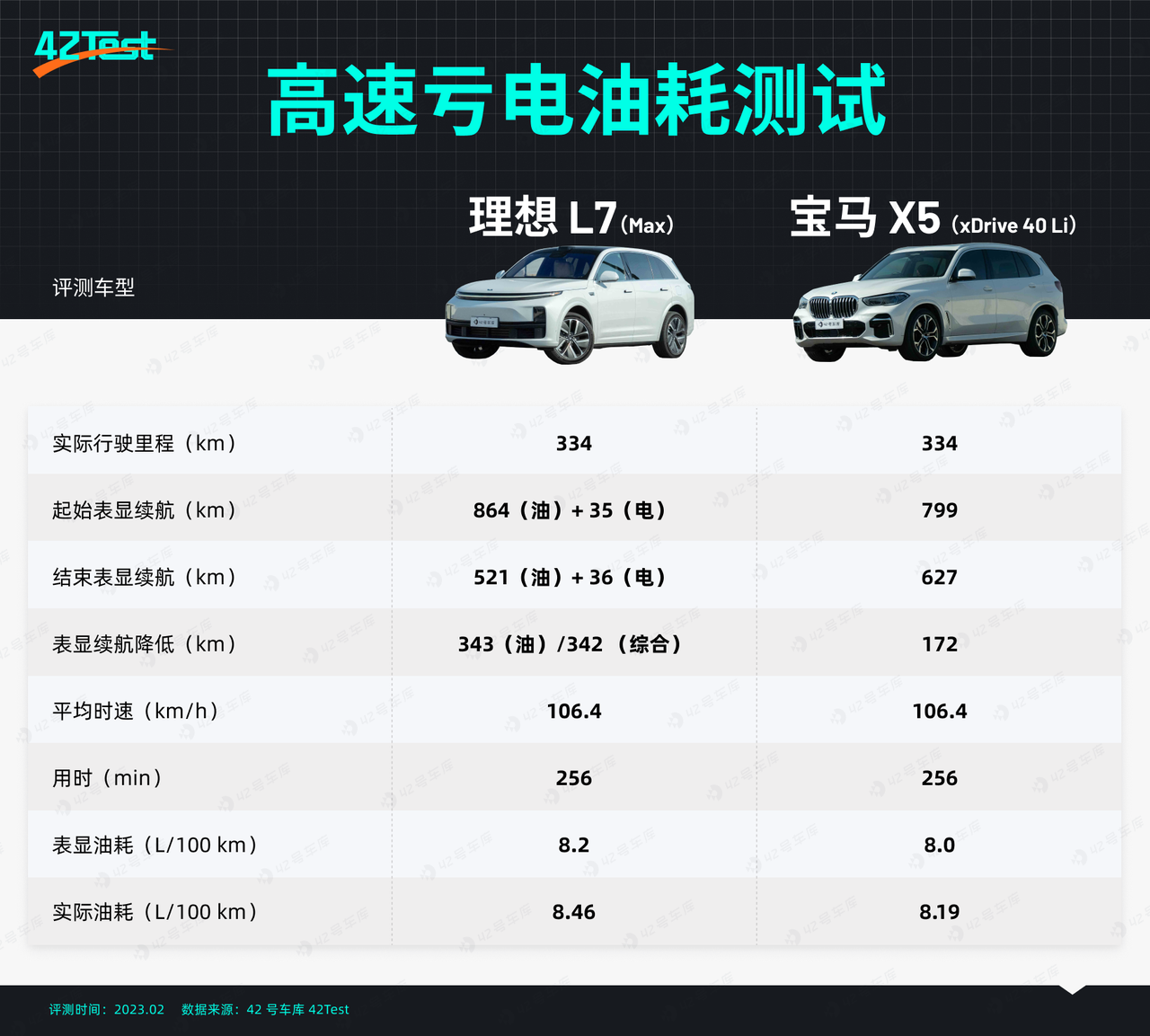
The final fuel injection amount of BMW X5 is 27.34 L, and its ideal counterpart L7 is 28.27 L. Converted to fuel consumption per 100 kilometers, BMW’s weak advantage of 8.19 L defeated ideal L7’s 8.46 L. With the price of 8.07 yuan/L for 95# gasoline on that day, BMW X5’s cost per kilometer on the highway is 0.66 yuan, while the ideal L7 is 0.68 yuan.
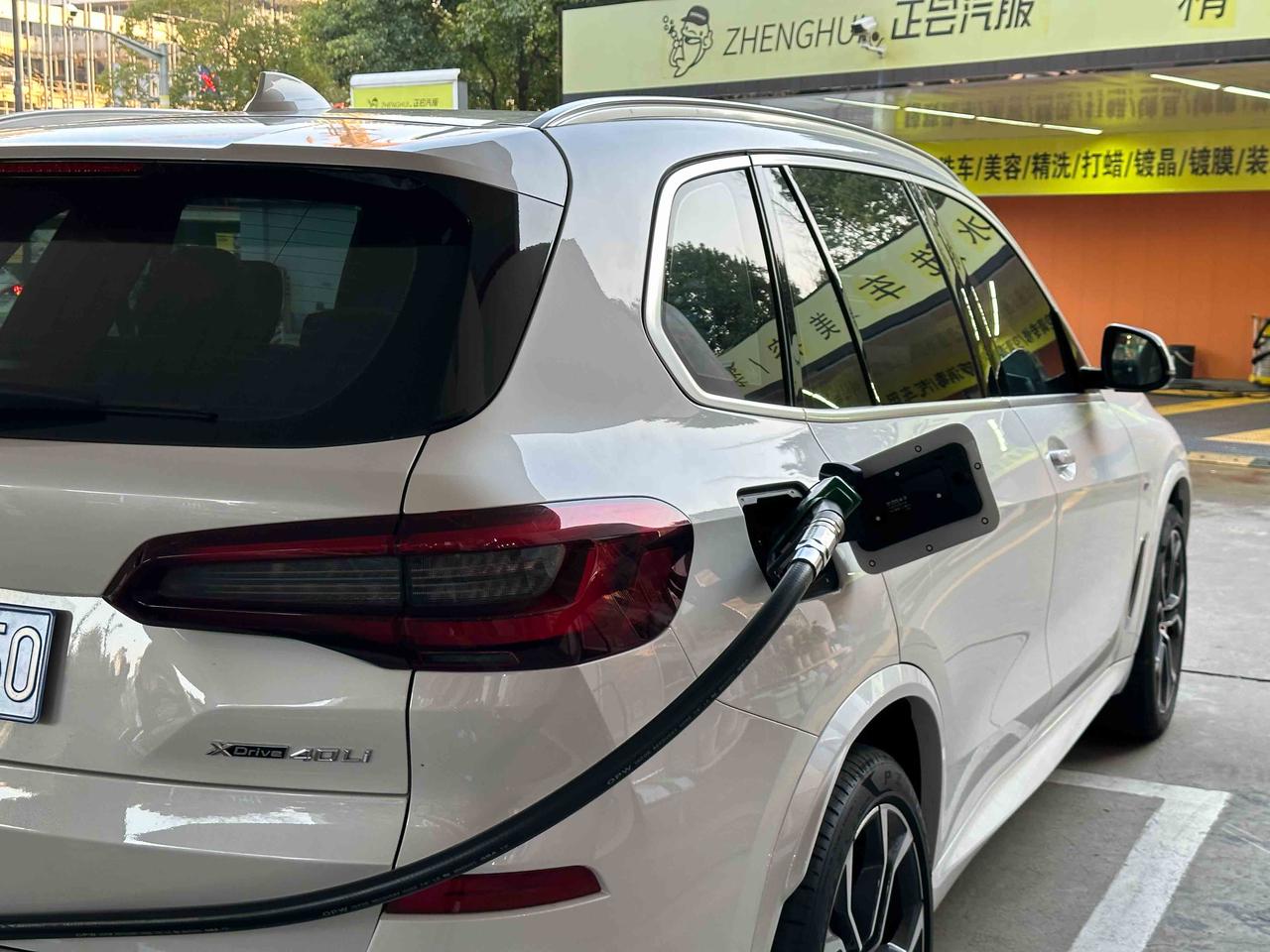
Let’s make a vertical comparison between L8 and L9 tested in October last year. Although there were differences in the test temperature and road conditions, the actual fuel consumption of the two cars was 8.9 L/100 km and 8.7 L/100 km respectively, which were not much different with L7. L7 only had an increase of 1 km in pure electric endurance after 334 km, which can be ignored. This also indicates that, like L8 and L9, L7 will always keep the battery level at around 20% in the hybrid mode, and any excess electricity will be used directly for vehicle driving.
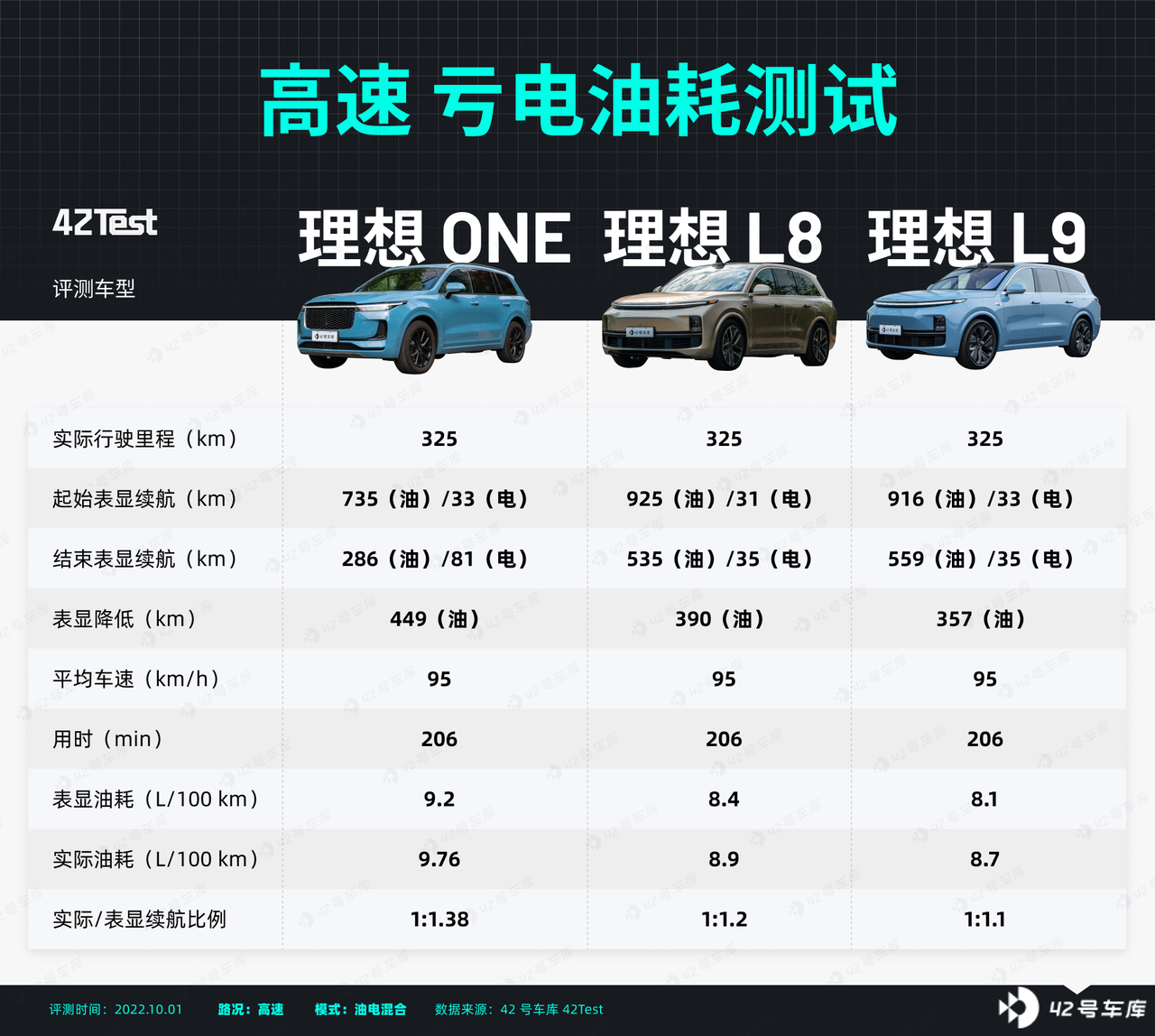
Pure electric endurance in urban areas
In addition to the deficit fuel consumption in urban and highway modes, we also tested the pure electric endurance of the ideal L7. The ideal L7 is equipped with a 42.8 kWh ternary lithium battery pack, which actually has 37.7 kWh available, exactly the same as that of the ideal L8; the battery pack of the ideal L9 is slightly larger at 44.5 kWh, and the actual available power is 39.2 kWh.
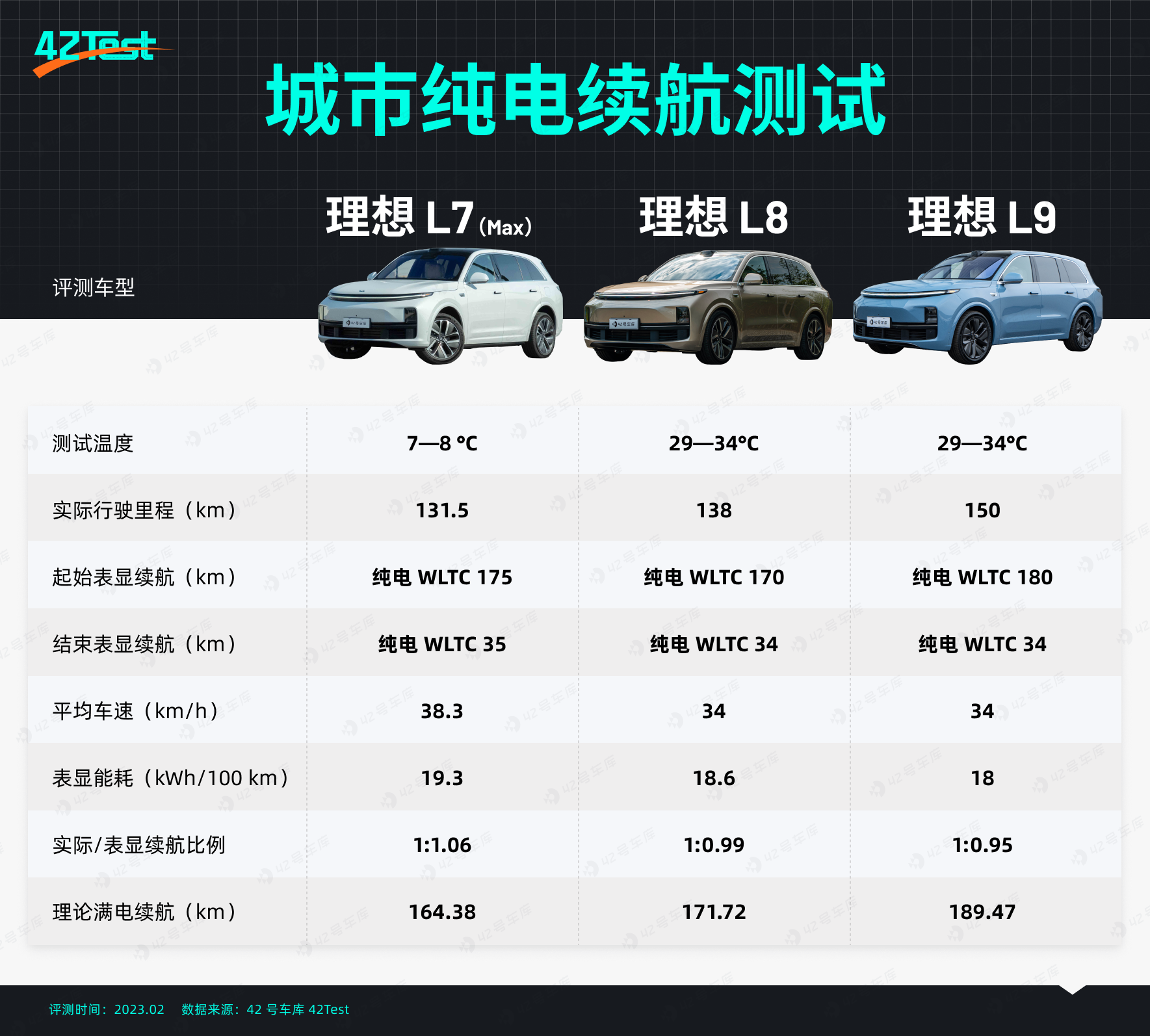
For the same 150 km urban pure electric endurance test, the ideal L7 automatically started its range extender after driving 131.5 km, and the WLTC pure electric endurance was still 35 km with a SOC of about 20%. The displayed energy consumption was 19.3, which was higher than the L8 and L9 tested in October. The two reasons why L7’s energy consumption performance was slightly worse than the other two models are due to its higher average speed of 38.3 km/h and the weather conditions.Due to the fact that the testing of the Ideal L7, L8, and L9 was conducted in early October, during the hot season with temperatures ranging around 30 degrees celsius, the air conditioning was set at 22 degrees Celsius with a 2-speed wind and A/C mode during this summer-standard test. The testing temperature for the Ideal L8 was only around 8 degrees Celsius, and without the booster activated, the air conditioning’s heating from the PTC heater consumed more power. If the testing conditions were to be unified, theoretically there wouldn’t be any significant difference for L7 and L8 in actual testing conditions as the power-down curves for both L7 and L8 were almost identical.
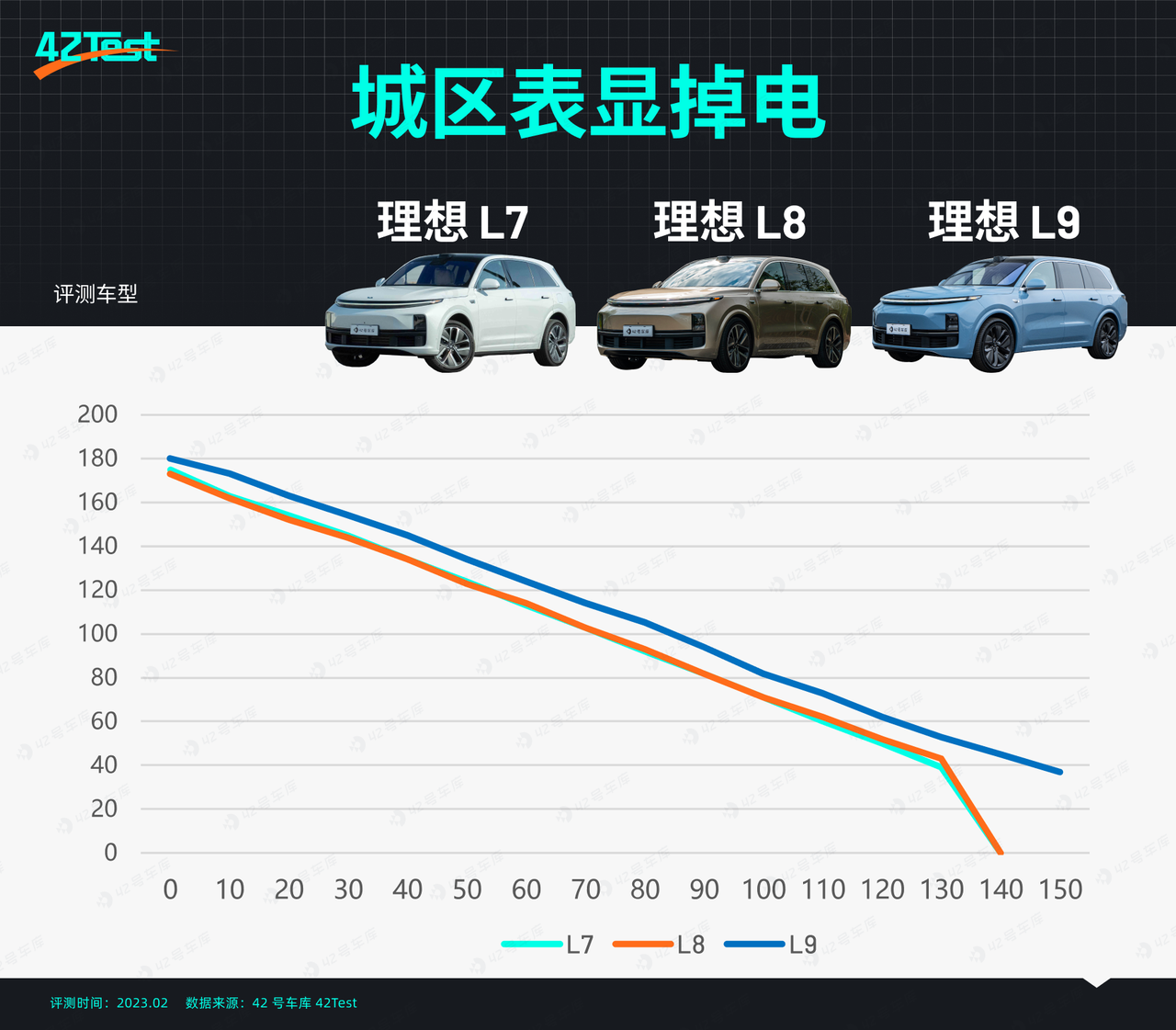
Concerning its energy consumption performance, the Ideal L7’s performance is as expected. In fact, the L8, which uses the same powertrain and battery pack size, already gave us a similar impression back in October last year. It consumes 7-8 L/km in urban areas and 8-9 L/km on highways. We can say that the L7 has run the same test one more time in a different season. The BMW X5 included in this test took us by surprise as its 3.0T+8AT+48V Mild Hybrid could achieve such low fuel consumption. The L7, with similar powertrain performance, had a sense of competition with it.
Charging Test
In the profile of Ideal car owners, there is a high probability of using pure electric mode in daily life. Therefore, after testing the pure electric’s range, we immediately tested the charging data.

The maximum peak power of the Ideal L7 is 68 kW, which was reached at 40% of the State of Charge. After that, the current started reducing until the power was maintained only at 16 kW at 95%. It takes only 26 minutes to charge in the Fast-Charging Area from 5% to 80% in daily life, and 21 minutes from 80% to 95%, which is almost as fast as the time required to charge the initial 75%. It is suggested that we stop the charging process at around 80% during the daily fast-charging process since, on the one hand, the power drops sharply after 80%, which incurs higher time costs, and, on the other hand, prolonged high-voltage status of the Lithium-ion battery will cause some degree of battery degradation.## Driving Experience: Could Be More Sporty!
In terms of powertrain and chassis, the Ideal L7 and L8 are completely identical. After the energy consumption test, we want to briefly talk about the specific performance of the Ideal L7 from the aspects of performance and subjective driving experience.
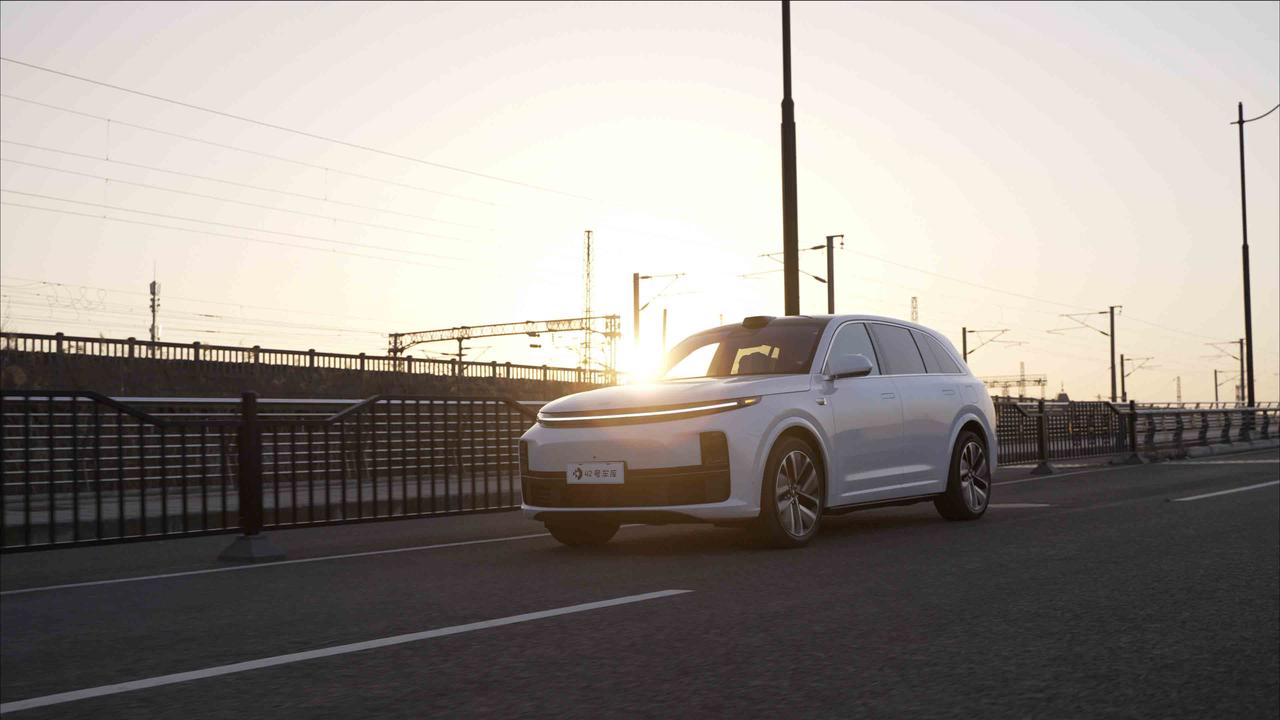
Performance Test
The Ideal L7 is equipped with the same 330 kW dual-motor powertrain as the L8/L9, with front motor of 130 kW and rear motor of 200 kW, and a maximum torque of 620 N·m, with official acceleration score of 5.3 seconds per 100 km. The maximum output power and torque of BMW X5 xDrive40 Li Luxury M Sport Package are 245 kW and 450 N·m respectively, with an official acceleration score of 6 seconds per 100 km.

After ten consecutive 100 km acceleration tests with SOC over 80%, the average score of the Ideal L7 is 5.78 seconds, which is about 0.4 seconds slower than the official score. The official score of L9, which has the same acceleration score of 5.3 seconds per 100 km as the L7, was tested by us ten times before and the average score is 5.84 seconds. Therefore, the score of the L7 is reasonable. Moreover, the acceleration score of 5.78 seconds is more than enough for a midsize SUV. In comparison, the BMW X5, with weaker dynamics and a lighter body, achieved an average acceleration score of 5.69 seconds, which was even 0.3 seconds faster than the official score of 6 seconds.
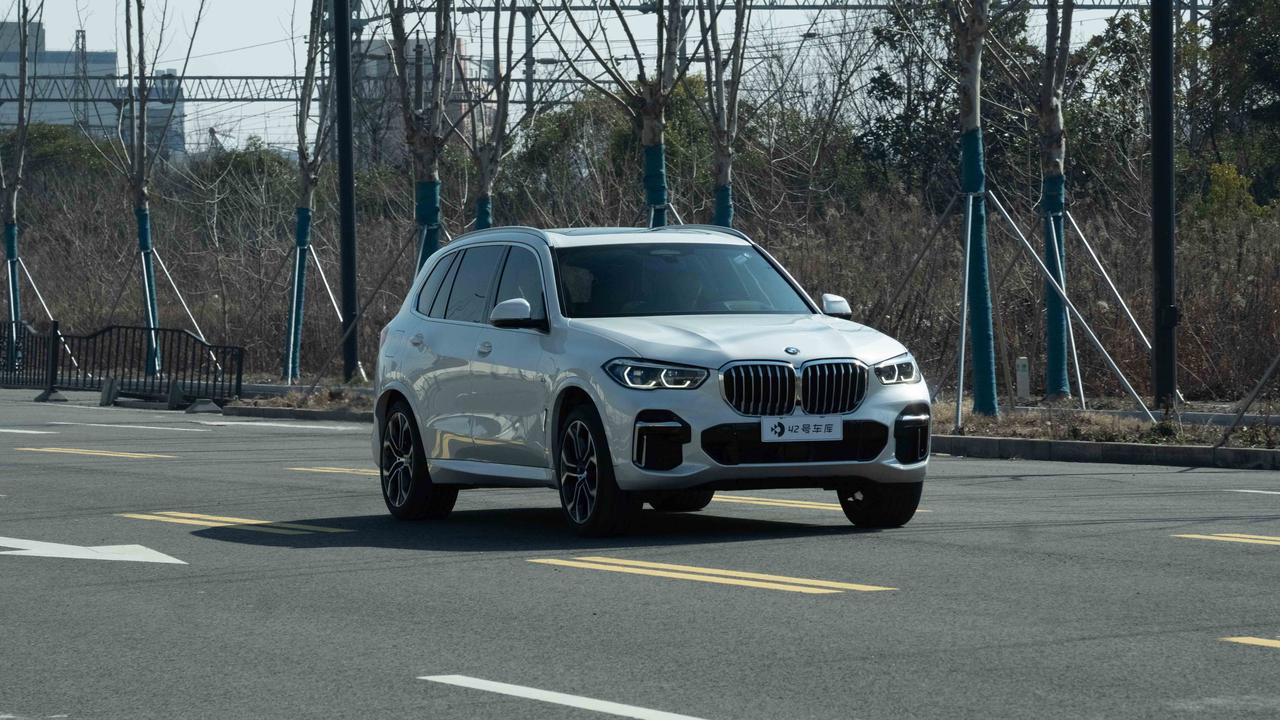
However, the ten consecutive braking scores of the Ideal L7 surprised me greatly. The average stopping distance of the ten times is only 32 meters, which is also due to the four brand new Michelin PS4 tyres on the car. Theoretically, the BMW X5, with a lighter weight and wider tyres, will have better results when equipped with the M brake calipers. However, the Pirelli P0 tyres on our X5 have already travelled 20,000 kilometers and the tyre condition is relatively average. Therefore, the ten consecutive braking score is 34.25 meters, which is also a relatively good result.
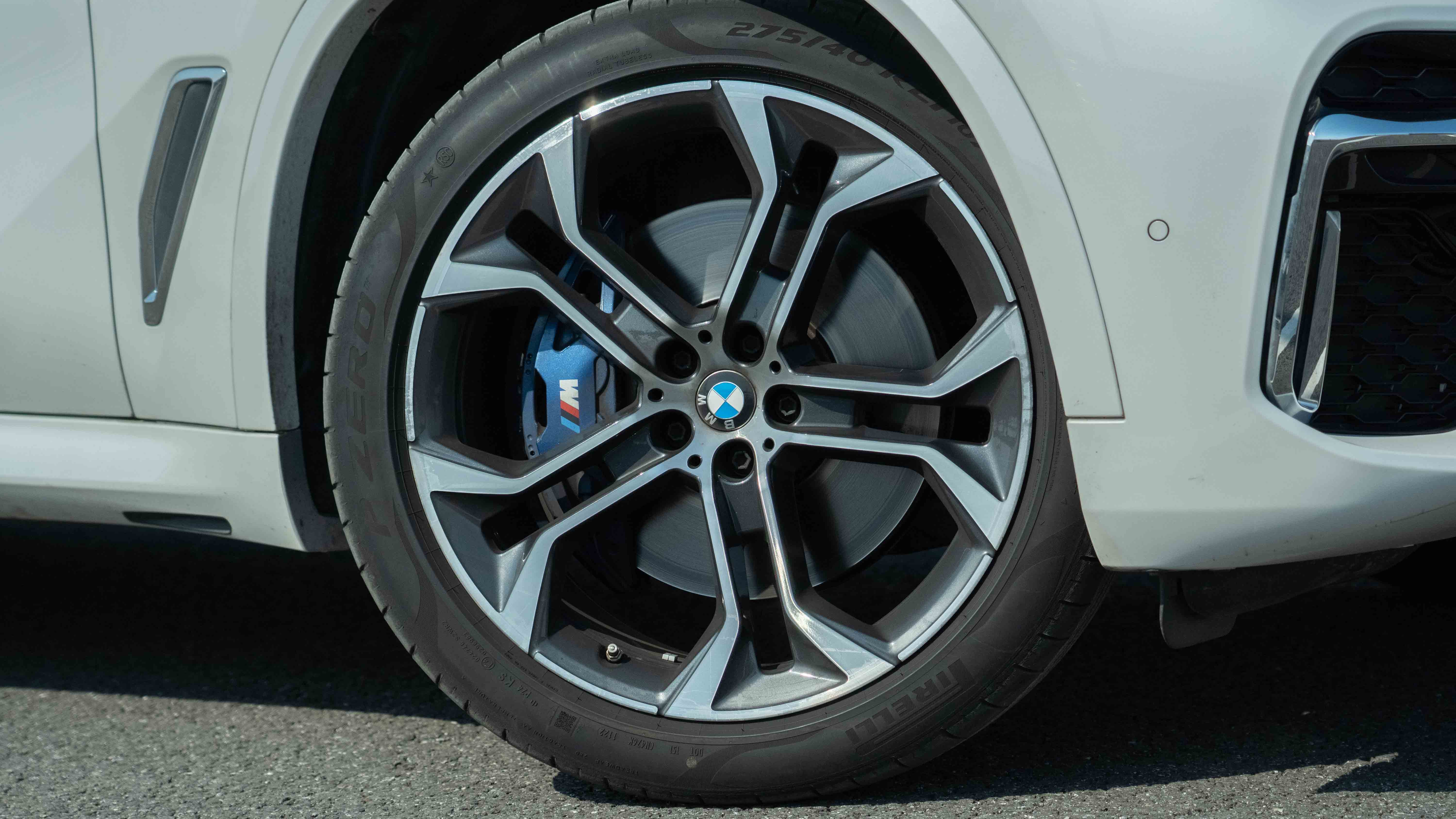
Driving Experience
For mid-to-large-size SUVs with labels such as five seats, four-wheel drive, and high performance, we generally associate them with sporty SUVs. Moreover, after many same-platform SUVs are turned into five-seaters, they become more sporty. For example, Volkswagen Group has developed sportier driving experiences for the five-seat Touareg X based on the 7-seat Touareg, and the same is true for the Macan and Cayenne. Therefore, I also have some expectations for the sporty driving experience of the Ideal L7.

After nearly 1,000 km of actual driving experience, the driving experience of the Ideal L7 is still very good, and it is difficult for ordinary people to distinguish whether it is an L7, L8, or L9 if blindfolded. The same air suspension, CDC electromagnetic shock absorber, and self-developed XCU central domain controller present the strong floating comfort in the Ideal L7.
The joints and small bumps on the elevated road surface will absorb most of the vibration of the L7/L8/L9, and neither the seat nor the steering wheel will directly transmit the so-called road feel. We mentioned during the L8 test before that this suspension system will retain some high-frequency vibrations, such as rough asphalt particles that can be transmitted into the car more clearly.
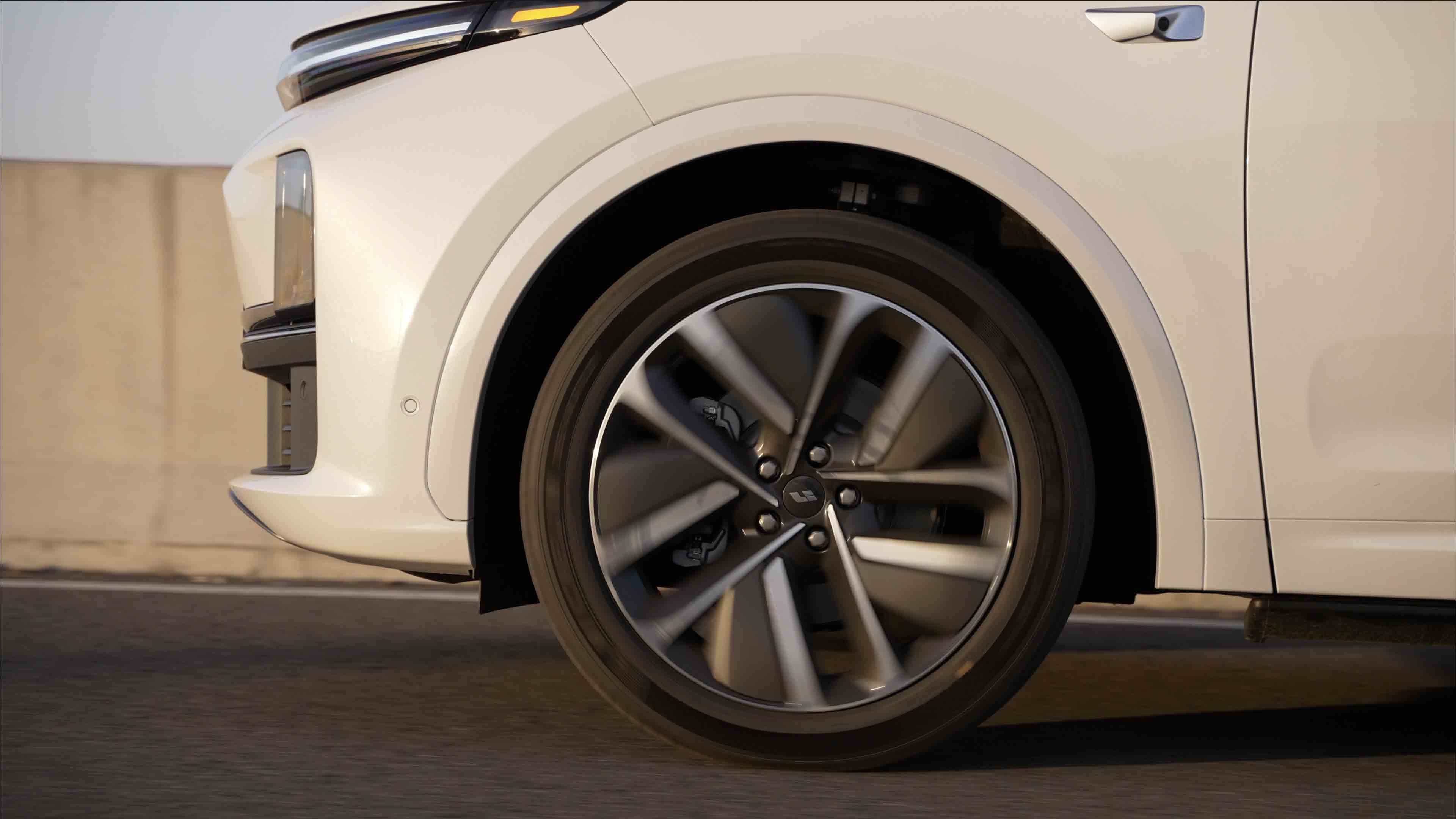
When driving L7 in the underground garage these two days, I found that the feeling of passing speed bumps is slightly better than that of L8/L9. When passing speed bumps at medium and low speeds (about 20 km/h), L8/L9 can feel slightly more aftershocks from the rear axle after passing the speed bump than the front axle, similar to the feeling of an MPV. This phenomenon is optimized on L7, mainly because the tail of L7 is shorter and there is one less row of seats, making the rear of the car lighter, which improves overall ride quality.
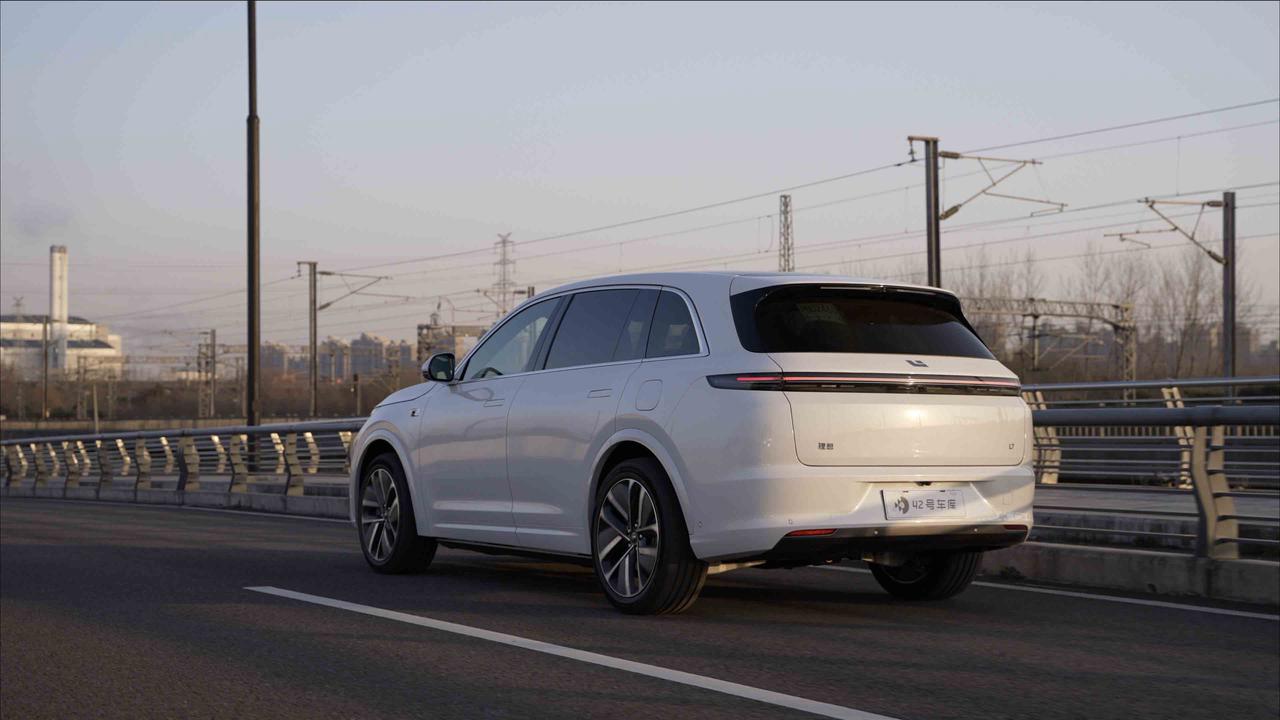 I seamlessly switched between the BMW X5 during the test, and the most noticeable difference was that the X5 lost some of its heaviness, but gained stronger mechanical and road sensations. The X5’s performance has become more agile, sporty, and responsive when changing lanes due to its lighter weight, stiffer suspension, and more responsive rear end, which is a beat slower than the ideal L7 to follow. Moreover, mid-to-high-frequency vibrations, such as bumps and ripples on the road, will be conveyed into the cabin without any reserve. With its V6 engine and M Sport exhaust roar, the X5 is more provocative and stimulates the desire to drive fiercely.
I seamlessly switched between the BMW X5 during the test, and the most noticeable difference was that the X5 lost some of its heaviness, but gained stronger mechanical and road sensations. The X5’s performance has become more agile, sporty, and responsive when changing lanes due to its lighter weight, stiffer suspension, and more responsive rear end, which is a beat slower than the ideal L7 to follow. Moreover, mid-to-high-frequency vibrations, such as bumps and ripples on the road, will be conveyed into the cabin without any reserve. With its V6 engine and M Sport exhaust roar, the X5 is more provocative and stimulates the desire to drive fiercely.
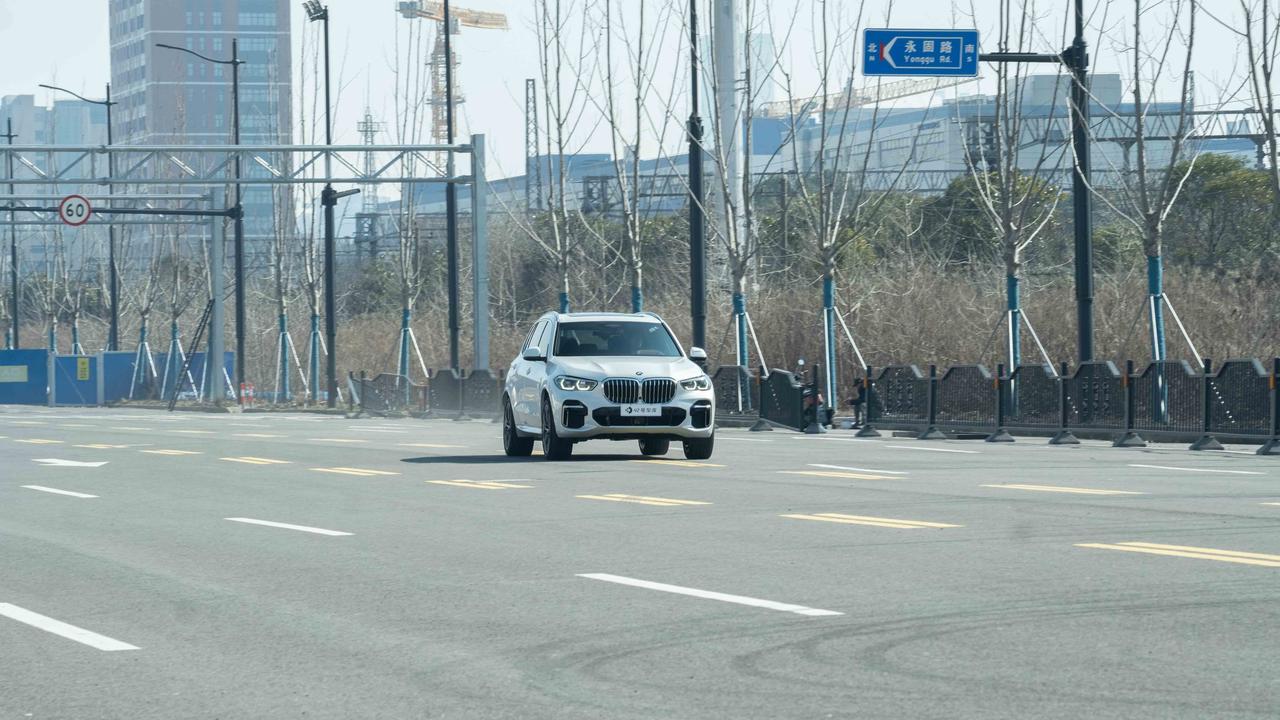
Speaking of exhaust roars, let’s also mention the NVH (Noise, Vibration, and Harshness) performance of the two vehicles. In pure electric mode, the L7 has an absolute advantage, thanks in part to the double-layer laminated glass used on both the front and rear doors. Even when the range extender is operating, the L7’s performance is also outstanding. In contrast, the BMW X5’s decibel level is slightly higher than that of the L7, but the difference is not significant when the engine is working. In actual experience, the noise source of the L7 is relatively even, and there is no particular flaw. However, in the X5, tire noise will be slightly more pronounced, which is closely related to the front and rear tire widths of 275 and 315 respectively.
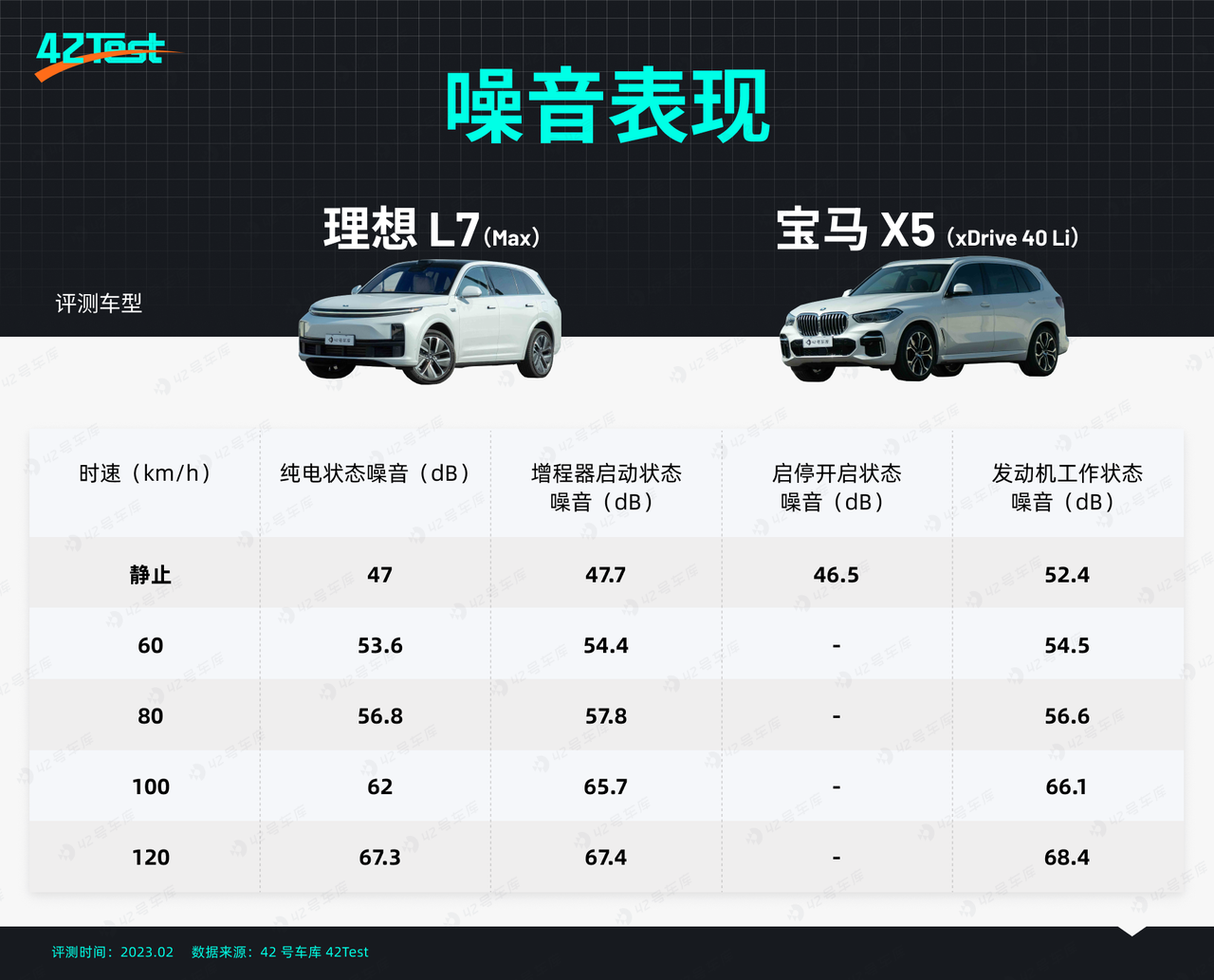
But looking back at the ideal L7, after all, its official positioning is a family five-seat SUV, comfort should be the top priority that L7 needs to strive to achieve, and the fact is that it has done just that. The strong isolation and superb comfort of the L7 are not attainable by the X5. Driving the L7 with your family comfortably in the city is what it should do. The sportiness of the ideal L7 has reached 50% of that of the BMW X5, and if you don’t pursue the ultimate handling performance, the L7 can also meet the needs of most people for driving fast.
ADAS: Good basics with differences in the later stages
The Ideal L7 we tested this time is the Max version, which costs 40,000 yuan more than the Pro version, and its cost is more focused on ADAS hardware. The hardware of the Ideal L7 Max is still of high specifications with the Ideal AD Max, including 1 128-channel LiDAR, 2 8 million forward-looking vision cameras, 4 8 million side-view vision perception cameras, 1 2 million rear-view camera, 1 forward microwave, and 2 NVIDIA Orin-X ADAS chips jointly providing 508 TOPS of computing power.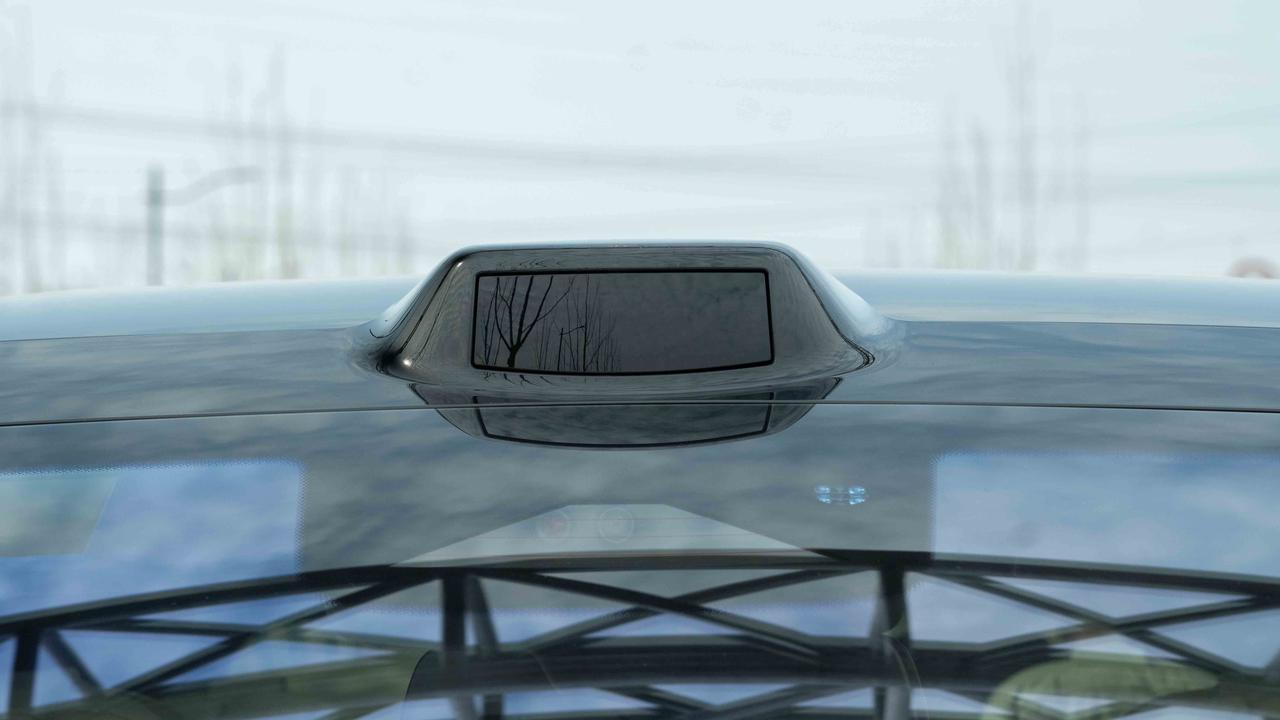
The front three-eyed visual perception + Mobileye EyeQ4 visual processing chip combination on the BMW X5 is widely used in many joint venture brands such as BMW, Volkswagen and Ford. The X5 xDrive 40Li Exclusive M Sport Package comes standard with the Pro autonomous driving assistance system, which mainly includes basic L2 and directive lane changing functions, but the richness of the functions falls short of desirable NOA.
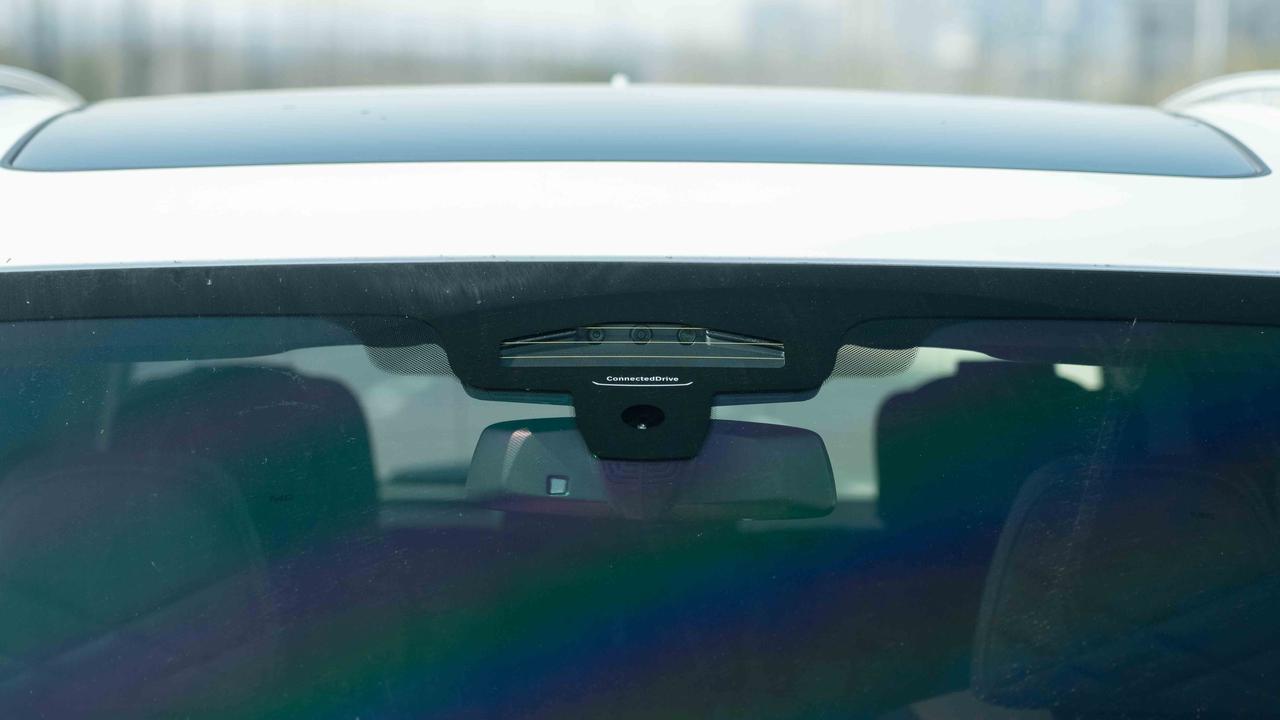
Currently, the performance of both vehicles in basic assisted driving is good, with stable LCC, gentle acceleration and deceleration of ACC, and no need to worry too much about cornering ability. BMW also has ASSIST PLUS for basic assisted driving, which can provide city congestion assistance below 60 km/h. The vehicle will confirm the driver’s state through DMS and the state does not need to be frequently confirmed through the capacitive steering wheel, further improving the convenience of basic assisted driving.
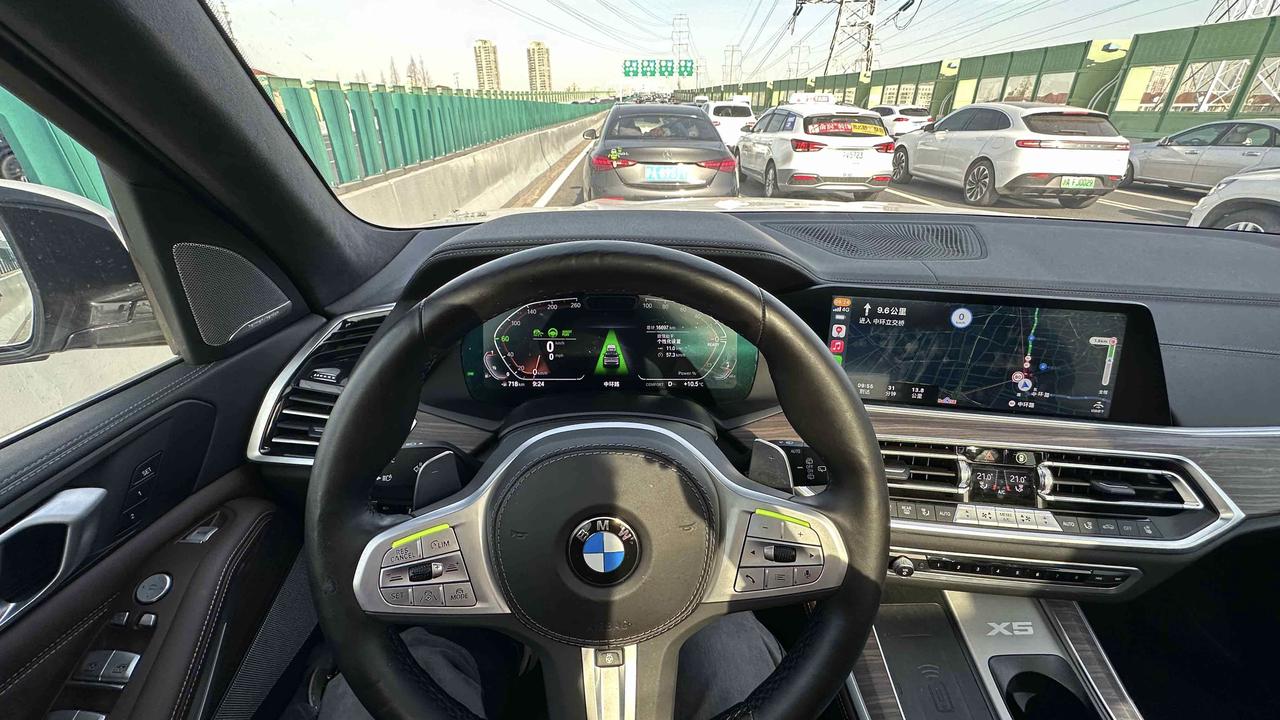
But looking forward, BMW’s limit has been reached. And Ideal AD Max is about to really unleash the full potential of this heavily armed assisted driving hardware. With the promotion of subsequent city NOA, the vehicle will free up more of the driver’s energy, but for now, NOA still requires the driver’s attention to be focused on the road. Whether it is high-speed NOA or city NOA, they need to be further polished. Interested friends can check out our latest issue of 42Mark: “2,400 km Test, 8 T Material, Who is the best navigation assisted driving system?.”
Conclusion
Through this comparison, we can see that the scores of Ideal L7 and BMW X5 are pretty even in many actual test data items. As a benchmark for large five-seater SUVs in luxury brands, the BMW X5 can be said to be fighting back against Ideal L7 in terms of cabin, space, comfort, acceleration, handling, energy consumption and intelligence. The overall experience is not inferior to the benchmark.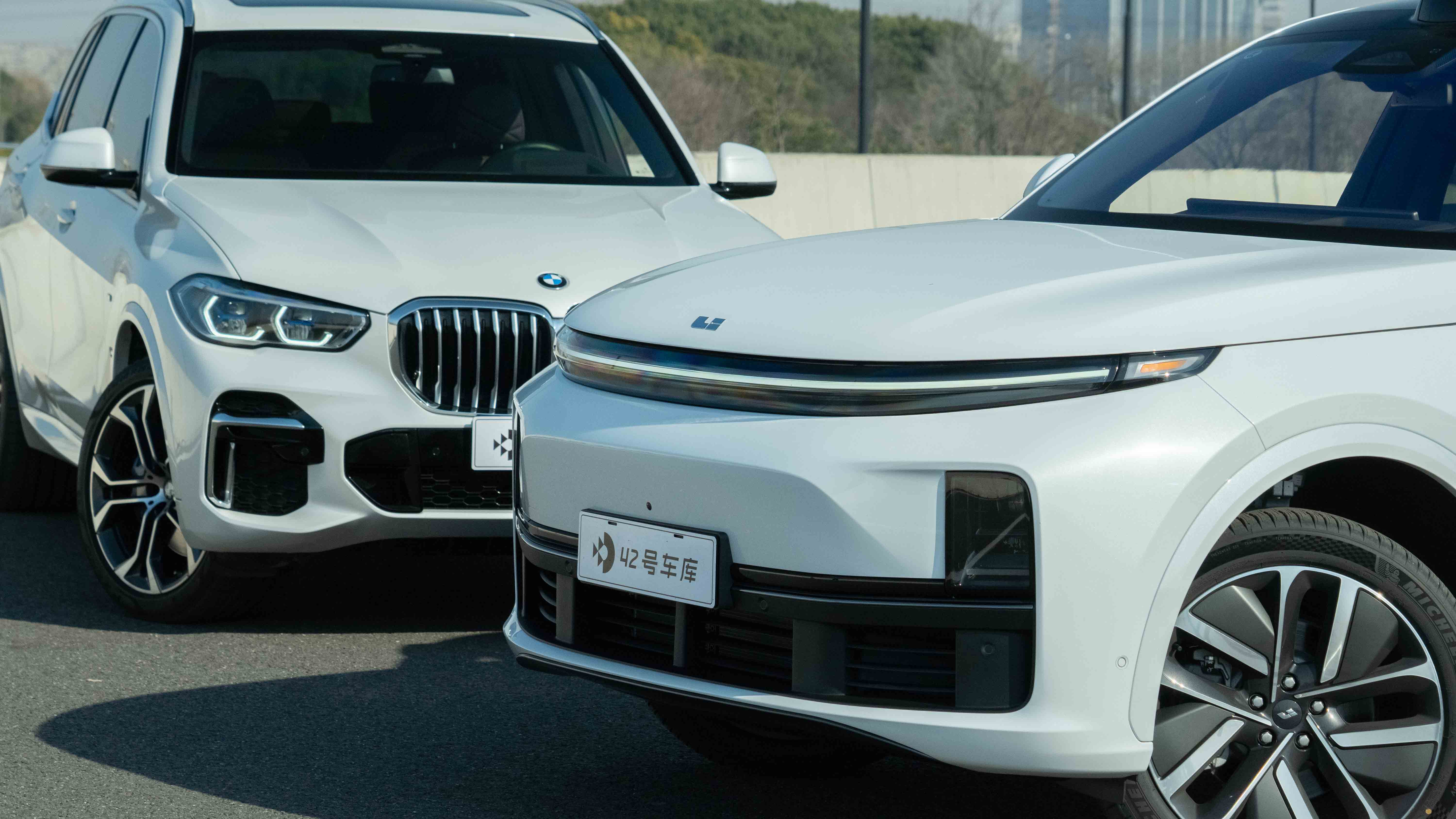
However, comparing the 3,798,000 yuan Ideall L7 with the 789,000 yuan priced BMW X5 is not meant to highlight how competitive L7 is in the market against BMW X5. Instead, it is to emphasize how strong L7’s product power is within the price range of around 350,000 yuan. Among joint venture luxury brands, for the same price range, you can only buy BMW X3, Audi Q5L or Mercedes GLC, which are positioned as mid-size SUVs. Since Ideall L7 can compete head-to-head with BMW X5, it is indeed overtaking its competitors in terms of product power in facing the three lower positioned cars.
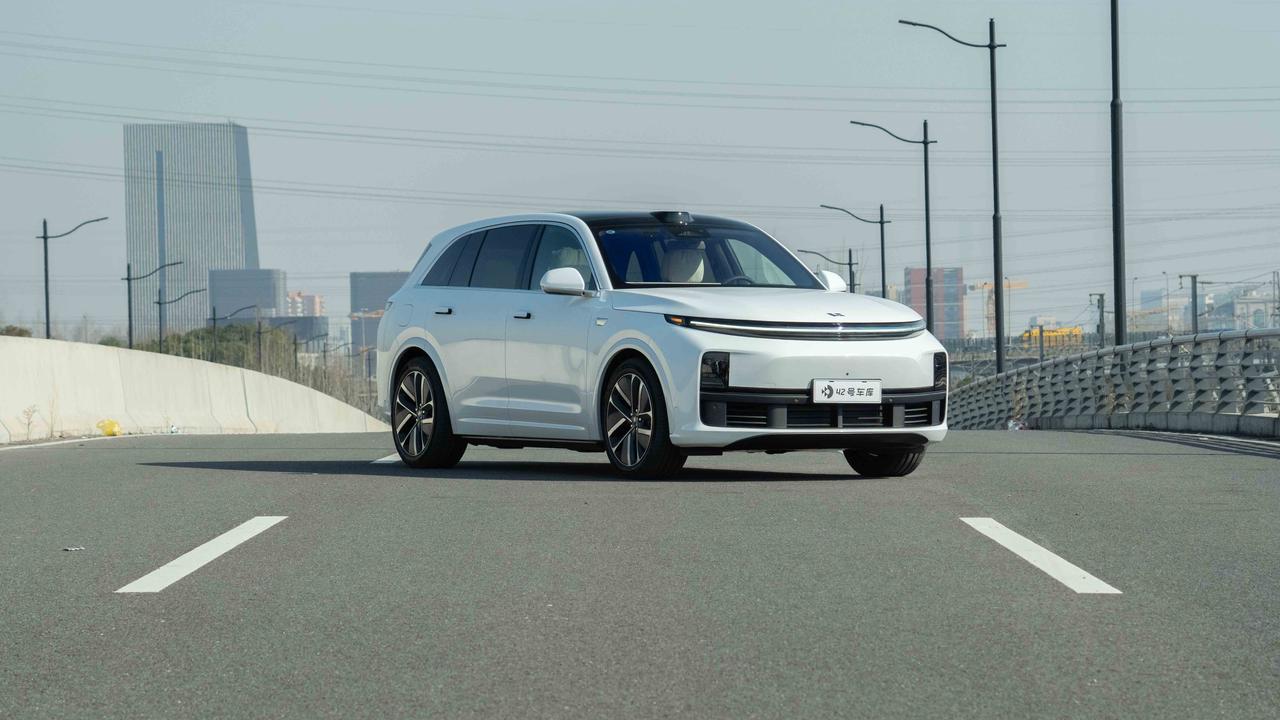
Therefore, in the price range of 350,000 yuan, Ideall L7 is a product that far exceeds its peers in terms of performance, space and comfort, and intelligent functions are also the highlight of L7. As for whether or not to choose L8 for the extra 20,000 yuan, it depends on your own needs. If you have a need for six people to travel, choose L8. If you have a need for loading capacity, choose L7. If you don’t have a need for either of these, as the most entry-level Ideall model, L7 is a very cost-effective medium to large five-seater SUV.
This article is a translation by ChatGPT of a Chinese report from 42HOW. If you have any questions about it, please email bd@42how.com.
